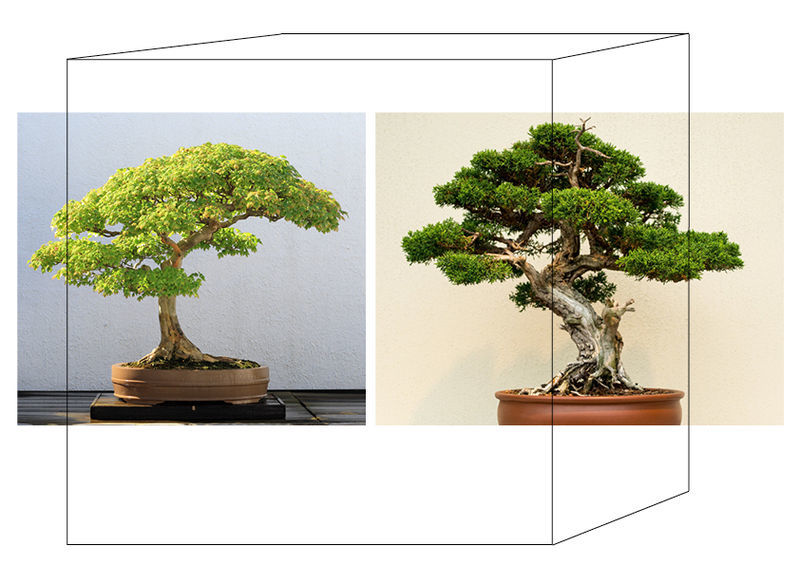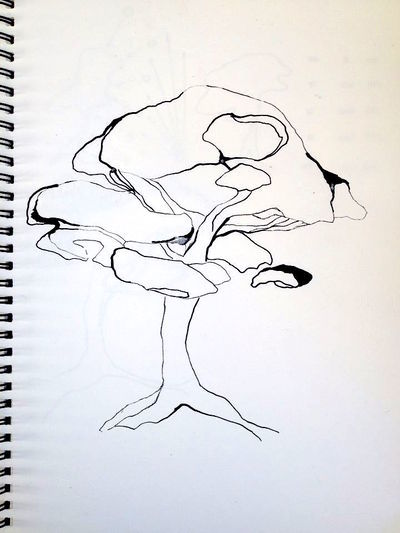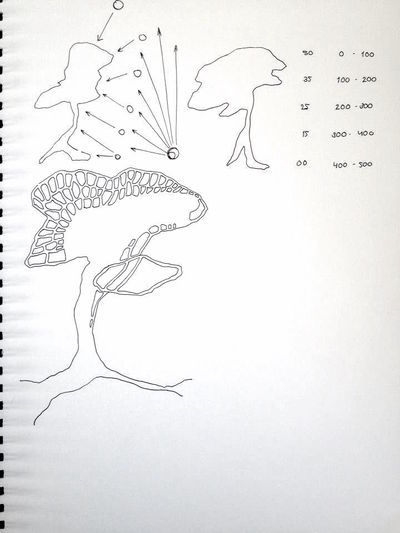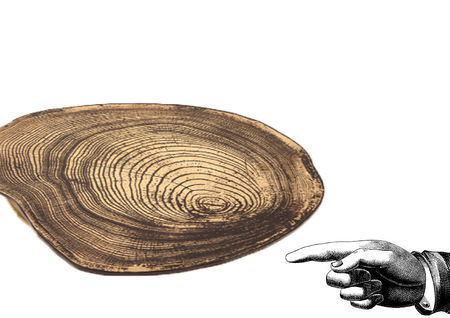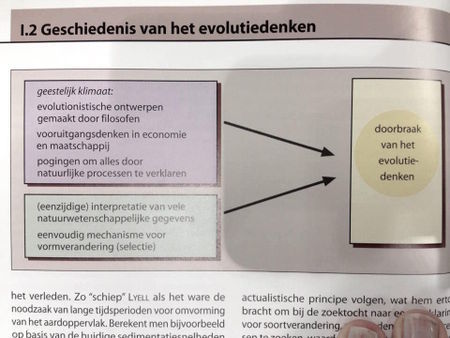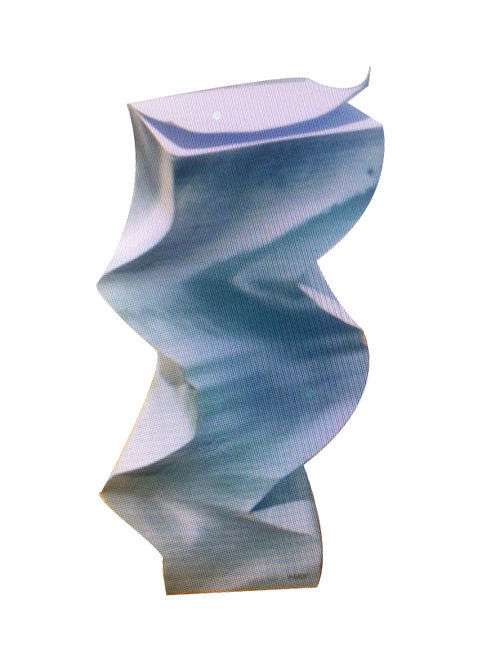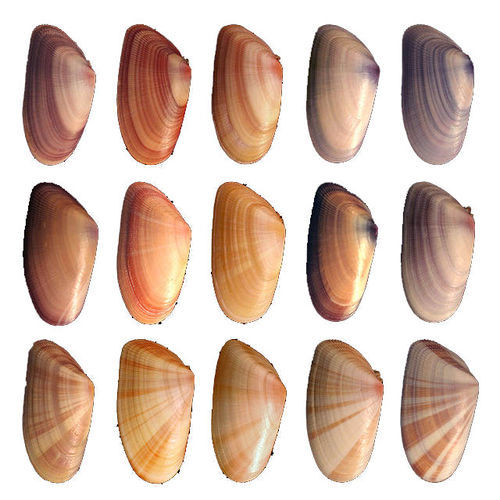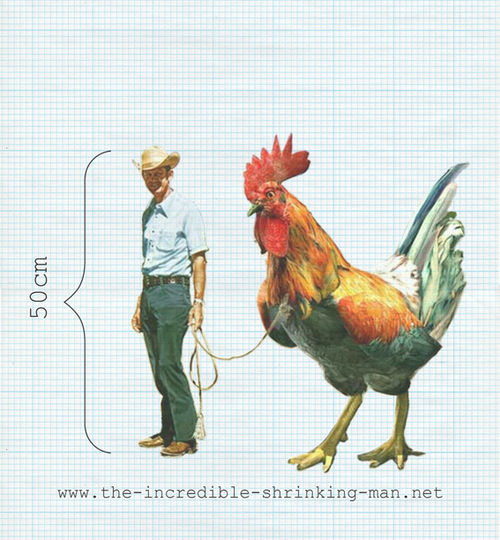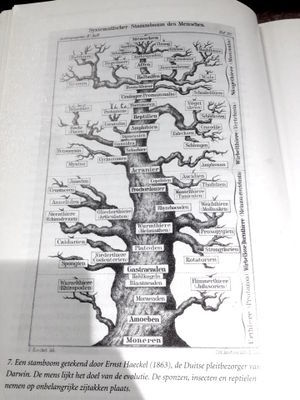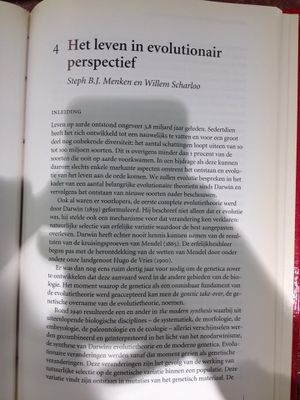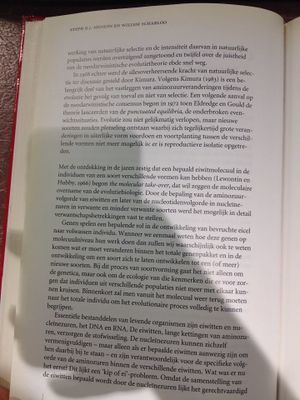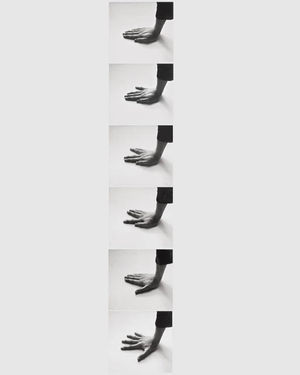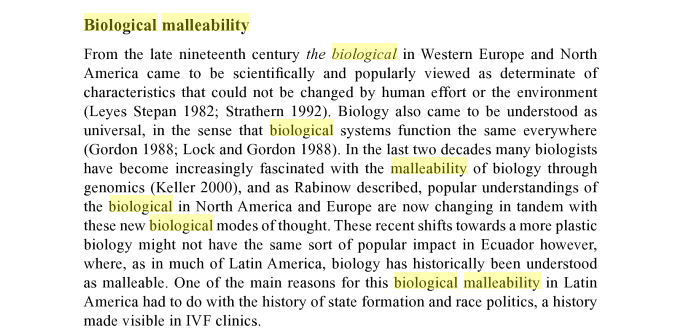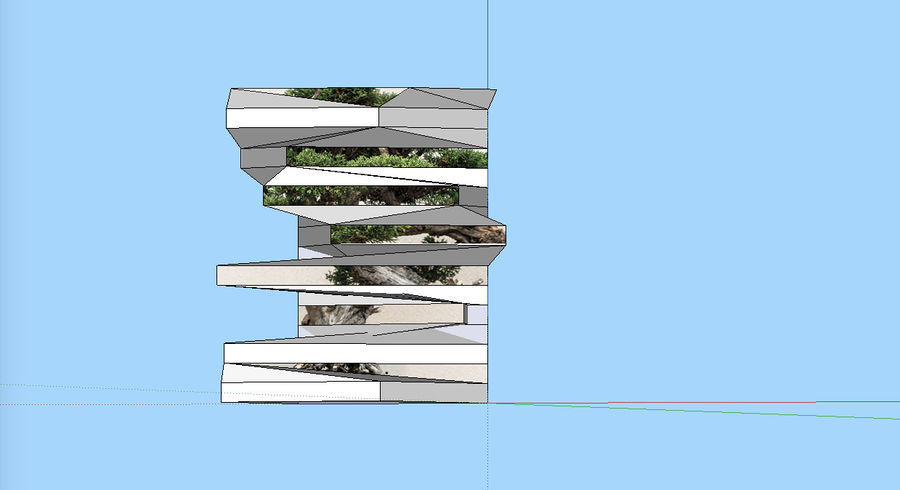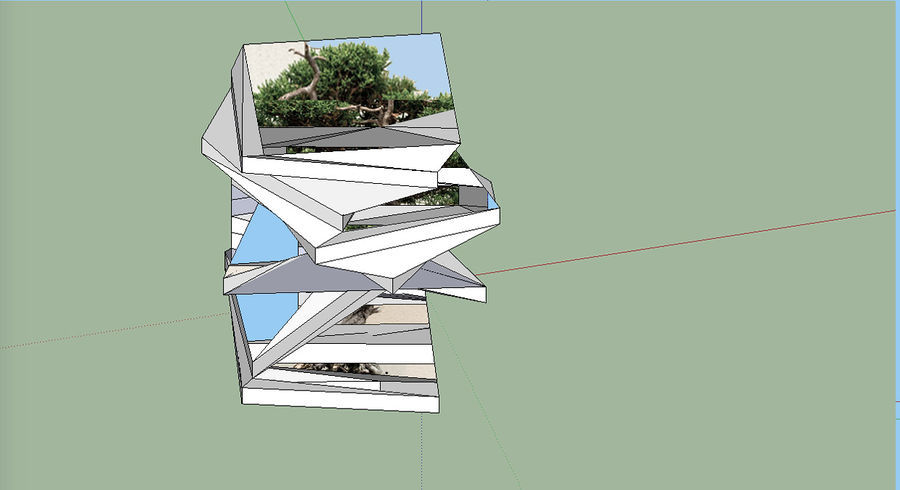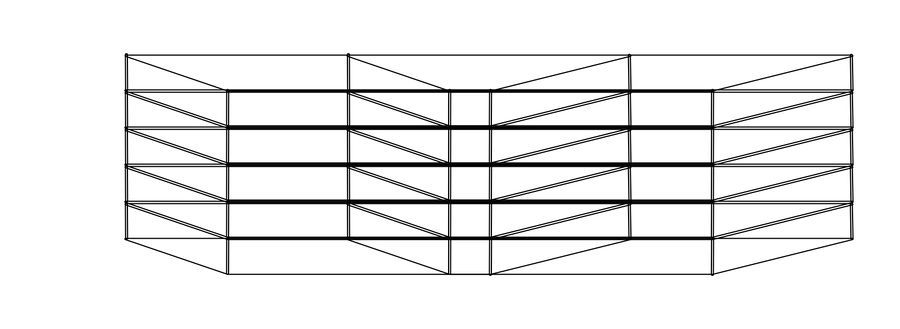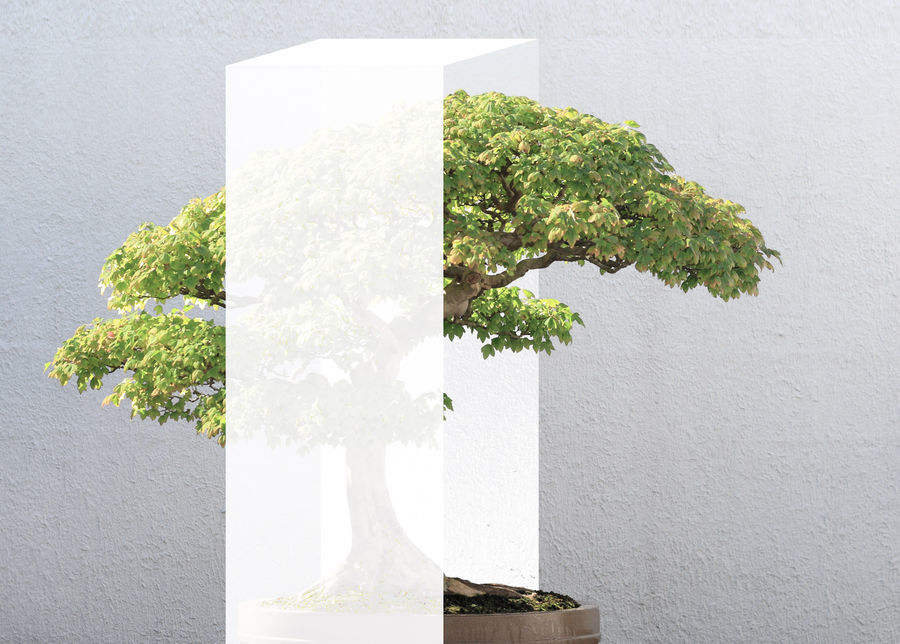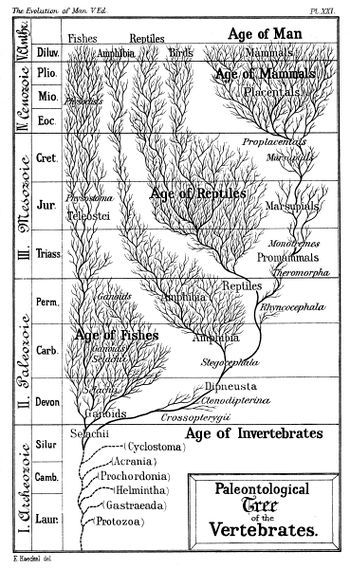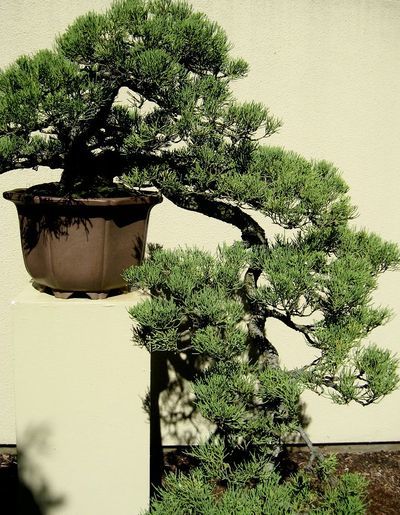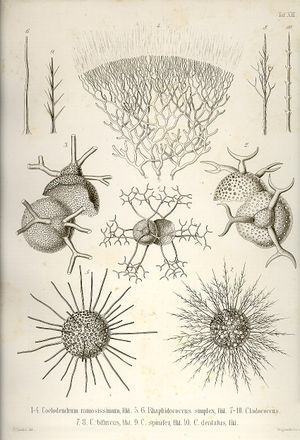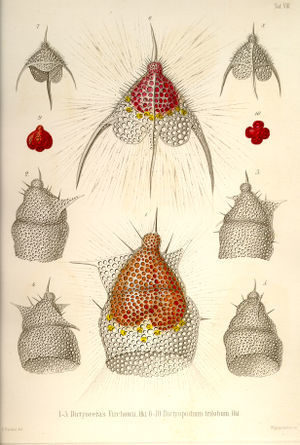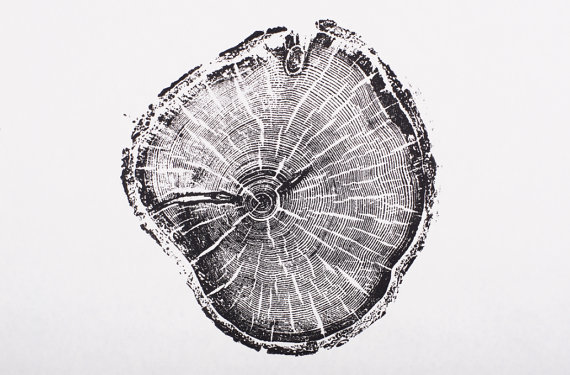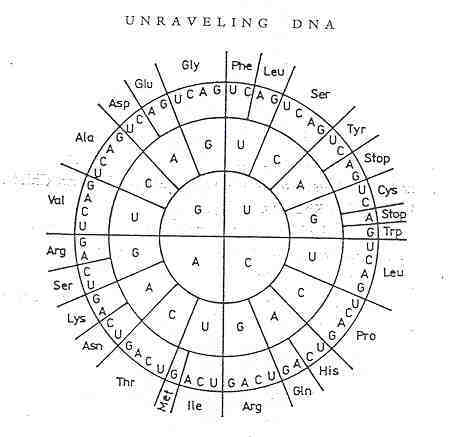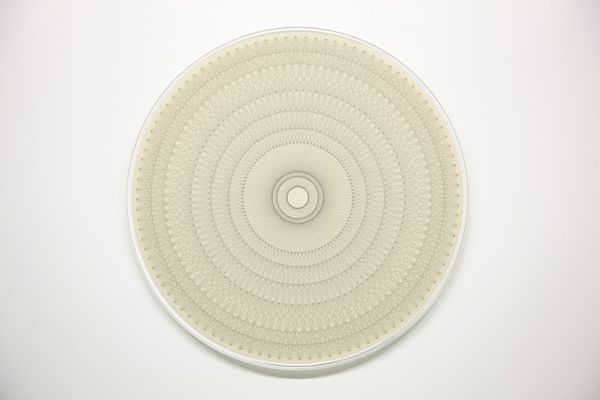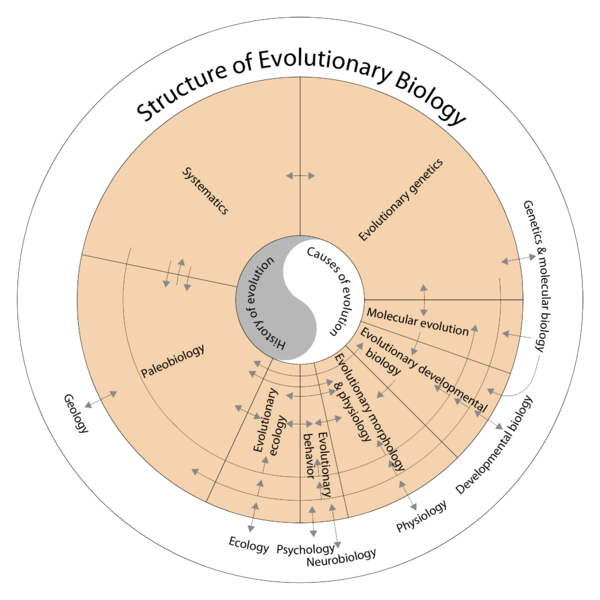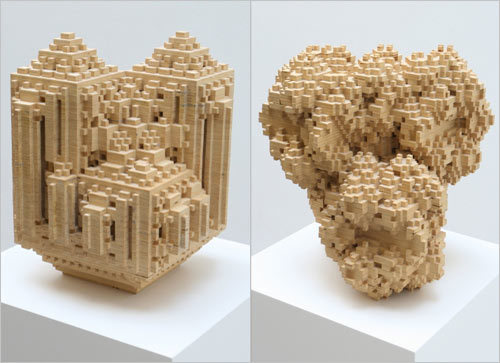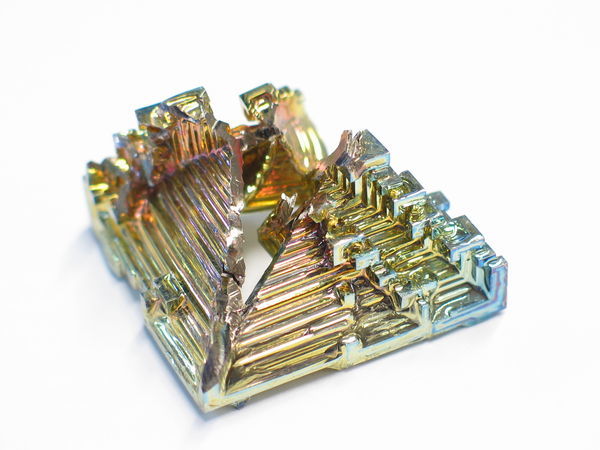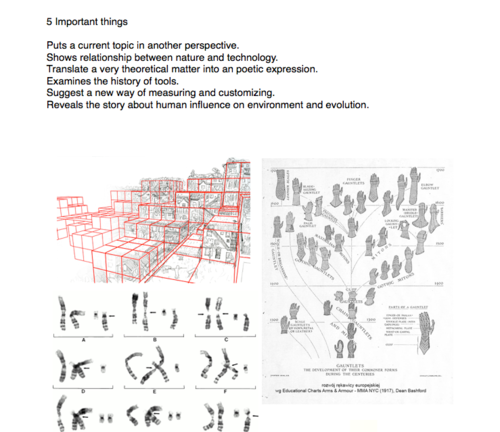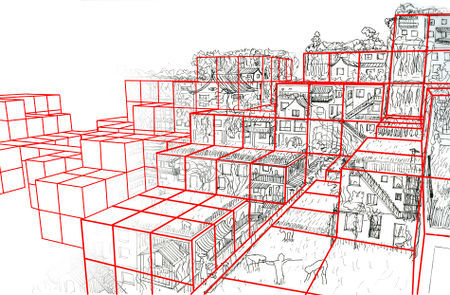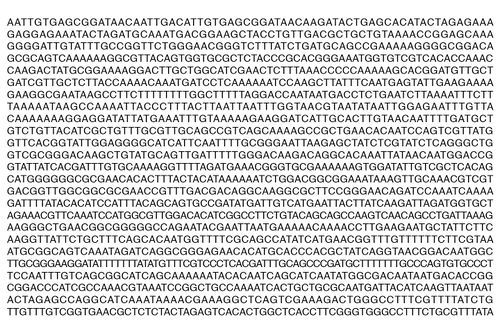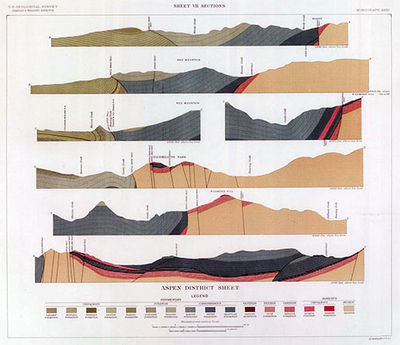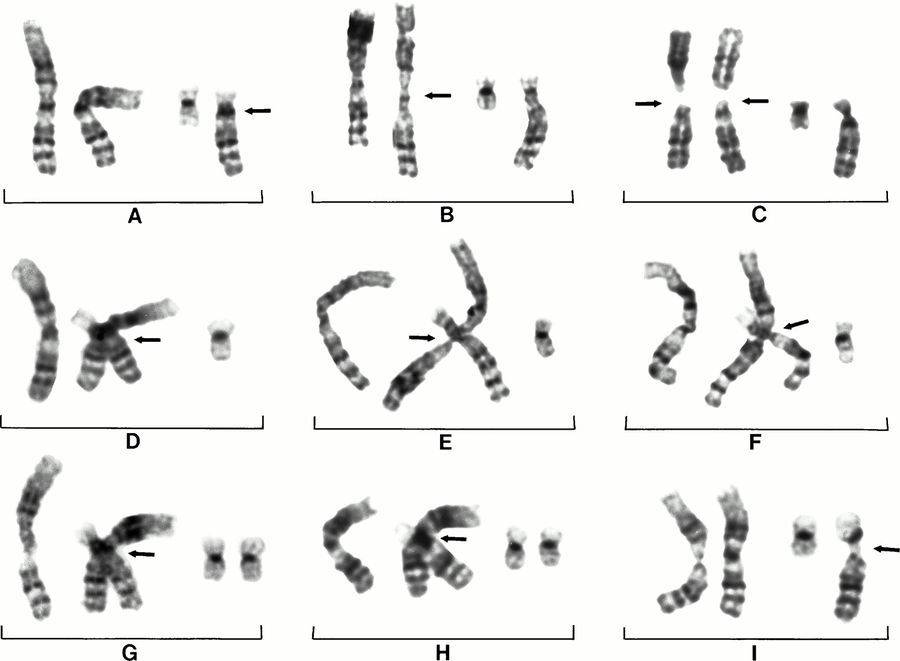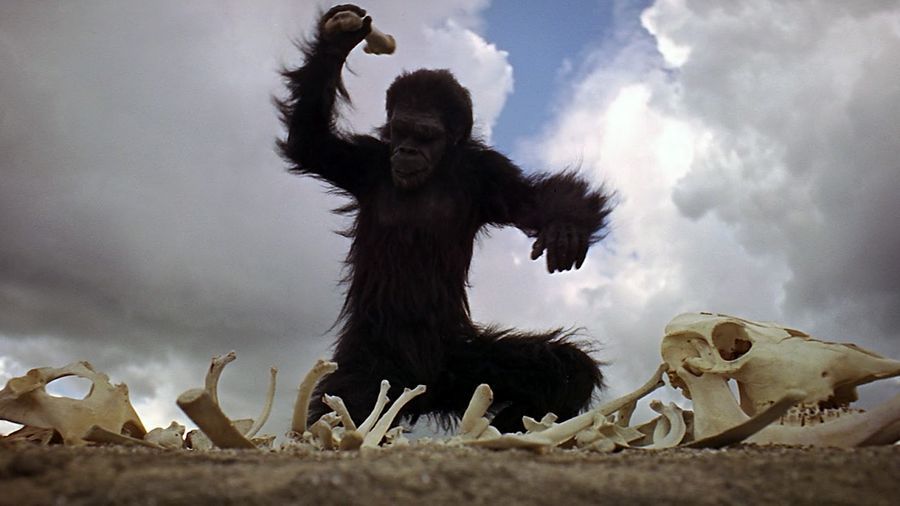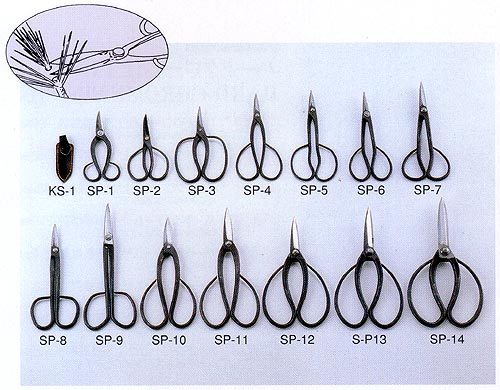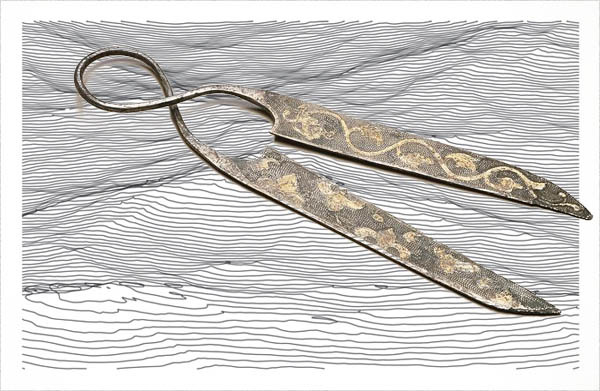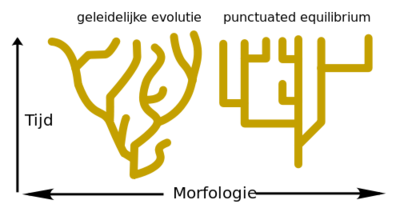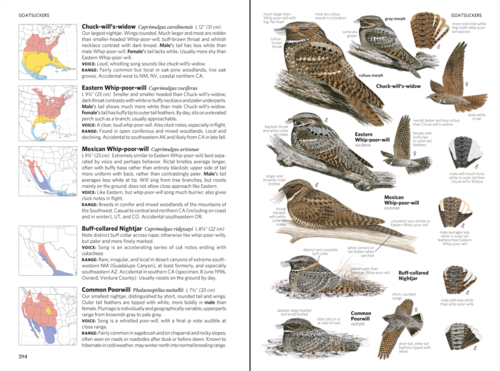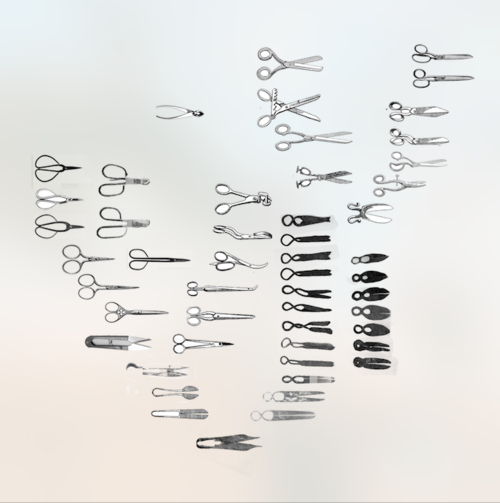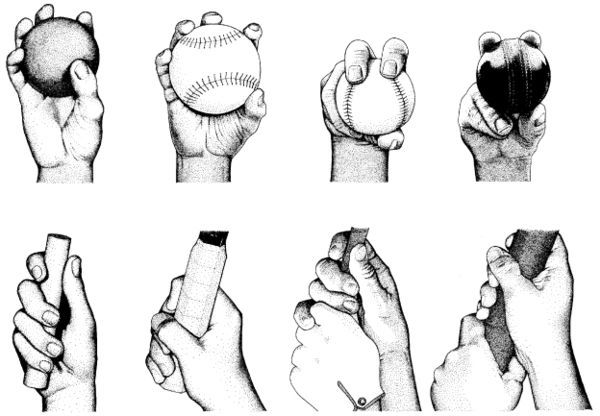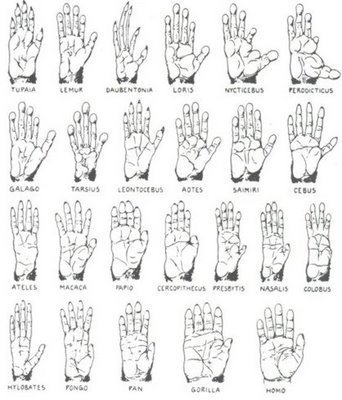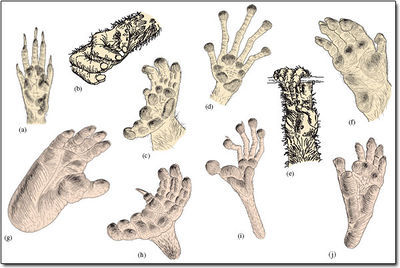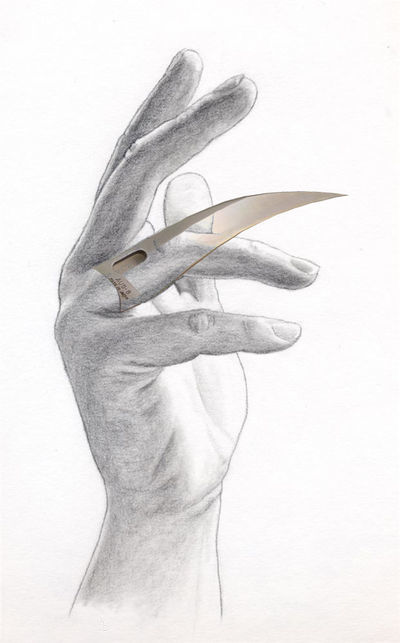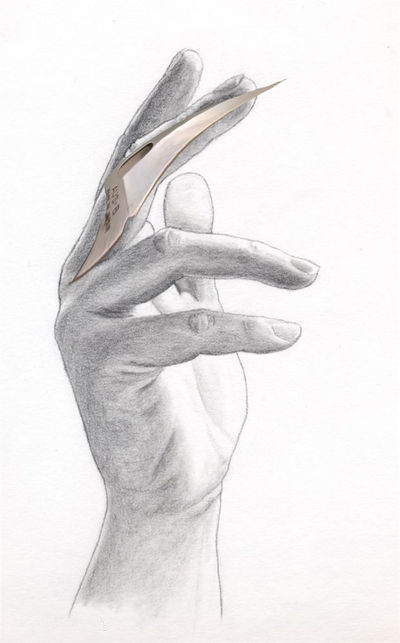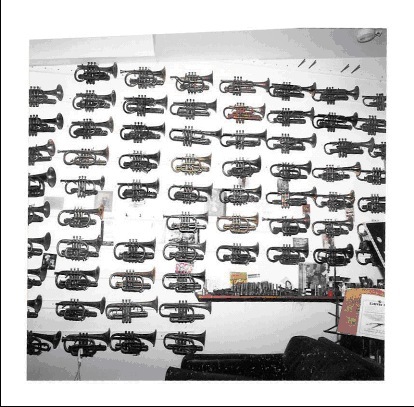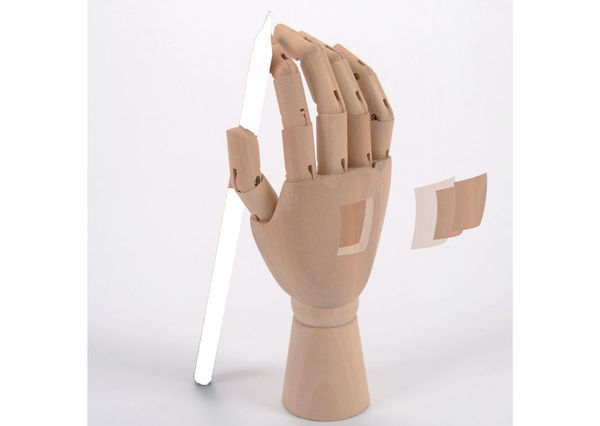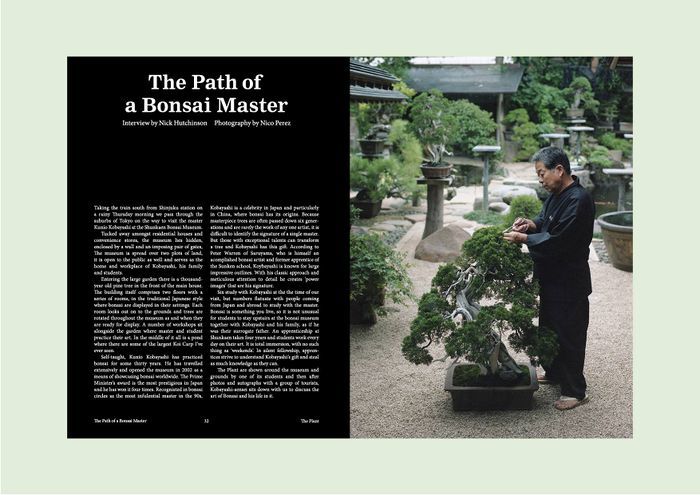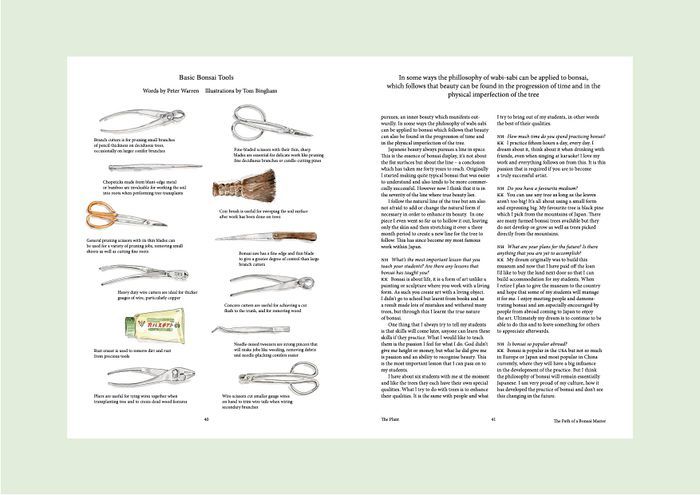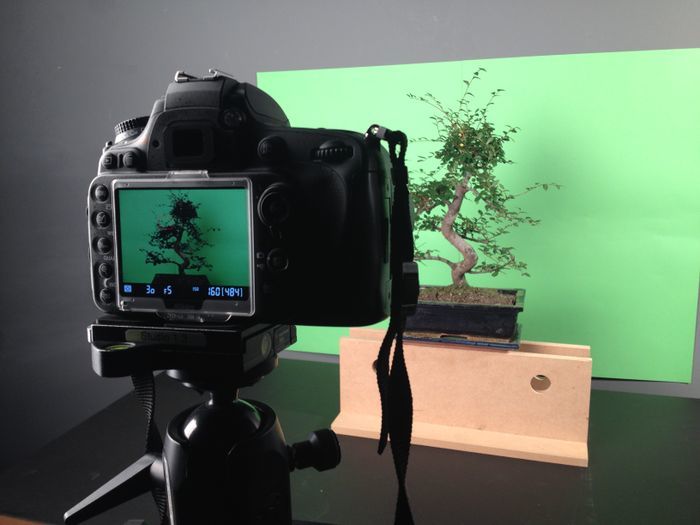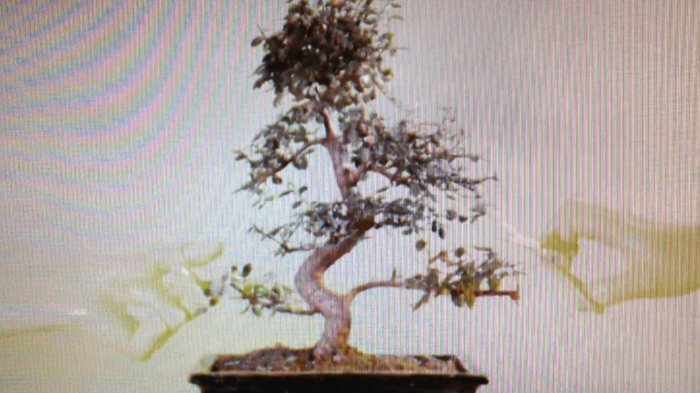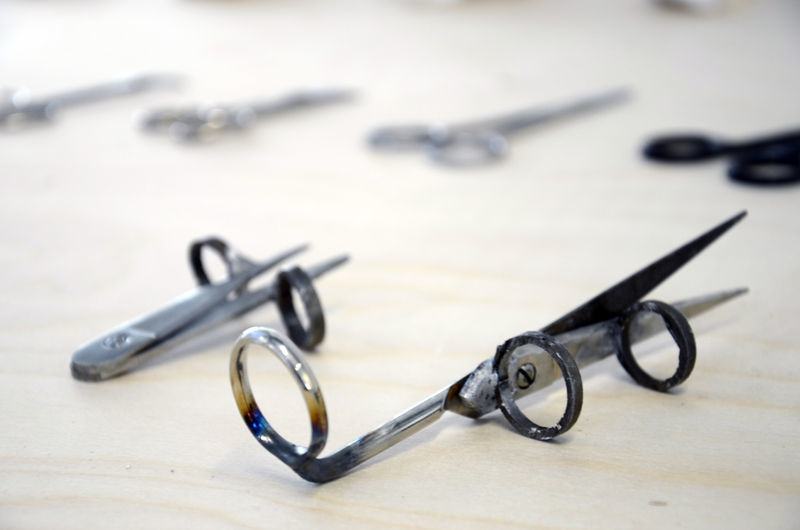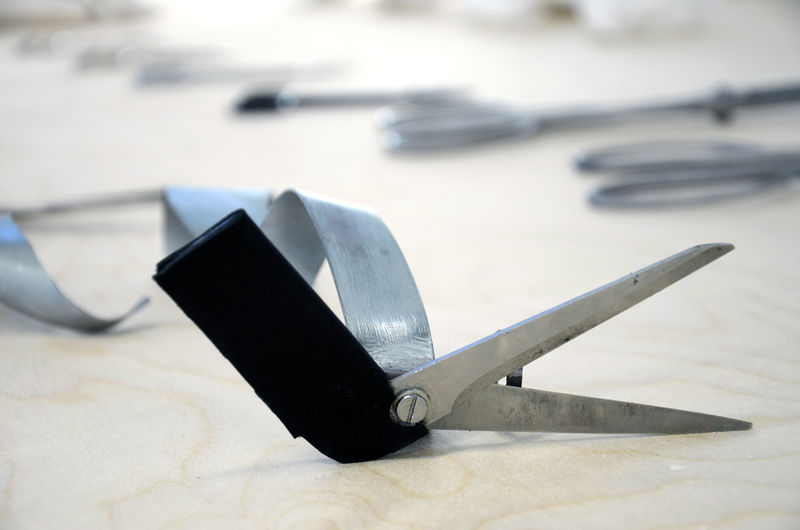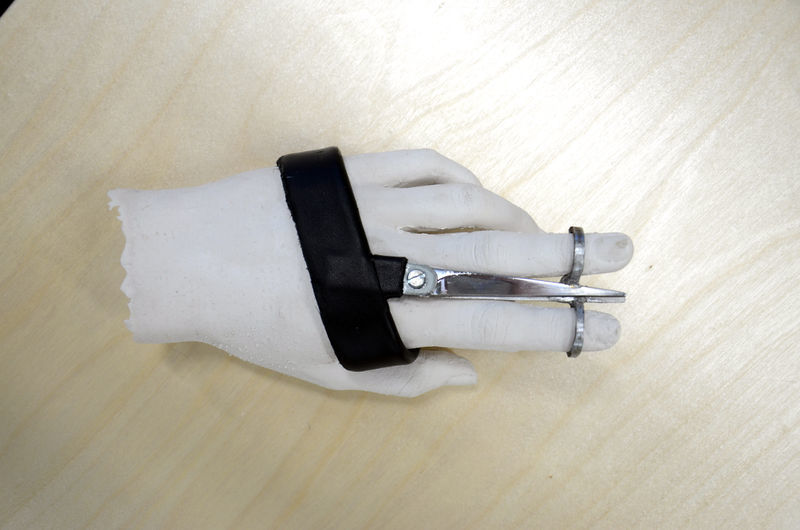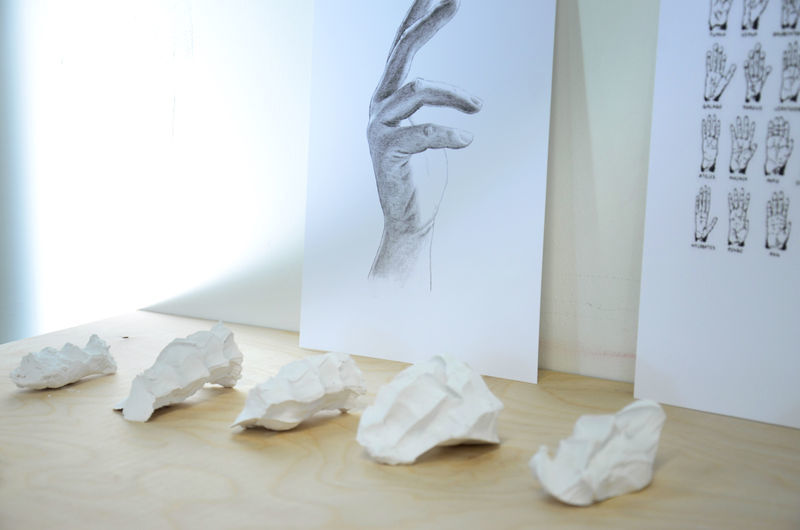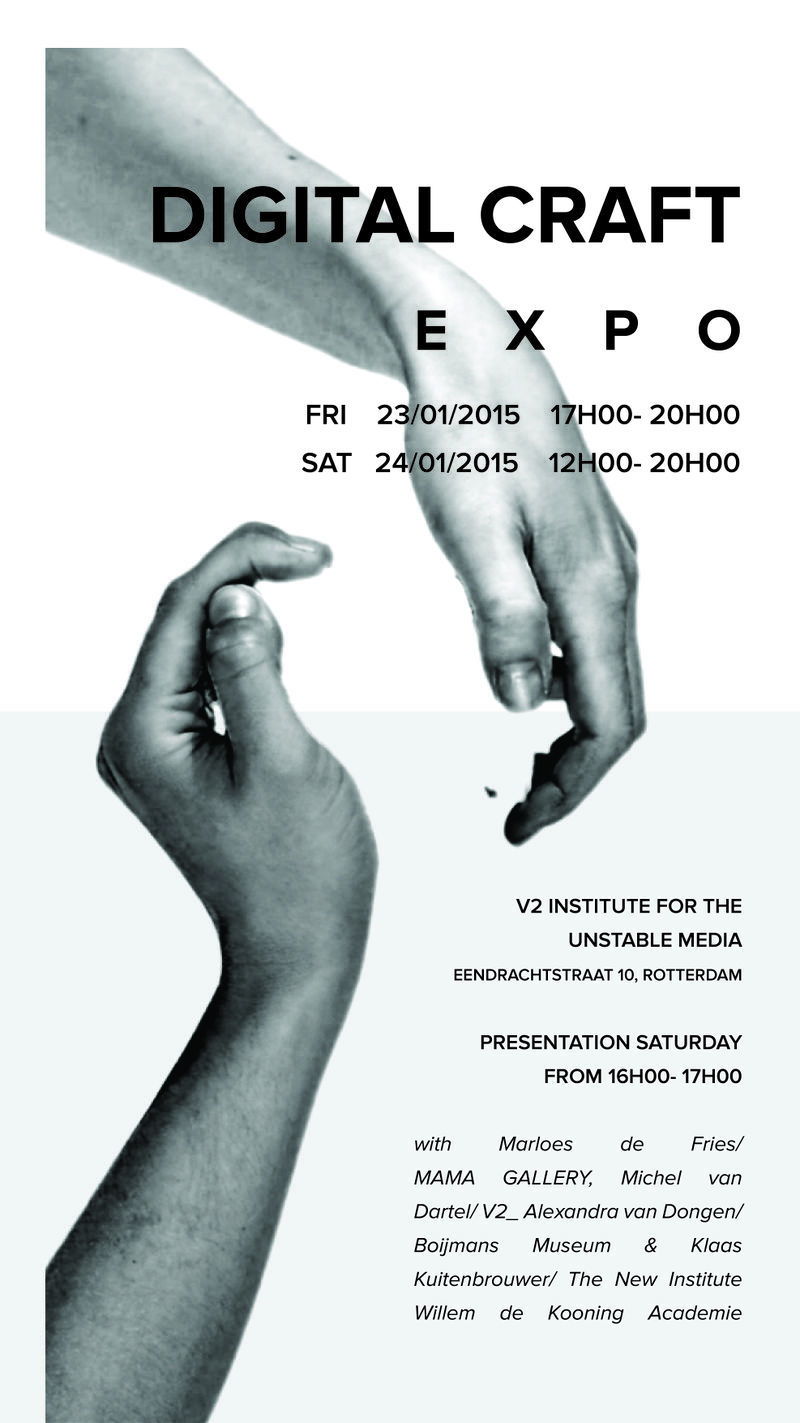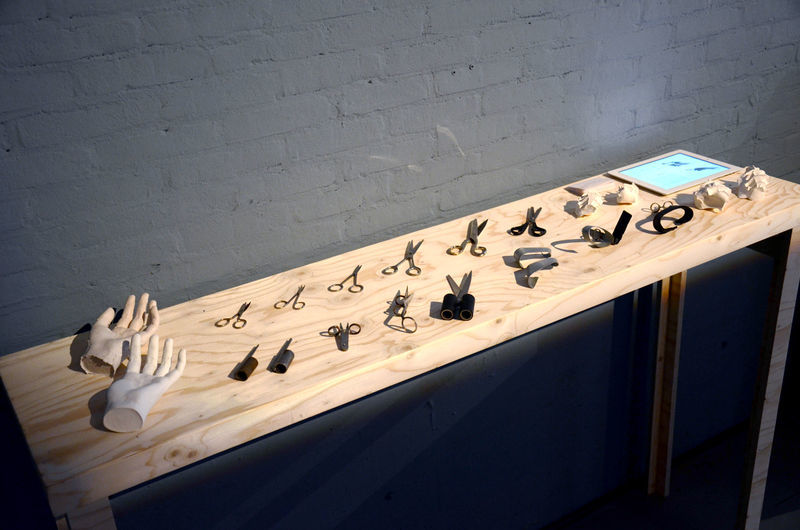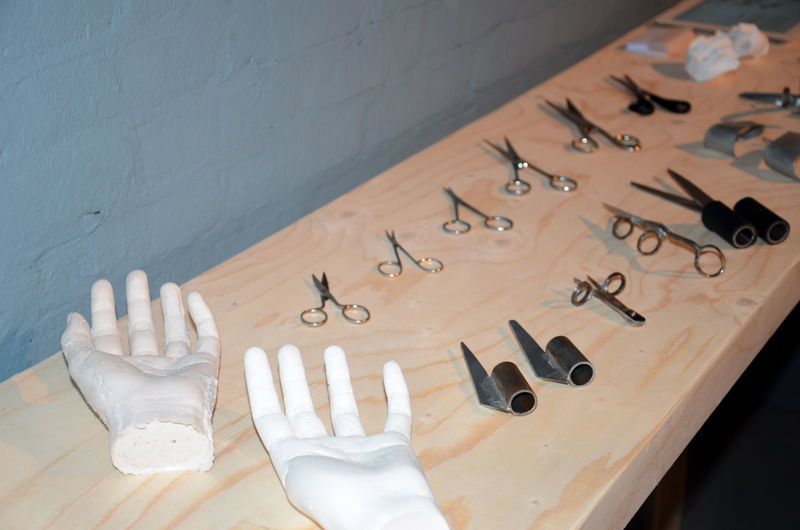Difference between revisions of "User:Ninavdbroek/Tools of the trade"
Ninavdbroek (talk | contribs) |
Ninavdbroek (talk | contribs) |
||
| (29 intermediate revisions by the same user not shown) | |||
| Line 1: | Line 1: | ||
| + | |||
[[File:Untitled-12.jpg | 800px]] | [[File:Untitled-12.jpg | 800px]] | ||
[[File:BonsaiDraw.jpg | 400px]] | [[File:BonsaiDraw.jpg | 400px]] | ||
| Line 315: | Line 316: | ||
Kevin Kelly Low foundation talks (!!) | Kevin Kelly Low foundation talks (!!) | ||
| + | |||
We hebben het over een '''proces''' omdraaien. Terugdraaien. | We hebben het over een '''proces''' omdraaien. Terugdraaien. | ||
Welke processen kunnen we nog meer kantelen? | Welke processen kunnen we nog meer kantelen? | ||
| Line 343: | Line 345: | ||
[[File:Trident_Maple_bonsai_52,_October_10,_2008_copy.jpg | 900px]] | [[File:Trident_Maple_bonsai_52,_October_10,_2008_copy.jpg | 900px]] | ||
| + | |||
| + | |||
| + | |||
| + | ---- | ||
| + | |||
| + | TIME CLOAK | ||
| + | |||
| + | ''Imagine a row of cars speeding along a road slowing down in'' | ||
| + | |||
| + | ''concert to create brief paths for pedestrians to safely cross. '' | ||
| + | |||
| + | ''When the cars that let the pedestrians cross ahead of them speed '' | ||
| + | |||
| + | ''up and re-join the rest of the traffic, no one can tell there was ever '' | ||
| + | |||
| + | ''a gap in the flow – the pedestrians' presence has been cloaked.'' | ||
| + | |||
| + | |||
| + | |||
| + | |||
| + | |||
| + | [[File:Age-of-Man-wiki.jpg | 350px]] [[File:353786133f7c3797aca414bcac6d78d7.jpg | 400px]] | ||
| + | |||
| + | |||
| + | DO PLANTS HAVE DNA AND EVOLVE LIKE ANIMALS? | ||
| + | |||
| + | |||
| + | I interpret your question of evolution to mean physical changes that make a plant more valuable to humans. If this is what you meant then I would say that yes, not only do plants have a genetic coding (DNA or something else) but also they have the potential for evolution. An example of this is the evolution of the ancient grain called maize into what we now call corn. Also note that some of the first genetic science was done with pea plants by Gregor Mendel. | ||
| + | |||
| + | |||
| + | However, IF you mean by evolution the question of spirituality....well supposedly humans aren't "animals" because we have "souls" and experience "spirituality"....although I have met a few "humans" whose "humanity" I would question, and a few "animals" who acted as though they had souls,..but for plants..well I don't know....I believe they could have spirits too, but just something unpercievable by our senses.....who knows? | ||
| + | |||
| + | |||
| + | [[File:Ernst_Haeckel-_Die_Radiolarien_(1862).jpg | 300px]] [[File:Ernst.jpg | 300px]] | ||
| + | |||
| + | |||
| + | |||
| + | |||
| + | |||
| + | [[File:Il_570xN.524137838_pml3.jpg | 600px]] | ||
| + | |||
| + | [[File:Dna.jpg | 600px]] | ||
| + | |||
| + | |||
| + | [[File:Kempinas_Alrai.jpg | 600px]] | ||
| + | |||
| + | [[File:Structure_of_Evolutionary_Biology.png | 600px]] | ||
| + | |||
| + | |||
| + | |||
| + | |||
| + | |||
| + | ''Breed – Driessens & Verstappen: Evolutional Diffusion Lattices'' | ||
| + | |||
| + | If the recent history of digital fabbing were overlayed onto the geological era of Earth, Erwin Driessens, and Maria Verstappen ‘s Breed sculpture may have evolved somewhere in the Triassic Period. This piece, an elegant crystalline cubic sculpture, explored in a variety of materials, appears in its initial incarnation as early as 1995 in manually constructed plywood. It was subsequently produced in 2001, in nylon, using the Selected Laser Sintering technique. | ||
| + | |||
| + | Using evolutionary algorithms to simulate the process of cell division, Erwin and Maria’s program recursively removes material from an original block at progressively greater levels of detail. The process involved in determining which cells are left in the structure and which ones removed is not unlike the process of a simple Cellular Automata, albeit in three-dimensions: | ||
| + | |||
| + | ‘One initial cell, a cube, engenders throughout successive stages of cell division a complex, multi-cellular “body”. Morphogenetic rules determine how the division of a cell occurs, dependent on its situation between the cells surrounding it. Every potential situation has a separate rule, so a cell surrounded on all sides by other cells may divide differently from a cell that only has a neighbour on the left and underneath, or a cell with nothing at all in the vicinity, etc’ | ||
| + | |||
| + | An interesting post procedural aspect to the creation of the sculptural lattices is the ability to search for shape “coherence” in order to find “fitter” models, i.e. models that would not collapse under the effect of gravity in the real world: | ||
| + | |||
| + | ‘The simplest method (two-membered evolution strategy) is already effective: take a randomly composed genotype as base, generate the phenotype and test it for fitness; mutate the base genotype, generate the phenotype and test it for fitness; compare both results with each other, and take the result with the highest fitness as the new base. Repeat the mutations until the result satisfies the stated requirements’ | ||
| + | |||
| + | The most recent versions of the piece, Breed 1.2, were produced in 2007 in printed metal. Looking at these cuboid multi-forms its not difficult to recognise the all to familiar frozen geometric patterns of Cellular Automata and the self-organising structures that emerge out of Activator-Inhibitor systems. One specific comparison that should not go unnoticed is the obvious similarity between these models and real world Hopper crystals such as those of Bismuth. Bismuth crystals grow in this shape because the edges of growing structure generate a higher electrical charge activating crystal growth to a higher degree than in the centre of the sides. The program behind Breed essentially works in a similar way reversed – activating removal of cells depending on their mutual arrangement and proximity within a system defined by simple rules. | ||
| + | |||
| + | [[File:Breed Driessens Verstappen.jpg | 600px]] | ||
| + | |||
| + | [[File:Bismuth_crystal_macro.jpg | 600px]] | ||
| + | |||
| + | [[File:Story.png | 500px]] [[File:G07.jpg | 450px]] | ||
| + | |||
| + | |||
| + | [[File:Dna-lipase.jpg | 500px]] [[File:GeologicalCrossSection_Colorado_JosiahEdwardSpurr_1898.jpg | 400px]] | ||
| + | |||
| + | |||
| + | [[File:F4.large.jpg | 900px]] | ||
| + | |||
| + | |||
TED 3 Kevin Kelly- How technology evolves | TED 3 Kevin Kelly- How technology evolves | ||
| Line 357: | Line 438: | ||
So what’s happening over time in life is that the ways in which you generate these new ideas, these new hacks, are increasing. And the real tricks are ways in which you kind of explore the way of exploring. Kurzweil- his idea that technology is accelerating evolution. Its accelerating the way in which we search for ideas. So if you have life hacking, then evolution is a way of extend the game by changing the rules of the game. And what technology is really about is better ways to evolve. Infinite game. | So what’s happening over time in life is that the ways in which you generate these new ideas, these new hacks, are increasing. And the real tricks are ways in which you kind of explore the way of exploring. Kurzweil- his idea that technology is accelerating evolution. Its accelerating the way in which we search for ideas. So if you have life hacking, then evolution is a way of extend the game by changing the rules of the game. And what technology is really about is better ways to evolve. Infinite game. | ||
There are millions of people born whose technology of self expression has not yet been invented. | There are millions of people born whose technology of self expression has not yet been invented. | ||
| + | |||
| Line 362: | Line 444: | ||
2001 Space Odyssey | 2001 Space Odyssey | ||
| + | |||
| + | |||
| + | [[File:Swiss_stone_tools.jpg | 600px]] | ||
| + | [[File:Ks1-sp14.jpg | 600px]] | ||
| + | |||
| + | [[File:Miscellaneous_stone_tools.jpg | 500px]] [[File:G20.jpg | 500px]] | ||
| + | |||
| + | |||
| + | |||
| + | |||
| + | |||
| + | '''EPISODE 131: GENESIS OBJECT''' | ||
| + | |||
| + | |||
| + | In the beginning, there was design. | ||
| + | |||
| + | Before any other human discipline, even before the dawn of mankind its self, '''design was a practice passed down from generation to generation of early humans'''. Today, everything that has been designed–space ships, buildings, pyramids, weapons, clothing , artwork, everything–can be traced back to a single designed object. The first designed object: the Acheulean hand axe. | ||
| + | |||
| + | |||
| + | The Acheulean hand axe does not look like an “axe.” There’s no handle, and no metal. It could be called the “Acheulean pointy hand rock,” because it is just a rock that has been chipped and shaped, usually into the form of a tear-drop. | ||
| + | '''Acheulean hand axes were the first products of a design process, but they were not the first TOOLS ever made.''' | ||
| + | |||
| + | The first tools were basically just rocks, or rocks that were chipped with a few major strikes to produce a few sharp edges. Anthropologists call these “Oldowan tools,” which our Homo habilis ancestors would simply go out and select, rather than design. | ||
| + | '''Selecting Oldowan tools requires cunning, but not craft'''. When early humans realized that they could fashion more precise tools by sharpening rocks purposefully, the hand axe became the first tool made with an end goal in mind. An end goal which we today do not know. | ||
| + | |||
| + | [[File:Sciccor2.jpg | 800px]] | ||
| + | |||
| + | |||
| + | |||
| + | ''China, early to middle Tang dynasty, about 618-800'' | ||
| + | |||
| + | [[File:Screen_Shot_2014-12-02_at_21.19.12.png | 800px]] | ||
| + | |||
| + | |||
| + | ''Some bits from the history of scissors'' | ||
| + | |||
| + | |||
| + | Quote, “The obvious is so commonplace that when waved in front of our noses we often don’t give it a moment’s thought or even realize it’s there. We take certain objects so for granted that we probably never stop to ask ourselves how they first figured in the life of man. This is the case with scissors: do they date back one century, two centuries or twenty? Our stainless steel kitchen scissors were probably bought from a market stall around the corner, but when did the first scissors come into the world? Attempting to track down the name of a crackpot inventor would certainly be of no avail; as in many similar cases, '''scissors were not invented in a flash of creative genius, but rather evolved, step by step, alongside many other tools destined to cut, separate and pierce, undergoing modifications of design, material and decoration from the first, primitive examples — or at least from the first examples revealed by archeology and literature — to the scissors of today.”''' - From Scissors by Massimiliano Mandel. | ||
| + | |||
| + | '''The first mention of (modern) scissors dates back to the Romanesque period, in the statutes of the craft guild for scissor-makers, one of the many associations of artisans founded in that period.''' The love of pure, unadorned construction that characterizes Romanesque architecture is reflected in the predilection for simple scissor design, with no decorative elements to distinguish them from previous examples. Only at the end of the Romanesque period, between the Xl and XII century, can one begin to notice greater attention being paid to the shape and quality of scissors, partly due to the development of relations with Eastern countries bordering the Mediterranean. Indeed, as the art of calligraphy spread throughout the Islamic world and scissors with concave blades used to cut sheets of paper became a necessary part of the calligrapher’s equipment, more refined models began to appear with thin, streamlined blades, engraved or damascened. | ||
| + | |||
| + | Scissors '''gradually''' came to be appreciated for their aesthetic appeal, although the available space for decoration is slight compared to other hand-made objects, being difficult if not impossible to sculpt, emboss, embellish or paint. Rather, a black metallic alloy called niello was used to decorate the far end of the blades and a fretwork design was frequently applied around the rings of the handles. In this way a high degree of aesthetic pleasure was derived from these objects, which also enjoyed a relatively wide distribution. '''Unlike other objects such as arms, shields and so on, which once made into objects of art become too fragile for common use and are therefore only used as objects to put on display during parades and ceremonies, beautiful scissors also managed to be useful and so the taste for decoration became part of everyday life.''' | ||
| + | |||
| + | '''It would seem that from the industrial revolution onward scissors returned for the most part to their previous state, as purely functional items. Most traces of decoration have been absent ever since, in favor of a clean-lined, stainless-steel functionality.''' | ||
| + | |||
| + | |||
| + | |||
| + | |||
| + | |||
| + | RAZORIUS GILLETUS/ ON THE ORIGIN OF THE NEXT SPECIES | ||
| + | |||
| + | Is the evolution of the single bladed razor into an exorbitant five–bladed vibrating gizmo the outcome of human needs, or is there another force in play? Say hello to Razorius Gillettus, one of the new species emerging from our technoeconomic ecology. Proof that evolution should be understood as a universal principle rather than a DNA-specific process. Yet if this is the case, how can we become responsible stewards of these new, non-genetic forms of life? | ||
| + | |||
| + | By KOERT VAN MENSVOORT | ||
| + | |||
| + | My first razor I got when I was fifteen. It consisted of two blades on a simple metal stick and I remember it gave me a really close and comfortable shave. In the twenty years that have passed since my first shave, I’ve used nine different models of razors. This morning I shaved myself with the Gillette Fusion Power Phantom, a rather heavy, yet ergonomically designed battery-powered razor that looks like a bit like vacuum cleaner and has five vibrating blades with an aloe strip for moisture. So what happened? A story about design, technology, market and evolution. | ||
| + | |||
| + | First, a personal disclaimer (in case you were wondering): Yes, I agree shaving technology was already sufficiently developed when I got my first razor twenty years ago. Actually already in 1975, shortly after the Gillette Trac II razor – the first two-bladed men’s razor – was advertised, its excessive design was parodied on the US Television show Saturday Night Live. The creators of the satirical television program played on the notion of a two bladed razor as a sign of the emerging consumption culture and made a fake commercial parody for a fictitious razor with the ridiculous amount of three (!) blades, emphasizing the consumer is gullible enough to believe and buy everything seen on TV. Of course, the comedians of Saturday Night Live could not know a three-bladed razors would become a reality on the consumer market in the late 1990′s. Let alone that they could have anticipated I would shave myself with a five bladed razor this very morning. Welcome in the twenty-first century folks: No we don’t travel in spaceships… but we do have five bladed razors! | ||
| + | |||
| + | Fortunately, it is still possible to buy brand new blades for my very first razor model today. These older blades are not only cheaper – they are sold in a box of ten pieces for less money than a box of blades fitting the latest model, which contains only four cassettes. The older blades are also more durable. And yet, in the years that have past since my first shave, I bought over a dozen different razors – I honestly have to confess I’ve bought some models of the competing brand as well. So, why did I buy this whole collection of razors over the years? Perhaps it is because I am the type of person who is keen on new things: I am a sucker for innovation. | ||
| + | |||
| + | Before we analyze my own behavior as a buyer, lets first study the razors. '''If we look at the development of razor technology over time, we can distinguish quite some similarities with an evolutionary development as we know it from the biological world: 1) Every new model builds upon the properties of the previous model. 2) Successful alterations are preserved in future generations, whereas unsuccessful alterations will fade out. 3) The shift from functional technologies, like a pivoting head, to seemingly functionless aesthetics of the newer models, that only change in color and have no other purpose than to stand out amidst the competing razor models, remind us of the exuberant tail of a male peacock. 4) The unique click-on systems for replacement blades on different models resemble biological immune systems withholding intruders from entering and feeding on your environment. 5) There even are different survival strategies being tested, which over time may even result in separate species – think of the parallel branches in the more recent models that come with and without a battery. Apparently the marketers aren’t sure whether electric or non-electrical shaving has the future and decided to gamble on both strategies – and yes I confess: I bought them both.''' | ||
| + | |||
| + | INTELLIGENT DESIGNER | ||
| + | |||
| + | Now it may seem quirky, corny even, to consider the development of razors from an evolutionary perspective. After all these are industrial products assembled in factories. Yet I propose to look at them as the result of an evolutionary process. Now I already hear you oppose: “These razors didn’t evolve, people designed them! How can that be and evolutionary process?” '''Well, let me elaborate – and this is where we learn something on our symbiotic relation with technology. Indeed it is true that all the individual razors were created by engineers and designers, however, if we look at the design of the whole series of shavers as it developed throughout my shaving-career, it will be difficult to pinpoint one creator. Where is that one big mind, that ‘intelligent designer’ responsible for the transformation of the razor from a simple blade on a stick to a five bladed electric razor?''' | ||
| + | |||
| + | Obviously many designers and engineers have been involved in the creation of my razors over the years. No doubt these are all descent and friendly people – with good incomes too – but what more are these creators of the individual models than little cogs in the perpetuating Gillette Corporation? Calling them engineers and designers is arguably too much credit for the work they do, as they merely sketch up the next razor model of which one can already predict the ‘innovative’ new properties: '''it will be a slight variation on the current model with some added nanotech-sharpened blade, an extra moister strip, an anti-slip grip or perhaps even a custom customizable color scheme. The razor designers don’t have a lot of room for truly creative design work really. Its not like they are in a position to think deep on the meaning and origins of shaving, in order to reinvent how this ancient ritual can be improved upon.''' Like bees in a beehive their work is determined by the logic of the larger structure. The chair of that one great ‘intelligent designer’ steering the entire development of shavers over time is empty. The larger design gesture emerges from the closely interrelated forces of the consumer market, technological affordances and of course the competition – think of the Wilkinson brand that first introduced a four bladed shaving system, thereby forcing Gillette to answer with a five bladed system. '''Together these contextual influences constitute an ecosystem of a sort, which (again) closely resembles the environmental forces known to play a part in the evolutionary development of biological species.''' | ||
| + | |||
| + | |||
| + | |||
| + | EVOLUTION, BUT NOT AS WE KNOW IT | ||
| + | |||
| + | Of course there are also arguments against this evolutionary view on the development of razor technology – so lets get both sides of the coin here. The most common objection is that “people play a role in the process, so it can’t be evolution.” | ||
| + | |||
| + | This reasoning is tempting, however, it also positions people outside of nature – as if we are somehow placed outside of the game of evolution and its rules don’t apply for us. There is no reason to believe this is the case: after all people have evolved just like all other life. '''The fact that my razors are dependent on people to multiply is also not unprecedented'''. The same is valid nowadays for many domesticated fruits like bananas as well as a majority of the cattle on our planet. Moreover, we see similar symbiotic relationships in old nature: just think of the flowers that are dependent on bees to spread their seeds. | ||
| + | |||
| + | Another objection might be that my razors cannot be the result of an evolutionary development because they are made of metal and plastic and not a carbon–based biological species. Underneath this argument lies the assumption that evolution only takes place within a certain medium: carbon–based life forms. A variation of this argument states that evolution only takes place if there are genes involved – like with humans, animals and plants. '''This way of thinking exemplifies a limited understanding of evolution, as it is a mistake to constrain it to a certain medium rather than to understand it as a principle. In fact the genetic system of DNA underlying our species, is itself also a product of evolution''' – DNA evolved from the simpler RNA system as a successful medium of coding life. There is no reason why evolutionary processes could not transfer itself to other media: Richard Dawkins already proposed ‘memes’ as a building block of cultural evolution, whereas Susan Blackmore suggested ‘temes’ as building blocks for technological evolution. | ||
| + | |||
| + | In the end, the question we should ask ourselves: '''are the environmental forces of economy and technology, at least equally or perhaps even more important for the shaping of razor technology, than the design decisions made by the ‘inventors’ of the individual models.''' I am pretty sure this is the case and hence I propose to consider the development of razors as a truly evolutionary process – not metaphorically, but as reality. The species it brought into being we will call: Razorius Gillettus. It is just one of the numerous new species emerging within the techno-economical system – and it is evolving fast. | ||
| + | |||
| + | TECHNODIVERSITY IS INCREASING | ||
| + | |||
| + | Once we agree to perceive the development of razor technology as an evolutionary process, lets zoom in a bit at our own role in the evolutionary game. How can we see our relation with Razoritus Gilletus and its numerous fellow evolving techno-species? Are we like the bees – who feed themselves with nectar from flowers and in return spread their pollen, enabling the flowers to reproduce – heading towards a symbiotic relationship with the technosphere, which feeds upon our labor & creativity, and in return gives us Razorius Gilletus? Should we take pride in our role as catalysts of evolution? Propagators of a technodiversity unlike the world has ever seen: the one and only animal that transfers the game of evolution into another medium? We can. '''Yet, as in every symbiotic relationship, we should also be keen on whether both parties are actually getting a good deal.''' And although I did buy all these razors and they have been providing me with an ever-smoother-closer shave throughout my life, I am not entirely sure about that. | ||
| + | |||
| + | INNOVATION WITHOUT A CAUSE | ||
| + | |||
| + | '''To many of what we call ‘innovations’ are merely directed at increasing the growth and wellbeing of the technosphere – bigger economy, bigger corporations, more technological devices –, rather than actually improving the lives of people'''. Indeed my latest shaver does shave just that tiny little bit more smoothly than the previous model. Yet, if you would ask me if the device has ‘innovated’ my life, I’d have to say no. | ||
| + | |||
| + | Let’s face it: the new shavers from Gillette are primarily created for the sake of Gillette Corporation: higher turnover, more profit, more shareholders value. Now that’s all not bad to begin with, as good business also provides people with good jobs and steady incomes, which allows them to live a happy live – and buy more razors. So far it’s a win-win situation. Yet, the production of all these abundant devices also uses an amazing amount of resources, putting quite some pressure on the biosphere – remember, that old nature that used to surround us before the emerging of the technosphere? We should not be naïve about the fact that corporations – I know they’ll tell you otherwise – do not intrinsically care all that much about the wellbeing of the biosphere. Being able to breathe clean air simply is not important for Razorius Gillettus, as it has a whole different digestive system. Clean air is merely a requirement for carbon–based life forms like algae, plants, birds, polar bears, and of course people. | ||
| + | |||
| + | CATALYSTS OF EVOLUTION | ||
| + | |||
| + | So how to continue? I am the first to concur that there is a certain luster in the development of Razorius Gillettus. '''The notion that human activity is causing the rising of such a peculiar new species and that we are now co-evolving towards a shared future is intriguing to say the least.''' I wonder what Charles Darwin would have thought of this. Perhaps he would have pointed at the serious risks involved in this evolutionary leap. '''Certainly, our awareness of our own role as ‘catalysts of evolution’ has yet to mature'''. It is a quite responsible job description we have got our hands on there. If we feel we are not fitted for the job, we could better grow our beards and return to our caves. We can do that, perhaps. At least some people have proposed we should do that, however, trying to turn back the clock of civilization would also be a denial of what it means to be human, or at least it exemplifies a cowardness towards the unknown. On the other hand, a purely techno-utopist attitude of ‘letting grow’ will expectedly also not be in the longtime benefit of humanity and our fellow biosphere–dependent species, as we run the risk of being outsourced altogether. | ||
| + | |||
| + | '''The mature thing to do in our position as catalysts of evolution is to develop a stewardship that focuses on maintaining a balance between both the declining biosphere and the emerging technosphere – between old nature and next nature. Towards an environment in which both can find a place and live in relative harmony. Now, I am not saying it will be easy. But if we are able to do that, we will have something to be truly proud of'''. | ||
| + | |||
| + | |||
| + | ''Symbiosis (???) Ss close and often long-term interaction between two or more different biological species. In 1877, Albert Bernhard Frank used the word symbiosis (which previously had been used to depict people living together in community) to describe the mutualistic relationship in lichens. In 1869, the German mycologist Heinrich Anton de Bary defined it as the living together of unlike organisms.'' | ||
| + | |||
| + | |||
| + | |||
| + | [[File:500px-Punctuated-equilibrium_NL.svg.png | 400px]] | ||
---- | ---- | ||
| − | |||
| − | '' | + | '''DRAFTS2/ |
| + | Consistente beeldtaal vinden. Een frame creëren waarbinnen je te werk gaat. | ||
| + | Vertrokken vanuit iets tastbaars, een fysiek en toegankelijk object: Bonsai boom om een discussie aan te stellen wat een veel grotere reikwijdte heeft. | ||
| + | Bonsai is een kleine evolutieleer. | ||
| + | Uit onderzoek blijkt- tools evalueren op een vergelijkbare manier als plant en dier. Anderzijds worden deze tools binnen bonsai kunst weer gebruikt om object aan te passen. | ||
| + | |||
| + | Crafted object evolves by tool <> Tool evolves by crafted object. | ||
| + | |||
| + | Tweeledig deel waar in dit inzichtelijk word. | ||
| + | Example: Thingiverse- Parameters ontwerp. Genereert nieuwe versie op bestaande dingen. | ||
| + | |||
| + | Een analogie (???) is een overeenkomst tussen twee zaken die men als grondslag neemt voor een redenering. Het object van de analogie wordt analogon genoemd. | ||
| + | Analogie van bonsai boom en menselijke evolutie vormen. Een vertellend object wat je doet laten nadenken over biologische maakbaarheid. | ||
| + | Set van tools creeren die dat impliceren.''' | ||
| + | |||
| + | |||
| + | |||
| + | [[File:Bird_Guide_spread_p294.png | 500px]] | ||
| + | |||
| + | |||
| + | [[File:Bird_Guide_spread_p498.png | 500px]] | ||
| + | |||
| + | |||
| + | [[File:Bird_Guide_spread_p516.png | 500px]] | ||
| + | |||
| + | |||
| + | [[File:Screen_Shot_2015-01-09_at_00.13.55.png | 500px]] | ||
| + | |||
| + | |||
| + | |||
| + | |||
| + | '''HOW TECHNOLOGY AND EVOLUTION RELATE TO EACH OTHER''' | ||
| + | |||
| + | |||
| + | |||
| + | |||
| + | In de loop van de evolutie is de hand ontwikkeld van een voortbewegingsorgaan tot een orgaan dat functioneert in dienst van onze intelligentie. | ||
| + | |||
| + | Ook zonder de quantum mechanica van Einstein kunnen we begrijpen waarom we aan iedere hand 5 vingers aantreffen, en geen 4 of 6. Want biologen hebben ontdekt dat normaal gesproken in de foetale ontwikkeling van de zogenaamde ‘tretrapoïden’ (alle zoogdieren, vogels, reptielen en amfibieën) eerst 4 ledematen worden gevormd, waarna aan de uiteinden 5 vertakkingen ontstaan. Dit betekent dat in de vroege ontwikkeling van onze hand dezelfde fasen zijn doorlopen als bij de ontwikkeling van de hand van een aap, de poot van een kat maar ook de vleugel van een vogel en de vin van een walvis. Overigens kunnen we dit ook terug zien in de ledenmaten structuur van volwassen ‘tetrapoïden' | ||
| + | |||
| + | Modern human hands are quite different from our ancestors’ hands. Apes are known for their long, curved fingers used for swinging from branch to branch, as well as their very small thumbs. Nowadays, human hands are more muscular than apes’ with shorter fingers and, of course, opposable thumbs. So how did our hands evolve to become this way? | ||
| + | |||
| + | It’s all because of tool making. Tool making first appeared 2 million | ||
| + | years ago with the species Homo Habilis, also known as “Handy Man” | ||
| + | because of its tool making abilities. The hands of H. Habilis had evolved to be | ||
| + | able to make and use tools. Their hands were a mixture between humans’ | ||
| + | and apes’ hands; while their fingers were still long and curved, they had wide | ||
| + | tips like human hands. The fingers also attached to the hands in a way | ||
| + | similar to human hands. | ||
| + | |||
| + | |||
| + | Hominids used tools mainly for hunting and for protecting their food | ||
| + | supplies from large predators. Most of their tools were either clubs or “rock | ||
| + | missiles”, which were used for throwing at predators. The use of these tools | ||
| + | changed hominids’ hands, as grasping these tools required more grip than an | ||
| + | ape hand could provide. The hominid hands needed better locomotion. | ||
| + | |||
| + | |||
| + | Two different types of grips were needed for the use of tools: the power grip, for applying force, was | ||
| + | used when clubbing. The precision grip, for movements needing precision, was used when throwing rocks. | ||
| + | Both of these grips needed the muscular hands and opposable thumb humans have today. More muscular | ||
| + | hands allowed the hominids to apply more force in their grips. The opposable thumb was used for fingertip | ||
| + | grip, which was important for control and absorbing force. | ||
| + | |||
| + | |||
| + | [[File:Joa0202-0165-f3.jpg | 600px]] | ||
| + | |||
| + | ''As evolution occurred, human hands gained different grips.'' | ||
| + | |||
| + | ''Two grips have been identified here: the power grip,'' | ||
| + | |||
| + | ''depicted with the balls above, and the precision grip,'' | ||
| + | |||
| + | ''depicted with the racquets and bats.'' | ||
| + | |||
| + | |||
| + | [[File:Hominid-hands.jpg | 400px]] [[File:Hendur_faetur_primatar_stor_040213.jpg | 400px]] | ||
| + | |||
| + | |||
| + | There have | ||
| + | been many theories as to how and why the hand evolved the way it did, however | ||
| + | there appears to be one dominate and most plausible theory: the role and use of | ||
| + | tools in our early ancestral culture. '''It is proposed that it was tools that''' | ||
| + | '''revolutionized the human hand, fueling the evolution that has produced the modern''' | ||
| + | '''human hand.''' | ||
| + | |||
| + | According to Dr. Mary W. | ||
| + | Marzke of the Arizona | ||
| + | State University | ||
| + | Department of | ||
| + | Anthropology, the | ||
| + | functions that make the | ||
| + | human hand so distinctive | ||
| + | are the ability to firmly | ||
| + | grasp objects and cup the | ||
| + | hand around them in a | ||
| + | manor that increases | ||
| + | precision and | ||
| + | maneuverability (Marzke | ||
| + | 1). It is this same precision | ||
| + | and maneuverability that | ||
| + | allows us to engage in | ||
| + | more advanced tool | ||
| + | making activities. Also, | ||
| + | although not as advanced | ||
| + | in comparison, it was the | ||
| + | evolution of the | ||
| + | mechanisms that provide | ||
| + | us with these abilities that | ||
| + | allowed our ancestors to | ||
| + | engage in core tool | ||
| + | making. | ||
| + | |||
| + | |||
| + | Within the modern | ||
| + | human wrist there | ||
| + | exists many | ||
| + | complexities; however, | ||
| + | for the purpose of | ||
| + | grasping for tool | ||
| + | making, there is two | ||
| + | aspects of the wrist | ||
| + | that are especially | ||
| + | significant. First, the | ||
| + | base of the second | ||
| + | metacarpal is | ||
| + | extremely complex, | ||
| + | allowing connectivity | ||
| + | to three carpal bones, | ||
| + | the trapezium, the | ||
| + | trapezoid and the | ||
| + | capitate (Markze 123). | ||
| + | This compound | ||
| + | connectivity allows | ||
| + | for pronunciation of | ||
| + | the metacarpal (123). | ||
| + | Also, the broadness | ||
| + | of the trapezoid and | ||
| + | capitate in association | ||
| + | work to relieve the | ||
| + | stresses that form due | ||
| + | to the opposition of | ||
| + | the thumb to the | ||
| + | fingers during | ||
| + | manipulation of | ||
| + | itemry | ||
| + | |||
| + | |||
| + | A feature that is | ||
| + | vital to the ability | ||
| + | to grasp firmly and | ||
| + | efficiently during | ||
| + | tool making is | ||
| + | made possible by | ||
| + | the distinct shapes | ||
| + | of the second and | ||
| + | fifth metacarpal | ||
| + | heads (Marzke | ||
| + | 123). The fact that | ||
| + | these two | ||
| + | metacarpals have | ||
| + | heads that are | ||
| + | asymmetrical to each | ||
| + | other and have | ||
| + | distinct projections | ||
| + | on the outer areas | ||
| + | enables these fingers | ||
| + | to rotate toward | ||
| + | each other during | ||
| + | flexion of tendons | ||
| + | (Marzke 123). This | ||
| + | reciprocal motion | ||
| + | permits the hand to | ||
| + | form around an item | ||
| + | and grip more firmly | ||
| + | for manipulation. | ||
| + | |||
| + | |||
| + | [[File:Handd.png | 600px]] | ||
| + | |||
| + | These evolved sections allow the human hand to grip in two distinct ways | ||
| + | vital to the tool making process. According to Dr. J.R. Napier, with these | ||
| + | advancements, the human hand can accomplish two types of grips, the | ||
| + | precision grip and the power grip (Napier 903). The power grip is | ||
| + | characterized by a clamp like formation in which the fingers and the palm | ||
| + | are partly flexed and counter pressure is applied by the thumb which is in a | ||
| + | position even to the palm (Napier 903). The main objective of this grip in | ||
| + | terms of tool making/using strategies is to absorb impact without injuring | ||
| + | the user, prevent the object from exiting the hand and allow for immediate | ||
| + | restrike (Young 170). The precision grip is accomplished when the object | ||
| + | is pinched between the flexors of the fingers and the thumb which | ||
| + | parallels the middle and distal phalanges (Napier 903). In regards to tool | ||
| + | making and using, this grip is meant to increase precision in throwing, and | ||
| + | allow for a firm yet accessible grip on an object (Young 169). These two | ||
| + | types of grips have also commonly been referred to as the cylinder (power) | ||
| + | and ball (precision) grips. | ||
| + | |||
| + | |||
| + | AN ADVANTAGE IN REPRODUCTION | ||
| + | As we all learned this semester, evolution takes place when a trait causes a | ||
| + | reproductive advantage and is selected for, but just how does this apply to hand | ||
| + | evolution through tools? The answer can be found when we look at the culture | ||
| + | of our more primitive ancestors. As Young notes, males who were highly | ||
| + | aggressive and skilled with weapons like clubs, were the most likely to rise in | ||
| + | dominance hierarchy and gain better access to resources (Young 165). These | ||
| + | resources would include the food and water that insured survival as well as | ||
| + | access to more females for breeding. In males, the most skilled weapons users | ||
| + | were most likely the ones that possessed certain variations within the hand that | ||
| + | better enabled them to use their weapons effectively. In females, possessing | ||
| + | these variations would better enable them to protect their young and | ||
| + | themselves by warding off predators with weaponry, therefore being more likely | ||
| + | to pass on these traits to other generations. (Young 166). With time, the variable | ||
| + | traits that allowed the maximization of use of tools of protection would have | ||
| + | been selected for and accumulated to produce the modern human hand as we | ||
| + | know it. | ||
| + | |||
| + | |||
| + | As complex and efficient for tool making and use as the human hand is now, it | ||
| + | wasn’t always this way. '''The modern human hand and its comprehensive gripping''' | ||
| + | '''capabilities are the result of millions of years of evolution by selection. It is''' | ||
| + | '''interesting to see that a culture of tools and aggression has produced such a''' | ||
| + | '''complex appendage. This also raises many questions such as''' “Will future | ||
| + | anthropological finds disprove this theory, or confirm it?” Lets not wait for the future to answer these | ||
| + | questions, after all, it is the past that truly holds the key. | ||
| + | |||
| + | |||
| + | '''HOW WILL OUR CURRENT CULTURE AND MODERN TOOLS LIKE CELL PHONES AND COMPUTERS EFFECT THE FUTURE EVOLUTION OF THE HUMAN HAND?''' | ||
| + | |||
| + | [[File:Handtool.jpg | 400px]] [[File:Handtool2.jpg | 400px]] | ||
| + | |||
| + | |||
| + | '''WRITTEN STATEMENT2''' | ||
| + | Dus: Mijn onderzoek gaat over biologische maakbaarheid. | ||
| + | Ik ben vertrokken vanuit een object dat zowel toegankelijk als tastbaar is en de evolutieleer symboliseert. De kunst van bonsai bomen kweken. Een eeuwenoude ambacht wiens doel is een realistische weergave van de natuur geven. Voor mij persoonlijk visualiseert het een proces waarin mens controle neemt over de groei van een organisme en dat wij handmatig, op relatief korte termijn invloed kunnen uitoefenen op een evolutie koers door middel van gecombineerde technieken en gereedschappen. Als we vervolgens inzoomen blijkt dat deze mechanische set van 'tools' op een gelijkmatige manier zijn geëvolueerd als ieder ander levend organisme. Ieder nieuw model bouwt voort op de eigenschappen en de ervaringen van het vorige model en succesvolle veranderingen worden bewaard in de toekomstige generaties, overwegende dat mislukte wijzigingen zullen vervagen. Dit gegeven expliceert dat een bewerkt object niet enkelvouds word aangepast door het gereedschap maar dat het ook een wederzijdse werking heeft op de vorm van de tool zelf. Deze verstandhouding vind ik super interessant en is ook met meerdere onderwerpen te vergelijken. Zoals bijvoorbeeld de verhouding tussen tool en menselijke hand. Beide zijn op een bepaalde manier geëvalueerd als reactie op mekaar. De hand is in de loop der jaren zo gevormd dat het in staat is om dingen te grijpen, zowel heel precies als met veel kracht. Twee elementen die belangrijk zijn in het maken van tools. Tools worden vervolgens weer zo ontworpen dat zij goed in de hand liggen en daardoor de beste werking hebben. Een evolutionair schouwspel dus wat uiteindelijk resulteert in een kunstvorm die deze biologische aanpassing illustreert en in een grotere context als voorloper kan worden bezien naar synthetische biologie. | ||
| + | |||
| + | |||
| + | Technologie en evolutie hebben dus een duidelijke relatie met elkaar. Nogmaals: In mijn onderzoek is dit geproportioneerd naar Tools en Bonsai bomen, wat doet nadenken over biologische maakbaarheid. | ||
| + | De analogie van bonsai bomen vormen en menselijke evolutie wil ik graag in een vertellend object/ installatie inzichtelijk maken door tweedelig ontwerp te maken dat langst beide kanten reageert en transformeert. Dit hoeft niet eens werkend te zijn maar kan bijvoorbeeld in de vorm van een set van tools resulteren die dat geen impliceren, ofwel de drager worden van mijn idee en geschreven essay. | ||
| + | |||
| + | |||
| + | |||
| + | A brief history of tools | ||
| + | Tools tell us about the society that made them. The more advanced a society, the more it produces, and the more tools it uses. The story isn't one of continual development as there are periods when progress is slow or even goes backwards. By Roman times many hand tools we would recognise today were used. The Roman joiner had a more extensive tool chest than his Medieval counterpart. Specialist crafts and tools were developed to harvest and turn wood into useful things. Sawyers, Carpenters, Joiners, Carvers, Wagon builders, Shipwrights, Millwrights and Musical Instrument makers have all used the properties of different types of wood to make goods. Every stage of a process had its special tool, from saws and axes to gouges and chisels. | ||
| + | |||
| + | A craftsman’s tools were his main means of earning a living. They were a huge investment in time and money, either being made by himself, or purchased from specialist manufacturers and suppliers. The cost of a fully equipped tool chest in 1797 was £15.10.4d. (£15.52p), about a years wages for a skilled craftsman. This is why many older tools are stamped with names and initials. Sometimes there are several sets of names, as valuable tools were passed down the generations, or sold to new owners after retirement. Individual or family marks, together with manufacturers stamps, offer one of the clearest indications of date and age, provided you know what the initials stand for | ||
| + | |||
| + | |||
| + | [[File:Eldridge2.jpg | 500px]] [[File:Eldridge222.png | 500px]] | ||
| + | |||
| + | |||
| + | [[File:Photoshop24.jpg | 600px]] | ||
| + | |||
| + | |||
| + | |||
| + | Scissor SSS | ||
| + | |||
| + | Since the ancient Egyptians who supposedly invented them, scissors have been a constant in human civilization. After knives, they're likely the most common household object the average person owns. Just look around your house: You have them for your nails, your paperwork, your kitchen, sewing—even kids have their own safer versions. So it's odd that we know so little about how they came to be. | ||
| + | |||
| + | Here at Gizmodo, we love scissors. So we were curious about how they evolved over the years. What we found was amazing—the following collection of images shows how many forms and surprising types of scissors have emerged since two blades were connected at the handles by a flexible strip of curved metal, three or four thousand years ago. From scissors used on the moon to the battlefield, check them out below. | ||
| + | |||
| + | ---- | ||
| + | |||
| + | As we speak about evolution we assume that it’s on biological level. We think of organisms, plants or the human being but if we take a closer look at the sentence of this principle it’s pretty comparable with technology as well. We divide life in 6 areas; the bacteria, archaea and Eukaryotes which contains; plants, fungi and animals. All these species has gotten the same time to evolve and each and every developed itself differently due to the environment. But what is noticeable is that long- term evolution trends of patterns are to catechize in 5 processions; Ubiquity, diversity, specialization, complexity and socialization. If we apply them on any technological device we see the same drive towards these processions. | ||
| + | |||
| + | So the major trends in technology evolution are actually the same as in biological evolution. The same drives that we see towards ubiquity, diversity, specialization, complexity and socialization. I suggest that technology is the seventh kingdom of life. And if we were to do that, we would find out that we could actually approach technology in this way. Niles eldredge, the theory of punctuated equilibrium. Collects cornets, he decided to treat them as if they were trilobites, or snails, and to do morphological analysis and try to derive their genealogical history over time. So what’s happening over time in life is that the ways in which you generate these new ideas, these new hacks, are increasing. And the real tricks are ways in which you kind of explore the way of exploring. Kurzweil- his idea that technology is accelerating evolution. Its accelerating the way in which we search for ideas. So if you have life hacking, then evolution is a way of extend the game by changing the rules of the game. And what technology is really about is better ways to evolve. Infinite game. There are millions of people born whose technology of self expression has not yet been invented. | ||
| + | |||
| + | |||
| + | |||
| + | [[File:10869337_849047355147364_2297888423608431757_o.jpg | 700px]] | ||
| + | |||
| + | [[File:10887294_849047358480697_560267689532786034_o.jpg | 700px]] | ||
| + | |||
| + | [[FIle:IMG_3086.JPG | 700px]] | ||
| + | |||
| + | [[File:Screen_Shot_2015-01-09_at_00.07.20.png | 700px]] | ||
| + | |||
| + | |||
| + | WRITTEN STATEMENT | ||
| + | |||
| + | '''Document 1 | ||
| + | The natural relationship to technology.''' | ||
| + | |||
| + | Previous century was about discovering things, while this new century is about making things. That’s a huge different because by making you’ll get a new level of understanding. This hands-on approach challenges you to be more creative as you have to think in solutions and alternatives whenever you have no access to certain particles. Instead of using your eyes and mind making the right choice to satisfy your needs, you’ll have to experience the material itself wherefore it becomes more personal. It’s obvious that this maker culture rises accompanied by many fablabs in city’s all over the world that offer citizens a platform to realize their ideas. Because of new technology we’re able to make things ourselves instead of buying them in stores. This fact will of course influences the economy, as we all know it now. Some people are frightened by this idea but I think this is a natural evolvement. Our contemporary system that amounts from the industrial revolution is based on manufacturing and globalization; making as many objects as possible and spread them all over the world by infrastructure. But times changed and because the Internet provides a super fast platform that contributes to the open source approach and sharing mindset it’s no longer necessary to let things made on the other side of the world. By digital fabrication it’s much more efficient to ‘print’ things locally, besides that, I think it’s in human nature to make things ourselves. It’s scientifically proven that people are more satisfied when they’ve created something themselves; a object gets automatically more value when someone puts it’s personal effort and time in it. The facts of this maker culture and the way it influences different disciplines is well-known to us as digital craft students, but I’m personally more interested in the relation towards the natural world and psychics. | ||
| + | Since science and biology became more accessible to non- scientists, people begin to integrate in this merging field as well. Actually we see the same fabrication movement in living systems; known as synthetic biology. It’s a new field of science we’re designers look at ways to adapt natural organisms and processes to create new products, materials and even artificial life forms. We sometimes forget that we’re already trying to ‘control’ nature for more than 1000 years. For example the modification of our pets; we make decisions that push evolution in a particular way to satisfy human needs and tastes. Now I’m actually against this phenomenon because nature and animals already suffered enough trough human impact but maybe it can also have an advantageous effect. We’ve created a gigantic hole in nature the last decades but now, with the advent of new technology, we have the possibility and maybe the moral duty to fix a part of the damage. And that is probably where my role as designer lies. I think our challenge is to move our attitude upon nature from dominating it towards cooperating with it. As a maker I'm exploring the way nature is developing and being as efficient as possible. I use this as inspiring study to solve 'problems' and over think our conventional ways of dealing with products. Pushing society towards a more sustainable lifestyle. Digital fabrication is a perfect tool to achieve this evolution but we do need to change our cliché image of technology, which is very mechanical and without any aesthetics. Like I mentioned, this idea is of course generated during the industrial revolution where nature was the opposite of machines, but actually, technology has always been mimicking natural processes and is somehow intertwined with it. Like the computer looks at how the brain work or a camera uses the human eye as example. But because of this mechanic look and feel –which Fritz Kahn illustrates very well as you can see- there’s formed a huge gap between human and machine. It’s not easily for us to relate with technology so the question is; how can it feel more natural, soft and organic? Is it achievable to blur these edges? In theory we already did as you can see in synthetic biology; nature is becoming a designers next toolbox. But in aesthetics it’s not yet achieved to push technology towards a more sensual direction. This challenge is what drives me and this is what Neri Oxman actually already reached reasonably well. | ||
| + | |||
| + | The vases that Gotlind Weigel created were inspired by the shapes she discovered in nature like the form of a birds wing or a plant that rises from the ground. She mimicked these curves by using a wheel-thrown vessel and turned the material, mostly stoneware and porcelain, into a consumer article or an art piece. The material I experimented with had both the organic characteristics as the mechanical properties. It moves very gradually and slowly while the iron oxide makes the material react on any magnet that appears within near distance. The composition of the material is actually very chemical but therefore I was even more interested. That such synthetic stuff can move so naturally and that the process is ‘semi’ controlled by the designer. Man likes to have fully control over things but maybe the beauty arises when a designer takes a step backwards at a particularly moment, so the object can finish itself. When you start appreciating these imperfections that come along with coincidence, your relationship towards the material completely changes. For me this was a real challenge because I’m an exceptional perfectionist in everything I do. | ||
| + | I still don’t know exactly where my profession as a maker lies but I do have a strong opinion or belief within this maker discipline. I would like to devote myself in solving ‘problems’ related to climate change and contribute to people’s awareness by showing them the beauty of our environment. Intergrade humans in a more efficient and balanced lifestyle trough leaving all parts of an object that aren’t really necessary. The Japanese brand Muji is a very good example of this philosophy. Even though it produces extremely much, the mindset is driven by minimalism. Digital fabrication enables us to work efficient and effective and discourage mass production where thousands of products are thrown away every day. We need to re- design these integrated systems or at least change our way of thinking. The current system detains people from being independent and experimental, it has now eye on an innovative future whatsoever. And that’s a shame because the outcome of combining creative minds with intelligent people is so extremely powerful; the left and right brain lobe are simply brought together. The most important part of crossing technology and biology for me is learning from other species and use this data in all sort of design disciplines. From fashion to architecture, urban planning and product design. Malaysian architect Ken Yeang shows perfectly how you can intergrade nature into a building. He creates an entire ecosystem climate where plants and green space provide ventilation as well as oxygen and shelter. | ||
| + | Back to a more practical scale for me; I think it’s definitely crucial at this moment to blur boundaries as much as possible and questioning ourselves which direction we’d like to go. I’ll continue my research in materials and invest how new technology allows me to upgrade conventional crafts and traditions. Revealing the process so other people get an understanding of this side of the story as well. Even though my position within this merging field is still a bit loose -since I can’t even clarify what I’m exactly making-, the significance of the message I’d like to spread is more than clear. | ||
| + | |||
| + | |||
| + | |||
| + | |||
| + | |||
| + | |||
| − | |||
| − | |||
| − | |||
| − | |||
| + | '''Document 2 | ||
| + | Biological malleability; The art of bonsai trees''' | ||
| + | In the next chapter I take a look at the relation between nature and technology from another angle; an evolutionary point of view. I’ll discuss how the formation of tools is pretty comparable with the transformation of biological creatures and even though the looks of machines are still very mechanical, the path towards their appearance today is noticeable. By using advanced equipment that’s available today we enter an area where we have more control and power over our evolutionary future. | ||
| − | + | So this story is about biological malleability; the human as we know it nowadays has walked a long path of transformation and mutation along the path of all other species, which Darwin gathered in his long study in biological evolution. Evolution is about passing on the genome to the next generation, adapting and adjusting through generation after generation. It favours those creatures best adapt to their environment. A natural selection process ensures that delicate members of a population die through external as well as internal aspects and get replaced by the progeny of parents, which are better adapted to survive and reproduce in the biophysical environment. Every existing species that live today has succeeded in these evolutionary terms, it has demonstrated a fitness that brought them to the point of their appearance today. But it’s not only a one-way process where environment forces specie to adapt; it’s also the other way around. Organisms like to shape their surroundings to their wishes as well; they take advantage of the environment to guarantee themselves more safety. Just like we did during WO1 when we buried ourselves in to trenches but also in daily life; we create gardens, houses and so forth to advance privacy. The difference is that we disposal the use of tools to manage this, so it has immediately impact while animals and plants have to change fundamentally over a long period of time. Therefore the process of arranging and establishing is going much slower in the animal kingdom but will proceed more regular with the environmental forces. It’s a continually reflection process which construct mainly the balance in life. This balance, which is basically a product of cooperation between species and environment, is intertwined in nature and reliable on all living matter on earth. It’s besides all other arguments of Darwin a fundamental aspect that substantiates a branch in evolution theory called coevolution. Coevolution is "the change of a biological object triggered by the change of a related object.” This often leads to a partnership, where both species become fully dependent on each other for survival, like bumblebees and flowers for example. The bumblebee collects pollen or nectar and feeds himself with this source of energy. Meanwhile he transfers the pollen from the anther (male part) to the stigma (female part) of the plant so that pollination can take place. The bee serves as bearer since plants can’t move and in consideration it can feed himself with sugar so both parts benefit. In my research I find a similar partnership between man and technology. In this scenario humans carry the role of bearer and receive in return the luxury that technology offers. I think we’ve reached a stage where we rely on technology in terms of survival, just like the relation between bees and flowers. Because at the same time; technology is dependent on people to multiply and will not be able to expand and diversify without us as carriers. | |
| + | Normally when we speak about evolution we assume that it’s on biological level. We think of organisms, plants or the human being but if we take a closer look at the sentence of this principle it’s pretty comparable with technology as well. We divide life in 6 different kingdoms; the bacteria, archaea and Eukaryotes which contains; plants, fungi and animals. All these species has gotten the same time to evolve and each and every developed itself differently due to the environment. They've been around just as long and gone through just the same kind of trial and error to get here. But what is noticeable is that long- term evolution trends of patterns are to catechize in 5 processions; Ubiquity, diversity, specialization, complexity and socialization. If we apply them on any technological device we see the same drive towards these processions like Koert demonstrates in his theory of razors. (1) | ||
| − | + | I’ve started this project from an interest in evolution and attached this wide concept to more accessible proportion, which (for me) is found in the art of growing bonsai trees. This old form of craftsmanship symbolizes perfectly that we started to experiment with changing the phenotype a long time ago. The phenotype, which is the total of all observable properties (attributes) of an organism, can be transformed directly with small interventions. Like for example when we tan our skin using ultraviolet-light to replace the white tone for a darker, summer colour or by simply cutting and shaving our hair. | |
| + | In the tradition of growing bonsai trees, funded 2000 years earlier in China, we carry the role as designer by controlling the shape and the growing process of the tree. The actual goal of the ‘farmer’ is to give an as realistic as possible representation of nature, but for me personally it visualizes a process in which man takes control over the growth of an organism. It proves that we manually, in a relative short period of time can influence an (outwardly) evolution course through combined techniques and tools. We set the limits and boundaries within the plant can move so the plant adapts to these environmental restrictions and stays small. The attention in this thumbnail view lies in the perfection of the tree and there is no visible trace of the artist more in sight. An interesting topic, of course, talking about authenticity and the intervention on existing life forms. The diversity in bonsai trees is categorized in different ‘styles’ based on nature’s circumstances like wind, rain and other weather conditions. | ||
| − | + | Only a small part of nature’s wide diversity is familiar to us but there are many examples where we employ technology to have more control over our surroundings and interfere the appearance of life to pleasure the human eye. To do this we collect data that helps us understand how things work. These organisation skills are needed to increase the ability to dominate this biological malleability. If the genetic code of life seems to be cracked by the understanding of our DNA system we’re might be able to rewrite the book of nature in a new language composed by human. A language that somehow is inspired or reminiscent of the codes we use for computer programming. In this scenario we’re the architects of these changes but the interesting thing is that we're the objects of these changes as well. We tend to subdivide ourselves above all other species in the tree of life, because we’ve developed a sense of consciousness that enables us to observe the world from another perspective and make well-informed decisions. With this knowledge natural selection will be purchased by artificial selection and so we’re able to bypass natural forces like diseases and predators. In this case we’re not only changing the phenotype but also the genotype; transformation on cellular level, which is actually still in its infancy and not yet completely accepted but it’s important to think about what consequences this might have on our biology. Maybe the next phase of humans in evolution is simply that we will not evolve; that we have reached a kind of equipoise? Through medicine we have managed to preserve a lot of genes that would otherwise be selected out and be removed from the population. And second, we configured our environment that we have managed to make it adapt to us as well as we adapt to it. Then there’s also the thing that we immigrate, circulate and intermix so much that you can't any longer have the isolation that is necessary for evolution to take place. Two scientists (Francis Arnold and Willem Stemmer) have already developed a way to encourage the natural process of evolution to work faster and to lead to desirable proteins in a more efficient way- so called ‘directed evolution.’ When we can adopt attributes we want, we will convert old-style evolution into neo- evolution.- Not simply natural but guided and chosen by us as individuals. A process that normally might require 100 000 years, can be compressed down to a thousand years and maybe even in the next 100 years. Those are well- considered arguments and facts that this potentially could happen but I don’t completely agree with this. I think we essentially do use technology to just jam evolution into fast- forward so we improve our lives based on our needs and desires. But we are still living creatures that react on alterations. We make sure that mutations like disability and autism occur less through artificial selection, but underneath these evident differentiations there’s still slightly evolution happening. As regard in social and cultural terms we see changes on cellular level. Various researchers have undertaken efforts to examine the psychological effects of Internet use. Some research employs studying brain functions in Internet users. Some studies assert that these changes are harmful, while others argue that asserted changes are beneficial. When receiving an email for example, we release a specific substance that suggests a sort of excitement. But also the term ‘multitasken’- doing more tasks at once is an outcome of our society. The human brain is still developing and it’s capacity is increasing. We focus ourselves more and more on the brain because labour intensive things are getting easier. But evolution is not always about enhancement; it also liquidates beautiful qualities. In a recent study involving millions of users watching online videos, users with faster Internet connectivity abandoned a slow-loading video at a faster rate than similar users with slower Internet connectivity. Commentators have argued that the Sitaraman study shows that when humans get accustomed to a faster flow of information on the Internet, they become more impatient and have less tolerance for delays. The conclusion that I gently draw from this information in that external body changes stagnates while they can be replaced by technology as extension of the human body. But the way we use tools and devices will probably maintain upwards. | |
| + | The neo-evolution that emerges from synthetic biology is of course still a speculative future scenario but the foundation of this principle is already here. I went to a bonsai farmer to ask him about these thoughts and the tools he use for cultivating the trees. Unlike surfing on the internet, you have to be very patient growing bonsai trees. Only once in a few years you manipulate the tree by setting it’s direction whereupon you take a distance so it can proceed by itself. It needs time to heal and regenerate. I compare it with (plastic) surgery cause the procedure most be done very carefully with the right equipment. When you cut of a branch for instance you need a ‘knobbeltang’ so you’ll leave a small hole in the root to minimalize the scar that you abandon. Like recover from surgery for humans there’s also a wound paste for bonsai trees, that makes sure that the wound heals faster. But I was interested in how trees could possibly be influenced in the future. The man told me that they already put chemicals or extra minerals like calcium and lime in the soil. This will make sure that the tree has enough nutrients to grow even faster. He could also imagine that whole ecosystems are going to be build in the future to create the perfect circumstances for bonsai trees. But then the craftsmanship wouldn’t exist anymore. | ||
| + | The artefact is never finished; a tree can become hundreds of years dependant on his ‘farmer’. Trees are therefor handed down from generation to generation, staying in the same family, and guarded with scrupulous care, which definitely can’t be underestimated. ‘The idea that you’re working on something that is ‘bigger’ than yourself is amazing’ says the man I’m interviewing. ‘It tells you also something about proportion; the relation towards a bonsai tree of half a meter is completely different than towards one that’s the size of a house. The perception you have upon it as well as the context where it’s placed in gives another value to the tree. ‘Therefor we use ‘accent plants’ and backgrounds to influence this as well. An object must be seen referred to a wider context.’ In my research this larger context is the use of tools to take evolution literally in our own hands and the fact that it nowadays defines who we are. Does technology makes us more human as we assume that making is in our nature? | ||
| − | + | If you take a look around, you realize that almost everything is created and designed by men. Unlike the bonsai trees there are fingerprints of the designer everywhere. The whole society relies on the use of tools because without them we can’t accomplish our practices anymore. Mostly we approach them as separate objects that stand far away from us, but history teaches us that we developed parallel, beside them. Just like the example of the bees and flowers there is definitely reciprocity between tools and man. The first tools were basically just rocks, or rocks that were chipped with a few major strikes to produce a few sharp edges. When early humans realized that they could fashion more precise tools by sharpening rocks purposefully, the hand axe became the first tool made with an end goal in mind. Departed from the hand axe, a whole set of new possibilities emerged in the couple of decades and this impact reflects also on the shape of our hands. In the course of evolution the human hand transformed from a locomotive body part to an organ that functions in the service of our intelligence. | |
| + | As complex and efficient for tool making and use as the human hand is now, it wasn’t always this way. The modern human hand and its comprehensive gripping capabilities are the result of millions of years of evolution by selection. It is interesting to see that a culture of tools has produced such a complex appendage. The reason we count 5 fingers on each hand, and not 4 or 6, is no coincidence. Biologists discovered that normally first 4 limbs are formed in the fetal development, after which 5 branches arise in the end. This means that in the early development our hands go through the same stages as in the development of the hand of a monkey, the paw of a cat but also the wing of a bird and the fin of a whale. So how did our hands evolve to become this way? It is proposed that it was tools that revolutionized the human hand. Tool making first appeared 2 million years ago with the species Homo Habilis, also known as “Handy Man” because of its tool making abilities. They used tools mainly for hunting and for protecting their food supplies from large predators. Most of their tools were either clubs or “rock missiles”, which were used for throwing at predators. The use of these tools changed hominids’ hands, as grasping these tools required more grip than an ape hand could provide. The hominid hands needed better locomotion. Two different types of grips were needed for the use of tools: the power grip, for applying force, was used when clubbing. The precision grip, for movements needing precision, was used when throwing rocks. Both of these grips needed the muscular hands and opposable thumb humans have today. More muscular hands allowed the hominids to apply more force in their grips. The opposable thumb was used for fingertip grip, which was important for control and absorbing force. It is this same precision and manoeuvrability that allows us to engage in more advanced tool making activities nowadays. It is interesting to observe this two-sided spectacle and notice the precision that’s increasing in our fingertips now devices are more en more based on touch. The thumb is not only crucial for grabbing things; it has also the biggest surface where the most nerves come together. You don’t realise how important it is for daily activities until you erase it. I did an experiment where I tried to continue my performance while there was tape around my thumb so I had only 4 fingers left. I was amazed by the fact that absolutely everything became impossible to proceed. You realise how little strength you have in your remain fingers and that they’re not capable in grapping things. Out of lack you’re start using the space between your fingers to pick things up differently. The external effects of a physical change in human are massive because the objects around us are precisely designed along our capabilities. | ||
| − | + | We take certain objects so for granted that we probably never stop to ask ourselves how they first figured in the life of man. This is the case with scissors we use for example for the cultivating bonsai trees: do they date back one century, two centuries or twenty? Attempting to track down the name of a crackpot inventor would certainly be of no avail; as in many similar cases, scissors were not invented in a flash of creative genius, but rather evolved, step by step, alongside many other tools destined to cut, separate and pierce, undergoing modifications of design, material and decoration from the first, primitive examples — or at least from the first examples revealed by archaeology and literature — to the scissors of today. The ones we use for the exercise of bonsai craft appear completely different then the ones we use for paper or textile. It’s an outcome of years of experience and variations, and comparable with the hands of different species. | |
| − | + | The essence of digital craft is the process of ‘making’ and redeveloping technological skills. In the end I approached the assignment ‘tools of the trade’ very literally by investigate the history of tools in general, alongside the craftsmanship of growing bonsai trees. Because of my interest in synthetic biology I took a closer look at the past and present experiences that we have in terms of controlling and adjusting organisms. You can say that the first stage of ‘malleability’ already appeared centuries ago when we start using tools for our own purpose and desires. On one hand I looked at the singularities between technological development and the evolution of biology and on the other hand, as a sort of case study, I investigate the relation between hand and tool. | |
| + | During the past few months I walked around with this book called ‘A guide to field identification of birds’ where you can see a wonderful collection in variations of birds. It documents beautifully how all species can be divided in families and how they slightly differ from another. Also the origin and ancestry can be found. With this written statement in mind I decided to treat and document the scissors just like the birds. So I approached tools as like they were living creatures and used the technique in the guidebook as example. In the original version every bird is drawn very precisely by hand due the lack of technique. But I wanted to make a modern version were I use digital techniques, like film, to capture the differentiations of scissors as well as their movements. I classified them in form and functionality and assembled them with (family) names referring to the bonsai ‘styles’. I choose to capture them together with a human hand because they rely on each other. Without the hand the tool is worthless. To argue this fact; this dependency from both sides, I started to examine in a different way. As in the guidebook we take hand and tool together for granted but what if you separate them? Have you ever notice the complexity of your hands and fingers? When you erase the tool or device during the action a very surrealistic film remains. It shows how experienced we are with our hands and especially with our thumbs like I wrote above. The tool forces the shape of the hands while the human hand also forces the design of the handle to have a better grip. In the 6th paragraph I write about the small, inner changes of evolution while our appearance stays the same. Our hands seem not to have transformed last centuries but the precision, flexibility and sensibility of our thumbs increased significantly recent years with the advent of touchscreen and game controls. You already can see the difference in one generation. In the end of the short movie also these moving capabilities are shown as an evolution upon the previous actions. | ||
| + | The experiment I did with the tape around my thumb shows again perfectly what major effects a physical change on man has. The reciprocity between hand and tool is the main basis of every design. To examine the impact of this principle I configured a scenario where we didn’t evolve a thumb. What if we had only four fingers? How would tools then be used? I made an alternative toolset; how it could potentially look like in this state of being. The design of a scissor needs the change fundamentally and I choose to make advantage of the flexible space between your fingers as this results from the tape experiment. (The ‘hand signal’ of cutting we use daily is not invented for nothing.) The strength in our remaining fingers would probably be much higher in this scenario so we could control this toolset much better if so. During the designing of the scissors I tried to hold on the patterns in evolution as we see in biology while this was maybe one of the main statements for this project. | ||
| + | I think I combined Darwin’s evolution theory with modern concepts and developments to take my own position towards the subject. The amount of information is enormous but I picked the most interested parts for me. The theory and research, this project, were more important than the psychical outcome but I think the objects and movies I presented were a good and narrative visualisation of the process. It contributes to the imagination and understanding of people and makes them realize that not everything is for granted. Every object and living organism today has walked a long path of transformation. | ||
| − | |||
| Line 409: | Line 892: | ||
| − | |||
| − | + | (1) Koert van Mensvoort- If we look at the development of razor technology over time, we can distinguish quite some similarities with an evolutionary development as we know it from the biological world: 1) Every new model builds upon the properties of the previous model. 2) Successful alterations are preserved in future generations, whereas unsuccessful alterations will fade out. 3) The shift from functional technologies, like a pivoting head, to seemingly functionless aesthetics of the newer models, that only change in color and have no other purpose than to stand out amidst the competing razor models, remind us of the exuberant tail of a male peacock. 4) The unique click-on systems for replacement blades on different models resemble biological immune systems withholding intruders from entering and feeding on your environment. 5) There even are different survival strategies being tested, which over time may even result in separate species – think of the parallel branches in the more recent models that come with and without a battery. Apparently the marketers aren’t sure whether electric or non-electrical shaving has the future and decided to gamble on both strategies – and yes I confess: I bought them both. | |
| − | |||
| + | [[File:DSC_6765_copy.jpg | 800px]] | ||
| − | [[File: | + | [[File:DSC_6767_copy.jpg | 800px]] |
| + | [[File:DSC_6768_copy.jpg | 800px]] | ||
| − | + | [[File:DSC_6762_copy.jpg | 800px]] | |
| − | |||
| − | |||
| − | |||
| − | |||
| − | + | [[File:DIGITALCRAFTEXPO.jpg | 800px]] | |
| − | |||
| − | |||
| − | + | ''Als digital craft studenten staat het proces van maken op de eerste plaats. We nemen de leer van verschillende ambachten onder de loep en herontwerpen het gebruikelijke systeem. Dat ontwerpen en dat aanpassen van de omgeving word steeds vanzelfsprekender, we zoeken toch naar een soort van controle over de natuur en nemen hierbij in zoverre mogelijk is de evolutie van een organisme in eigen handen. Dat principe bracht me bij de kunst van bonsai kweken wat heel mooi illustreert hoe wij de vorm en het groei proces bepalen door grenzen te stellen waarbinnen de plant zich kan bewegen. Door het aan zo’n traditie te koppelen kon ik mijn keuze voor evolutie als onderwerp wat meer behapbaar maken. Nou om die maakbaarheid te realiseren hebben we gereedschap nodig. Als je alleen kijkt naar de tool set die gebruikt word voor het de bonsai cultuur dan bestaat ie al uit 20 verschillende scharen. Tools, die niet opeens uit het niets verschenen maar eerder zijn geëvolueerd, stap voor stap. Wanneer we het normaal gesproken over evolutie hebben gaan we er vanuit dat dit biologisch niveau is, maar als je beter kijkt naar de essentie van dit principe dan is het eigenlijk vrij vergelijkbaar met technologie. We zien dezelfde patronen zowel in natuur en gereedschap richting specialisatie, diversiteit, complexiteit en socialisatie. Dus in mijn onderzoek koos ik ervoor om tools ook, vanuit evolutionair oogpunt gezien, als levende wezens te benaderen. En ik ben ze gaan documenteren precies zoals vogels zijn vastgelegd in zo’n vogelspotboekje. Hier word heel mooi in getoond dat soorten te verdelen zijn in verschillende families met al hun eigen kenmerken en waar zij vandaan komen en op een soortgelijke manier heb ik dat met de families in scharen gedaan. Nou vogels, en ook bonsai bomen, hebben hun uiterlijk vooral te danken aan omgevingsfactoren en wanneer deze plots veranderd zullen zij zich ook aanpassen. Tools resulteren hun vorm grotendeels vanuit de menselijke hand en om dit gegeven te beproeven formuleerde ik een scenario waar we geen duim, het belangrijkste onderdeel van de hand, hebben geëvolueerd. Wat voor externe effecten heeft een fysieke verandering in de mens? Als we vier vingers hadden, hoe zouden tools dan gebruikt worden? Het ontwerp van een schaar moet in ieder geval fundamenteel veranderen en dat demonstreert ook weer hoe afhankelijk hand en gereedschap van mekaar zijn. Net zoals bijen en bloemen van elkaar afhangen; is de wisselwerking tussen mens en gereedschap ook cruciaal. Zonder de hand zijn tools waardeloos maar zonder tools kunnen wij misschien ook minder goed mens zijn, als we er vanuit gaan dat ‘maken’ echt in onze aard zit'' | |
| − | |||
| + | [[File:DSC_6876_copy.jpg | 800px]] | ||
| − | |||
| − | |||
| − | [[File: | + | [[File:6878_copy.jpg | 800px]] |
Latest revision as of 22:42, 27 January 2015
TOOLS OF THE TRADE PRESENTATION 1
Vertrokken vanuit synthetische biologie en geïnspireerd door het begrip tijdsperceptie kwam ik terecht bij de ambacht van bonsai bomen kweken. De Aziatische kunstvorm combineert verschillende technieken om een boom te kweken, vormen en te verzorgen. Het controleren van de groei staat centraal en er word getracht een zo natuurlijk mogelijk ogende boom te kweken. In feite laat deze kunstvorm zien hoe wij als mens handmatig en op relatief korte termijn invloed kunnen uitoefenen op een evolutie koers; het groeiproces van de boom past zich onmiddellijk aan zodra de huidige omgeving veranderd.
We willen steeds meer controle hebben over de levensduur en het uiterlijk van een organisme. D.m.v. wetenschappelijk en technologische vooruitgang zijn we ook steeds meer in staat om deze maakbaarheid te domineren. Voor mij is traditionele bonsai kunst een goede weergave van de aanloop naar synthetische biologie. De aandacht ligt bij de perfectie van de boom en er is geen zichtbaar spoor van de artiest meer te bekennen. Een interessant onderwerp natuurlijk wanneer we spreken over authenticiteit en de ingreep op bestaande levensvormen. Bij het kweken van een bonsai boom stellen wij de grenzen waarbinnen de plant zich kan bewegen en creëren hierdoor een miniatuurweergave.
Ik wil de levensloop van verschillende organisme in verhouding tot elkaar zetten aan de hand van bonsai kunst. Wat voor werking hebben wij als mens op de natuur en visa versa? Door een natuurlijk object in een digitale atmosfeer te plaatsen en deze samen te laten interacteren wil ik het conventionele denkbeeld over tijdsperceptie onder de loep nemen. Tijd is relatief en moet worden bezien in relatie tot iets anders. Wij maken tijd onbewust evenredig aan een mensenleven of generatie maar de levensduur van een boom is natuurlijk van hele andere schaal. Dit besef wil ik doormiddel van een (video) installatie inzichtelijk maken.
Ik wil de relatie tussen een groeiproces en zijn context tegen elkaar schuiven en een twee strijd zoeken zodat je gaat spelen met verhouding, vertraging en levensduren.
(Een aantal voorbeelden: Wanneer je de snelheid van de achtergrond aanpast heeft dit dan ook een vervreemdend effect op het object wat binnen deze context staat?
Onderzoek naar tijd doen aan de hand van de jaarringen in een boomstam. Door deze ringen met de hand aan te tikken word de fase van de boom op dat moment zichtbaar op het scherm erachter. Zo kun je als het ware door aanraking je door het leven van de boom bewegen.
Levensduren van verschillende organismen/ objecten samen voegen in lagen. Gezien vanuit een groter perspectief.
Zijn de technieken van traditioneel bonsai kweken toe te passen op andere objecten? Of is het mogelijk om deze technieken te moderniseren met de huidige mogelijkheden. Kun je bijvoorbeeld d.m.v. licht of warmte technieken ook invloed uitoefenen op een boom?
Plant ‘aansluiten’ op video scherm. Plant/ boom snoeien heeft effect/ invloed op de visual op het scherm. Laat zien dat wanneer je een blad wegknipt wat dit qua levensduur op een ander organisme voor impact heeft. Deze tijdsbalken langst elkaar schuren en in verhouding tot elkaar zetten.
‘Hap’ in groeiproces visualiseren. Steen vormt natuurlijk over veel langer tijdsbestek dan een kind dat doet.)
BONSAI
Shohin (kleine bonsai)- Meer een idealistische weerspiegeling in plaats van realistische weergave van de natuur. Tokonoma opstelling- 3 objecten stellen respectievelijk de mensheid, de hemel en de aarde voor. Harmonie is belangrijk. Bonsai stijl- bomen gevormd in de wind gestriemde stijl en dus de overlevingsstrijd van de bomen weergeven. Suiseki- is de Japanse kunst van steen appreciatie, met explicite waardering voor aspecten als stabiliteit, lange levensduur en onsterfelijkheid. - Kracht van de natuur. 'gepland' in container. Aziatische kunstvorm, verzamelde technieken om een boom te kweken, vormen en te verzorgen. Geen genetische afwijkingen. Elke plant die een houten stam heeft en takken vormt kan als bonsai opgekweekt worden. - Controleren van de groei (opvoeden). Op kleine schaal 'aanpassen' doordat natuur zich vormt naar huidige omgeving.
Het doel van bonsai is om een boompje te kweken welke zo natuurlijk mogelijk overkomt en lijkt op een miniatuurweergave. Een combinatie van technieken om een boom te kweken en te vormen, met als doel deze te miniaturisten. 1. Niet genetisch gemanipuleerd. 2. Geen boomsoort.
Betekenis is complex: kenmerkend als leeftijd, geen zichtbaar spoor van artiest. Natuurlijkheid en verhoudingen zijn belangrijk. Doel: realistische weergave van de natuur. De kunst is ontstaan in China zo'n 2000 jaar geleden. Japanse versie zo'n 1000 jaar geleden. Penjing- het creëren van volledige landschappen. Plantaardige kennis en kunstzinnig gevoel is vereist voor deze kunst. De aandacht ligt niet bij het werk van de kunstenaar maar bij de perfectie van de boom. De potten kunnen hobby op zichzelf worden- deze passen bij de stemming van de boom. Accentplanten helpen de boom te accentueren.
Stijlen worden gebaseerd op omstandigheden in de natuur. Indeling is van klein naar groot. Ruis van natuur word weggenomen door de bonsai in een lege kamer te plaatsen. Suikeki- toonstenen. Deze symboliseren een berg/ klif/ plateau. Vorm van kunst waarbij de natuur als beeldhouwer heeft gefungeerd- impressie van de natuur geven.
'Expressive stones with a special shape color and texture. Distiction between landscape and object stones. Not allowed to be reshaped. I see the world in an tiny stone. Some objects in this world are huge, and others are small and they come in all shapes, but they are not that different when you look at their essence.'
Shaomins Bonsai Series uses the controlled nature of the traditional bonsai art form to comment on human despoliation (plundering) of the environment.
Bonsai symbolizes our personal impact but at the same time it's also larger then ourself while is lasts for generations.
TIJD/ Verschillende objecten/ organismen met andere levensduren samen voegen in lagen. Tijdsperceptie aan de hand van andere organismen relativeren- iets moet worden bezien in relatie tot iets anders. Onze jaren hier, zijn niet de jaren op jupiter. Wij beginnen jaartelling bij de geboorte van een bijbels persoon. Eerste man op mars zou betekenen dat 40 jaar geleden telling op mars was begonnen. Tijd die verstrijkt bij dieren wanneer ze zitten te wachten- zijn dat voor hen ook uren en minuten? Zijn de technieken van bonsai kweken ook toe te passen op andere objecten? Wanneer je de tijdsduur van een omgeving/ context aanpast (vertragen, versnellen) heeft dit dan ook invloed op het geselecteerde object?
Wanneer jij jezelf met de snelheid van licht zou voortbewegen dan lijkt alles om je heen stil te staan. Zelfde als bij frames- hoe meer frames per sec hoe langzamer je de wereld om je heen ervaart. Ambacht: werken aan object voor meer dan half jaar, maar op de schaal/ duur van een vliegje zou dit decenia lijken te duren.
Plant 'aansluiten' op video scherm, plant snoeien heeft vervolgens invloed/ effect op de visual op het scherm. Laat zien dat wanneer je een blad wegknipt wat dit qua levensduur op een ander organisme voor impact heeft. Deze tijdsbalken langst elkaar schuren. Levensduren in verhouding tot elkaar zetten. 'Hap' in groeiproces visualiseren. Steen vormt natuurlijk over veel langer tijdsbestek als dat een kind doet.
Contrasten/ tegenstellingen en spelen- wanneer je iets afknipt komt er juist iets bij op het scherm.
Jaarringen- stamboom ringen als een navigatie zien om de boom te zien groeien en te zien krimpen. Als een soort lp plaat.
Vraag men naar de rol van tijd en ruimte in de kunst, dan rijst onmiddelijk de wedervraag- in welk opzicht? Het onderscheid tussen materiaal en medium is niet scherp. Het materiaal is in ieder geval datgene waaruit het kunstwerk in de meest elementaire zin bestaat. De term medium staat in beginsel op de artistieke verwerking daarvan. Schilderkunst- in de tijd gemaakt, onderworpen aan de werking van tijd, en waargenomen in de tijd en in een tijdsverloop. Het materiaal en meidum heeft echter te maken met evidente ruimte kunsten.
Men hoort klanken tegelijk of na elkaar in een bepaald tempo of ritme. Dat maakt mueziek primair tot een tijdskunst. Echter klanken kunnen enkel in een ruimte bestaan.... 'De perceptie van alle kunstwerken, ook de ruimtelijke kunstwerken, speelt zich in de tijd af.' Veel schilderijen hebben compositie die er op is berekend dat de blik in een bepaalde manier in de tijd verschuift.
INFORMATION
Wetenschappers hebben vorig jaar al aangetoond dat balsporters zoals honkballers en tennissers de tijd voelen vertragen vlak voor het moment dat ze de bal gaan raken. Hun hersenactiviteit vertoont een piek op het moment dat ze zich klaar maken om in actie te komen.
We hebben hiervoor gekeken naar de critical flicker-fusion frequency (CFF), de frequentie waarbij een knipperend licht of beeld overgaat naar een continue lichtbron of film.
Honden hebben bijvoorbeeld een hogere ververssnelheid van 80 Hz. Zij zien beelden op de televisie als flitsen langskomen en kunnen dus niet ontspannen voor de televisie hangen.
Tijd als zodanig kunnen wij immers niet waarnemen, maar alleen afleiden uit veranderingen van bepaalde gebeurtenissen
Anders gezegd: gebeurtenissen zoals een bepaald geluid, of een beeld van de omgeving worden altijd waargenomen in een bepaalde volgorde of temporele context: iets komt na iets anders of een pianoakkoord duurt kort of lang. Dus net zoals objecten in de omgeving een bepaalde ruimtelijke relatie hebben (een vlinder zweeft boven een bloem) hebben gebeurtenissen in de omgeving een bepaalde temporele relatie: een donderslag komt na een bliksemflits.
Tijdsperceptie speelt ook een rol in onze tijdsbeleving: soms lijkt de tijd zeer snel en soms zeer langzaam te verlopen.
Emotionele gebeurtenissen zoals bijvoorbeeld het beleven van een auto-ongeluk gaan mogelijk gepaard met een hoge activiteit en verwerkingssnelheid van de hersenen, en dus ook een opslag van veel informatie per tijdseenheid. Het gevolg hiervan zou kunnen zijn dat de tijdsbeleving van die periode is vertraagd : het is alsof in ons geheugen de beelden langzaam wordt afgedraaid.
Het lijkt alsof de verrekijker of telescoop in de tijd niet goed is ingesteld, vandaar de benaming 'telescopische fouten'. Verderweg schatten heet ook wel backward telescoping en dichterbij schatten forward telescoping Vaak hoort men dan de uitspraak 'het lijkt of de tijd sneller gaat naarmate men ouder wordt'[20]. Een periode van 5 jaar lijkt voor een 60-jarige voorbij te zijn gevlogen, maar kan voor een tiener eindeloos lang hebben geduurd. Mogelijk is ook dit toe te schrijven aan de biologische (of hersen-) klok, die bij het ouder worden langzamer gaat draaien. Een vertraging van de tijdsklok gaat immers gepaard met een versnelling van de subjectieve tijdsbeleving: een jaar lijkt dan bijvoorbeeld maar een maand te duren. (WIKI TIJDPERCEPTIE)
Naast de entiteit van de lineaire, kwantitatieve en meetbare (klok)tijd, is tijd ook een entiteit waarover elk subject de beschikking heeft en waarvan het subject een unieke eigen kwalitatieve beleving heeft. Zie ook: tijdsperceptie. Wiki tijd
Relativiteits theorie : Zij geeft een verenigde beschrijving van de zwaartekracht als een meetkundige eigenschap vanruimte en tijd (ook wel ruimtetijd). Deze verenigde visie vloeit voort uit de relativiteitstheorie, die stelt dat ruimte en tijd niet los van elkaar staan, maar met elkaar verweven zijn. Deze verenigde visie vloeit voort uit de relativiteitstheorie, die stelt dat ruimte en tijd niet los van elkaar staan, maar met elkaar verweven zijn.
Hij stelde ook dat materie (en elke andere vorm van energie) de ruimte vervormt. We vallen dus naar de aarde toe vanwege een kromming van de ruimte ten gevolge van de massa van de aarde.
NOVA - The Fabric of the Cosmos PBS © 2011 WGBH
Why did Einstein say that time is an illusion?
Three observers at three different spots,A B and C.
One event takes place. Observer A reports the event taking place in the present, observer B observes the event hasn't taken place yet and observer C agrees it hasn't taken place yet both B and C percieve the event will happen in the future.
Now a little time has passed.
Observer A reports the event happened in the past, observer B reports the event is happening in the present and observer C reports the event hasn't happened yet and will happen in the future.
Now a littel more time has elapsed.
Observer A and B both agree the event happened in the past and Observer C reports the event is happening in the presnt - nobody thinks the event has yet to happen.
Now even more time has elapsed.
now everyone agrees the event happened in the past.
Thus if time is indeed relative as Einstein said, then one person's past is another person's present and somone else's future, thus the distinction between past present and future is rendered obsolete by relativity since they rely on all observers being able to agree on when something happened.
That's how I'd interpret it anyhow.
/ There is nothing in the laws of physics that says that time has to only flow one direction. There's no reason why a broken glass shouldn't hop off the floor, reassemble itself, and land back on the table it fell from.
It's the flow of time. It has nothing whatsoever to do with chemistry or gravity. It's about what direction time is moving.
/ Insular Dwarfism is a biological process in which large animals, over time, evolve to be smaller to better suit their environment.
EVOLUTIE
Bij natuurlijke selectie zullen eigenschappen die voordelen in de natuur bieden vaker worden doorgegeven, bij kunstmatige selectie eigenschappen die voordelig zijn voor de mens.
Plantenveredeling richt zich op het ontwikkelen van planten die zo goed mogelijk aan de eisen van de mens voldoen. Een veredelaar selecteert planten met de beste erfelijke eigenschappen, en maakt daar nieuwe rassen van. Als zodanig is het te vergelijken met het fokken van huisdieren en vee.
Onder plantenveredeling valt enerzijds het kweken (veredelen) van nieuwe rassen en anderzijds de bestudering van de grondslagen waarop het kweken berust en van de middelen waardoor het kweken wordt bevorderd.
Sinds het eind van de twintigste eeuw wordt ook gebruikgemaakt van gentechnologie om sneller resultaat te verkrijgen. Hierbij laat men niet de natuur door toeval de combinatie van eigenschappen in de nakomelingen bepalen, maar men grijpt gericht in op het niveau van het DNA. Daardoor kan men bijvoorbeeld aan een bestaand ras een gen voor ziekteresistentie toevoegen. Het aanpassen van gewassen aan de behoeften van de mens gebeurt al sinds het jagen/verzamelen werd aangevuld met en grotendeels vervangen doorlandbouw en tuinbouw. Kunstmatige selectie is in de biologie het mechanisme waarmee bepaalde eigenschappen of een combinatie van eigenschappen bewust worden geselecteerd bij het fokken van dieren of veredeling vanplanten. Het begrip werd voor het eerst gebruikt door Charles Darwin. Darwin zag dat veelgedomesticeerde soorten eigenschappen hebben die opzettelijk door de mens zijn geselecteerd bij het fokken of kweken. De mens selecteert alleen de individuen met de gunstige eigenschappen om nageslacht te krijgen, zodat deze eigenschappen steeds vaker voor gaan komen. Darwin zag kunstmatige selectie als een tegenhanger van natuurlijke selectie, het mechanisme waarmee in de natuur individuen worden geselecteerd die beter aangepast zijn aan hun natuurlijke omgeving. Beide processen hebben dezelfde genetische principes en achtergrond. GENOTYPEN/ FENOTYPEN Je genotype is je bouw zoals bepaalt is in je chromosomen, je fenotype is je genotype met invloeden uit het milieu. Als je bvb. besluit je haar te verven verandert je fenotype wel maar je genotype niet.
INFORMATION LIBRARY
BOOK 1 Schitterend ongeluk of sporen van ontwerp? – Over toeval en doel gerichtheid in de evolutie.
Gedurende lange tijd in de geschiedenis van de mensheid is het idee van een ontwerper die de wereld gemaakt moest hebben bijna vanzelfsprekend geweest. Hoe anders kon de schoonheid en de complexiteit van de wereld begrepen worden? Darwin suggereerde dat er voor de verklaring van het leven op aarde helemaal geen ontwerper nodig is, omdat de natuur zelf voldoende creatief vermogen bezit door een proces van verandering (mutatie) en selectie. Hoewel de wereld ontworpen leek, was dit proces van mutatie en selectie voldoende om de biodiversiteit op aarde te verklaren, aldus Darwin. Dit idee gaf veel mensen het idee dat de oorsprong van de mens nu rationeel begrepen kon worden, en dat paste goed in het wetenschappelijke wereld beeld dat in die tijd steeds belangrijker werd. Maar het antwoord van darwin was tegelijkertijd ook verwarrend, omdat het in de strijd leek met een aantal religieuze ideeen waar mensen erg aan gehecht waren. Zo was bijv moeilijk in te zien hoe de christelijke god die de mens doelbewsut gewild had, te combineren was met het proces van louter toevel en selectie dat darwin voor ogen stond. Het hele idee dat er een ontwerp zou kunnen zijn, verdween naar de achtergrond, en de oprukkende wetenschap leek god meer en meer overbodig te maken. Zijn wij slechts een toevals product?
Hoe meer we snappen van de zeer precieze condities die nodig zijn om leven op aarde mogelijk te maken, hoe verbazingwekkender het lijkt te worden dat er überhaupt leven is. De lijst met vragen groeit mee met onze kennis. Tegenwoordig beweren sommige wetenschappers dat de huidige stand van de wetenschap de idee van een ontwerp in de wereld juist sterk ondersteunt in plaats van weerlegt. Volgens deze wetenschappers zijn bijvoorbeeld de wetenschappelijke verklaringen van darwin en zijn volgelingen waardevol en toepasbaar, maar niet alomvattend en toereikend, en is het rationeel of zelfs onontkoombaar om tot de conclusie te komen dat er ontwerp aan de wereld ten grondslag ligt. Hoe keek men vroeger aan tegen de idee van het een ontwerp in de natuur? Is het wetenschapsfilosofisch wel legitiem om een ontwerpverklaring te gebruiken binnen de natuurwetenschap?
BOOK 2 EVOLUTIE- Het nieuwe studieboek (Reinhard Junker) 2. Geschiedenis van het evolutie denken De zienswijze dat organismen van andersoortige vooroudervormen afstammen is veel ouder dan Darwins theorie. De afstammingsgedachte komt, hoewel niet wetenschappelijk geformuleerd, al in de klassieke oudheid voor. Dit kan als vroeg gevestigde concurrent van de scheppingsgedachte worden gezien. Over evolutie in de huidige betekenis spreekt men pas vanaf de tweede helft van de 19e eeuw. In de 18e en 19e eeuw verstond men daaronder meestal de theorie van de embryonale ontwikkeling. Darwins boek raakte al op de dag van verschijning, 24 nov 1859, volledig uitverkocht. Dit laat zien hoe goed het boek in het geestelijke klimaat van de tijd paste. (the origin of species by means of natural selection) Samenvatting: de wortels van evolutionistische denkbeelden liggen al in de voor christelijke filosofie en religie. De doorbraak in de biologie van het darwinisme en het evolutionisme is het gevolg van twee hoofd factoren (afbl 2,5) het door verlichtings filosofieën gestempelde geestelijke klimaat en het rijke, maar eenzijdig geïnterpreteerde gegevensmateriaal van Darwin. Onjuist is echter de bewering dat op basis van de natuur wetenschappelijke gegevens wel een evolutie model geformuleerd Moest worden, en onjuist is de opvatting dat door Darwins waarnemingen het bijbels ontstaansmodel zou zijn weerlegd. Weerlegd werden echter bepaalde scheppingsdenkbeelden.
BOOK 3 INSPIRERENDE BONSAI ONTWERPEN- Combineer de kracht van zen en natuur. Vele verschillende boomsoorten uit alle delen van de werkeld kunnen tot bonsais gevormd worden. Gematigde soorten laten in de loop van de seizoenen kleurrijke veranderingen zien en maken de verscheidenheid nog groter.
De invloed van zen- het woord zen betekent zitten en mediteren. Zenboeddhisme is in china ontstaan als chan- boeddhisme, een geloofsovertuiging die zwaar leunde op het taoïsme. In deze filosofie is tao de manier waarop de mens zou moeten samenleven in harmonie met de natuur. Daaruit volgt dat zen- boeddhisme meer is dan een religie met allerlei ingewikkelde doctrines en rituelen- het is een manier van leven. Een zen tuin is een miniatuur landschap waarvan de belangrijkste onderdelen- stenen, mos, bomen, planten en water met een enorme aandacht voor detail zijn gepositioneerd om diverse gevoelens op te roepen. De meeste van deze esthetische aspecten van het zen boeddhisme drongen snel door tot het bonsai ontwerp. Net zoals het zen ideaal van eenvoud zich richt op het essentiële, komt het wezen van een bonsai beter tot zijn recht door onnodige details weg te halen. Net zoals het taoïsme de harmonie van de mens met de natuur benadrukt, is de driehoekige vorm van een bonsai het symbool van de filosofie van mens, aarde en hemel in een dynamische harmonie met elkaar.
Deze soberheid van expressie, of minimalisme, vormt de basis van bonsais. Een bonsai zou het wezen moeten weergeven van een immense, volgroeide boom die verweerd is door de elementen: wind, sneeuw en droogte. Zo’n vastberadenheid om elke aanslag te overleven was een inspiratie bron voor zen monniken die nadachten over de beproevingen en tegenslagen van het leven. De vijf basisstijlen van bonsai bestaan uit simpele, evenwichtige lijnen. Japanse bonsai meesteres uit de afgelopen paar eeuwen hebben de karakteristieken van bomen in het wild bestudeerd , met name de loop van de stam , en zijn tot onderstaande vijf basis stijlen gekomen. Soms dringt de boom zelf een bepaald ontwerp op aan de kunstenaar. Dit intuïtieve proces word luisteren naar de boom genoemd.
Trainen van een bonsai is een combinatie van tuinieren, ontwerpen en vormgeven. Bonsai telers worden niet alleen geïnspireerd door de natuur, maar ook door voorbeelden die onze Japanse voorgangers als schat aan informatie hebben nagelaten. Ze hebben procedures gestandaardiseerd en allerlei belangrijke richtlijnen opgesteld. Een bonsai ontwerp bestaat uit de volgende fundamentele onderdelen: Wortelformatie- stabiliteit, indruk van ouderdom Stambelijning- tapse vorm, loop, verwering Takkenstructuur en bladmassa- aard kracht Kroon- vertakking, massa en ruimte, driehoekige omtrek Stand- richting, kracht, harmonie
BOOK 4 WAT IS TIJD?- Een verkeninning van de tijd en van ons bestaan. We kunnen bewegen niet omschrijven, als we niet vaststellen hoeveel ruimtelijke afstand iets verplaatst in hoeveel tijd.Tussen tijd en beweging is een onverbrekelijke relatie. Tijd is blijkbaar essentieel voor ons wegens al dat bewegen van en in ons. Hoewel planten, dieren en mensen bijna allemaal een bilogsche klok hebben, is het begrip van tijd alleen bij de mens aanwezig. Ook dieren hebben bijvorobeeld iets dat aandoet als herinnering, zoals postduiven. Maar niets toont aan dat ze zicht die bewust herinneren. Apen tonen aan dat hun bewustzijn slechts een moment opname is. Ze zitten min of meer gevangen in het heden. Nu gaat het wat te ver om te stellen, dat primaten daarom geen spraak hebben ontwikkeld. Feit is, dat wij wel spraak hebben. Maar stelt u zich onszelf eens voor, dat wij geen tijdsbegrip zouden hebben en alleen maar bij het moment leefden. Dan viel er niet veel te praten of te lezen. Zonder stukjes of stukken verleden en toekomst bij ons denken en spreken te betrekken, zouden we echt alleen maar waarnemers zijn. En die spreken niet. Tijd is voor ons, mensen, essentieel en onmisbaar: met onze denkmogelijkheden en zintuigen tenminste, omdat we zonder tijd niet kunnen bestaan. Bestaan- van ons, of van wat voor materie dan ook- betekent een kortere of langere tijdsduur hebben.
Een stukje hout- 100 miljoen jaar geleden- voor mens en dier op aarde waren: Naar een wereld zonder waarnemer, zonder mens. Dan is het stukje hout domweg waar het nu is. Punt uit, basta. Geen oorzaak gevols, geen ruimte, geen tijd. Geen waarnemer, geen waarneming, geen conlcuises, geen tijd. Een gebeurtenis sec. De conclusie moet wel zijn, dat er emnselijke waarneming voor nodig is om de tijd te constateren. Tijd bestaan niet echt, maar is een vorm of ordenings schema van onze menselijke zintuigelijke waarneming, dat wij aan de dingen opleggen. ‘Tijd is een uitvinding van de mens, daarbuiten is tijd niets.’
Er is nog een apart onderwerp te noemen dat eveneens door elk mens op een eigen wijze word beleefd op de tijdschaal. Dat is het begrip NU. Wetenschappelijk gezien verloopt de tijd van het verleden via het heden naar de toekomst. Het heden is daarbij voor de nadenkende mens echter een eigenaardig begrip; terwijl je het woord leest is het al verleden. Voor ons- mensen- heeft het heden een zekere dikte op de tijdas: het Nu. De dikte van het nu is zowel verschillend per nu van een mens. Vakantie nu, een film nu bekijken. Ieder mens bepaald bijna ‘per beleving’ welke stukjes verleden en toekomst aan het heden worden toegevoegd om het nu- gevoel te bevatten. Wij kunnen het heden met onze zintuigen en lichaamsbouw nooit waarnemen. Wij zien altijd het verleden. In onze tijdsbeleving spelen we naar hart lust met de tijd, naar voren (verwachting) en naar achteren (herdenking). Biologische klok- toch hebben mensen, dieren en planten ook nog een klok, die ongeveer gelijk loopt voor elke soort. Dat is een inwendige klok, maar een die onder andere relatie heeft met de aarde, zon en maan. Het bladverlies in de herfst en de opbloei in de lente van planten en bomen in onze klimaatzone, is zon gevolg van een inwendige klok. Maar ze hebben ook dagelijkse klokken. Zelfs wanneer je ze permanent in het donker brengt. (Linnaeus- bloemenklok)
10;4 Aannamen. Tijd is door de mens bedacht of ontdekt en wordt alleen door de mens gemeten. In keurig gedefinieerde partjes, de zogenaamde cesiumseconde. Zoals we ook lengten en volumes meten in meters en liters. De natuur om ons heen en het heelal meten niets. Die verschijnen ons slechts. Wij meten en beschrijven. Maar wij meten en beschrijven wat WIJ zien en waarnemen en DAT ‘nemen wij voor waar’, voor echt, voor reëel. Dit echter door het filter van ONZE zintuigen, want meer kunnen wij niet zien en waarnemen. Van het zonlicht bij voorbeeld, kunnen wij de samenstellende kleuren waarnemen, in de regenboog of in een bedacht experiment via een glazen prisma. Maar infrarood of ultra violet valt daarbuiten, die zien we niet. Toch weten we dat die kleuren bestaan. Daar begint nog een eigenschap van de mens een rol te spelen; wij kunnen denken. Volgens regels- beperkingen- van ONZE logica. En soms zelfs zonder die regels: fantasie, intuïtie. Dan ‘krijgen’ we plotseling een idee, een ingeving en we- ook de wetenschappers- werken dat uit. Maar het idee komt altijd in onze huidige wereld tot stand en we zullen het dan ook onmiddellijk in onze logica trachten in te bedden! Hier zit, naar onze mening, de kern van ons tijdsprobleem. Ons denken is doordrenkt door de regels van de logica, vooral het causaliteitsbeginsel van oorzaak en gevolg. Dit menselijk dogma is stellig ook waardevol voor een overvloed van gebeurtenissen en verschijnselen. Maar het kan niet universeel zijn; omdat we immers uitzonderingen waarnemen! De voorschouw bijvoorbeeld.
TED 1 GREGORY STOCK When we talk about our genetics and our biology and modifying and adjusting these things then we talk about changing ourselves. We're taking the technology that become more precieze and powerful and we're turning it back upon ourselves. We gonna alter ourselves as much as we modify the world around us. (4.21)
Rev 1- Sillicium revolution
Rev 2- Genomics revolution
What we are doing is we are seizing control over out evolutarny future. We essentially use technology to just jam evolution into fast- forward. By picking personolyties. (10:16) We try and use technology to improve our lives in one way or another. The lines blur between need and desire. We shouldn't hid ourselves and think that we're going to reach a consensus about these things. They touch us too deeply. It's clear that one of the foundations of that future is going to be the reworking of our biology. We're not only observing this, we are the archtiects of this. And what is so incredible is that we are also the objects of these changes. It's our health, its our life, is our future, it our children. I think our choice, the choice is life, is not whether we go this path. We definitly are. It's how we hold it in our hands. TED 2 HARVEY FINEBERG- ARE WE READY FOR NEO- EVOLUTION Evolutie bevoordeelt die wezen die het beste zijn aangepast aan hun omgeving.
Every existing species at the tip of those branches has succeeded in evolutionary terms, it has demonstrated a fitness. The basis machinery of our cells is basically the same. We are a wonderful environment for bacterias just as they are essential to your life. They help in the digestion of essential nutrients, and they protect you against certain diseases. With the introduction of sexual reproduction that passes on the genome, the rest of the body becomes expandable. Evolution is all about passing on the genome to the next generation, adapting and adjusting through generation after generation. From a evolutionary point of view you and I are like the boosters rockets designed to send the genetic payload into the next level of orbit and then dropp off into the sea. Evolution doesn't necessarily favor the longest lived, or the strongest or the fastest. Evolution fovors those creatures best adapt to their environment. As we think about the place of humans in evolution and the next phase- There are tree different options- 1- We will not evolve- we have reached a kind of equipoise- We have through medicine managed to preserve a lot of genes that would otherwise be selected out and be removed from the population. And second, we as spices have so configured our environment that we have managed to make it adapt to us as well as we adapt to it. And by the way, we immigrate and circulate and intermix so much that you can't any longer have the isolation that is necessary for evolution to take place. 2- traditional evolution (imposed in the force of nature) 3- Neo-evolution- Not simply natural but guided and chosen by us as individuals. We already make in some cultures choices in their offspring. Not only choosing the sex of your child but for you in your body to make the genetic adjustments. Two scientists have developed a way to encourage the natural proces of evolution to work faster. (Francis Arnold and Willem Stemmer) and to lead to desirable proteins in a more efficient way- directed evolution. What if you could change the cells in your offspring When we can adopt attributes we want, we will convert old-style evolution into neo- evolution. We take a proces that nromally might require 100 000 years, and we can compress it down to a thousand years and maybe even in the next 100 years.
'Darwinisme in technology'
INFO LIBRARY 2
DE EVOLUTIE DE BAAS- Oude en nieuwe visies op soortvorming en gentechnologie.
Wat kunnen we lezen in het boek der natuur als de genetische code gekraakt is? Dat is niets meer of minder dan een verzameling commando’s/ onder de controle van de genen ontvouwt het leven zich op commando. Nieuwe mogelijkheden zullen zich voordoen als het boek der natuur door de mens zal kunnen worden herschreven. In deze taal, die geïnspireerd billijkt door de koude oorlog en de computertalen, lijkt van de vrijheid die het leven zich onder Darwin had verworven weinig over. Kay eindigt haar studie dan ook met een pessimistische toonzetting: de studie van het leven is een technocratisch project geworden. Toch zou dat een wat eenzijdige conclusie zijn. Met name in de wetenschappen die zich bezighouden met het ontstaan van het leven zijn evolutionaire verklaringen niet weg te denken. In ieder geval illustreren ook de nieuwe ontwikkelingen dat het denken over evolutie niet simpelweg een recht pad volgt. Hugo De Vries- mutatie theorie. Darwin- the variation of animals and plants under domestication 1868. In dit werk behandelde darwin de veranderlijkheid van soorten zoals die is veroorzaakt door ingrijpen van de mens. Door te laten zien dat veranderingen bij planten en dieren door kunstmatige selectie mogelijk zijn, wilde hij aantonen dat verandering via selectie door de natuur zoals verdedigd in de origin niet louter een speculatieve gedachte was.
Darwins evolutietheorie steunde op de veronderstelling dat individuen van eenzelfde soort onderling verschillend zijn. Een aantal individuen bezit eigenschappen die maken dat ze beter zijn aangepast aan hun natuurlijke leefomgeving dan hun soortgenoten en zo succesvoller zijn in the struggle of life. De individuen die het beste zijn aangepast overleven: the survival of the fittest. Zij geven hun gunstig gebleken eigenschappen door aan hun nageslacht. De geleidelijke opstapeling van gunstige eigenschappen door permanente selectie zou in de loop van vele generaties leiden tot opvallende veranderingen in uiterlijk en gedrag, ofwel tot nieuwe soorten. Om de variatie en de overerving van eigenschappen te verklaren formuleerde darwin de hypothese van de pangenesis (pan- het totaal, genesis- worden, ofwel ‘de wording van het geheel van een organisme’)
Het onderzoek dat de vries in wurzburg verrichte, betrof vooral de groei van planten. Zo onderzocht hij in 1872 de krommingen die ontstaan bij de groei van ranken en klim planten. Hij gebruikte daarbij onder andere een publicatie van darwin: on the movements and habits of climbing plants 1865. Darwin had de groei van klimplanten bestudeerd vanuit een evolutionair standpunt. Het fenomeen kon hem namelijk iets duidelijk maken over de manier hoe planten aangepast zijn aan hun leef omstandigheden en zo een grotere kans hebben te overleven in hun strijd om het bestaan. Onderwerp de vries: de variabiliteit bij planten.
Inmiddels was bovendien het idee van de orthogenese ontstaan- organismen variëren niet willekeurig (darwin), noch in de richting waartoe de omgeving hen dwingt (Lamarck), maar zouden ‘voorgeprogrammeerd’ zijn om op bepaalde manier te veranderen.
Als we de mutatie theorie omschrijven als de stelling dat evolutionaire verandering berust op genetische veranderingen door mutaties, komen we dicht in de buurt van de moderne opvatting. We kunnen stellen dat hij met zijn mutatie theorie, waarin darwinistische selectie en mendeliaanse genetica waren gecombineerd, grote invloed heeft gehad op zijn tijdsgenoten en belangrijk heeft bijgedragen aan de vorming van nieuwe ideeën.
Er was ruim dertig jaar voor nodig om de genetica zover te ontwikkelen dat deze aanvaard werd in de andere gebieden van de biologie. Het moment waarop de genetica als een onmisbaar fundament van de evolutietheorie werd geaccepteerd kan men de genetic take-over, de genetische overname van de evolutie theorie, noemen. Rond 1940 resulteerde een en ander in the modern synthesis waarbij uit uiteenlopende biologische disciplines allerlei verschijnselen werden gecombineerd en geïnterpreteerd in het licht van het neodarwinisme, de synthese van darwins evolutie theorie en de moderne genetica. Evolutionaire veranderingen werden vanaf dat moment gezien als genetische veranderingen. Deze veranderingen zijn het gevolg van de werking van natuurlijke selectie op de genetische variatie binnen een populatie. Deze variatie vindt zijn ontstaan in mutaties van het genetisch materiaal.
Met de ontdekking in de jaren zestig dat een bepaald eiwit molecuul in de individuen van een soort verschillende vormen kan hebben (lewontin en hubby 1966) begon the molecular take- over, dat wil zeggen de moleculaire overname van de evolutie theorie. Genen spelen een bepalende rol in de ontwikkeling van bevruchte eicel naar volwassen individu. Wanneer we eenmaal weten hoe deze genen op molecuul niveau hun werk doen dan zullen wij waarschijnlijk ook te weten komen wat er moet veranderen binnen het totale gen- pakket en in de ontwikkeling om een soort zicht te laten ontwikkelen tot een nieuwe soort.
EPILOOG
Plotseling optredende, blijvende veranderingen in het erfelijk materiaal (mutaties) vormen de basis van alle genetische variatie in de natuur. Dat had hugo de vries al opgemerkt. Het leek hem daarom heel belangrijk om die mutaties te kunnen beheersen. Echter, niet het beheersen van mutaties is van belang gebleken, maar vooral het beheersen van de genen. In plaats van te moeten wachten op een toevallige gelukkige mutatie die zich in de loop van vele generaties misschien voor zal doen, zijn wij nu in staat gericht de eigenschappen van organismen te veranderen. Wij kunnen hen zelfs eigenschappen geven die de betreffende soort nooit heeft bezeten, maar die wordt ontleend aan een andere soort. De mensheid moet echter oppassen voor arrogantie ten aanzien va het sleutelen aan de genetische code. Hoewel men de techniek van het veranderen van erfelijke eigenschappen nu een beetje onder de knie begint te krijgen, beheerst de mens het DNA nog lang niet volledig. Een van de grootste zorgen ten aanzien van genetische modificatie is het uniformer worden van het genetisch materiaal. Sowieso is er in de landbouw als gevolg van de schaal vergroting als een versmalling van de genetische basis opgetreden. Biotechnologie versterkt deze trend nog verder. Waar boeren in traditionele landbouw methodes het beste gedeelte van hun oogst reserveerden als zaaigoed voor het volgende jaar, kopen zij nu jaarlijks nieuw zaaizaad dat wereldwijd eenvormig is. Ruimte voor natuurlijke aanpassing in de loop van vele generaties landbouwgewassen aan de lokale omstandigheden, is er op deze manier niet meer. Hetzelfde geldt voor vee.
Hugo de Vries 1918: Mutaties komen veelvuldig voor, maar steeds als toeval… de onderzoeker moet trachten, de praktijk te bevrijden van die afhankelijkheid van het toeval. Hij moet de wetten opsporen die hem in staat stellen het verschijnsel te beheersen, en naar willekeur gewenste, voordelige mutaties in het leven roepen.
WRITTEN STATEMENT/
The story is about biological malleability; Every existing species that live today has succeeded in evolutionary terms, it has demonstrated a fitness. With the introduction of sexual reproduction that passes on the genome, the rest of the body becomes expandable. Evolution is all about passing on the genome to the next generation, adapting and adjusting through generation after generation. From a evolutionary point of view you and I are like the boosters rockets designed to send the genetic payload into the next level of orbit and then drop off into the sea. Evolution doesn't necessarily favor the longest-lived, or the strongest or the fastest. Evolution favors those creatures best adapt to their environment. We as spices have so configured our environment that we have managed to make it adapt to us as well as we adept to it. For example; We’re a wonderful environment for bacteria’s just as they are essential to our life. They help in the digestion of essential nutrients, and they protect you against certain diseases. Evolution is no longer a singular physical process of natural and sexual selection. It’s reached a point where we as species evolved a sense of consciousness that is able to make informed decisions. We’ve developed such a high level of intelligence which enables us to create technical tools that are needed to influence the world around us and thereby ourselves as well. While we gathered these control and organizing skills, or let’s say malleability, our current state of being is no longer due to the natural habitat. We essentially use technology to just jam evolution into fast- forward so we improve our life’s bases on our needs and desires.
While the genetic code of life by the understanding of our DNA system seems to be cracked, evolutionary explanations are not indispensable. New possibilities will rise when the book of nature will be rewritten in a new language composed by human. A language that somehow is inspired or reminiscent of the codes we use for computer programming. Evolution turns from years of study in biology into an example or manual of artificial modification. This reworking of our biology is going to be one of the foundations of the future and is called neo- evolution by Harvey Fineberg. A cycle that is not simply natural but guided and chosen by us as individuals. ‘When we can adopt attributes we want, we will convert old-style evolution into neo- evolution. We take a process that normally might require 100 000 years, and we can compress it down to a thousand years and maybe even in the next 100 years.’ We're not only observing this, we are the architects of this. And what is even more interesting is that we are also the objects of these changes. For a long time in the history of mankind is the idea of a designer who made the world had to have been almost taken for granted. How else could the beauty and complexity of the world be understood? This suggestion is now becoming reality and a old form of craftsmanship that symbolizes this phenomenon perfectly is the tradition of growing bonsai trees. Where we carry the role as designer by controlling the shape and the growing process of the tree.
DRAFTS/
Kevin Kelly Low foundation talks (!!)
We hebben het over een proces omdraaien. Terugdraaien. Welke processen kunnen we nog meer kantelen? Wanneer we biologie kunnen modificeren hoeven we in feitte niks meer (bij) te produceren/ maken maar kunnen we bestaande materie aanpassen. De 'maakbare mens' word meestal niet zonnig belicht maar zodra we 'facetten' kunnen aanpassen hoeven ze niet meer plaats te maken en dat is een cruciaal verschil. Zij kunnen nu actief worden ingezet. De 'meetbare mens'.- Heeft meet gereedschap nodig. Een kader. Door het oog kijken van een architect.- Inception. Bestaande objecten, organismen vormen. DNA Structuren zijn 'gekraakt' we kunnen een object theoretisch gezien helemaal uit elkaar halen en weer opnieuw in elkaar zetten. Deformatie. Malleability/ measurable. In plakjes opdelen. DNA Schroef.- Proces terugdraaien- Iets krijgt totaal andere verschijning. Terwijl dat gebeurt draait de video wel verder. Tegen de tijd in gaan. Instrument maken wat in delen te draaien is. Kunstmatige selectie. Inzoomen. Vergrootglas. Voor boom ophangen- scherpte punt zoeken.
'Expandable objects'- proces van vorming inzichtelijk maken. Vertalen in letterlijke flexibiliteit. Uitbreiding.
Aanpassing- Bewerken. Modificeren. Omvormen. Transformeren.
Evolutie- Ontwikkeling. beloop, beschaving, beweging, bloei, civilisatie, evolutie, gang, geschiedenis, groei, loop, ontplooiing, ontwikkelingsgang, opvoeding, trend, verloop, voortgang, vooruitgang, vorming, wasdom
TIME CLOAK
Imagine a row of cars speeding along a road slowing down in
concert to create brief paths for pedestrians to safely cross.
When the cars that let the pedestrians cross ahead of them speed
up and re-join the rest of the traffic, no one can tell there was ever
a gap in the flow – the pedestrians' presence has been cloaked.
DO PLANTS HAVE DNA AND EVOLVE LIKE ANIMALS?
I interpret your question of evolution to mean physical changes that make a plant more valuable to humans. If this is what you meant then I would say that yes, not only do plants have a genetic coding (DNA or something else) but also they have the potential for evolution. An example of this is the evolution of the ancient grain called maize into what we now call corn. Also note that some of the first genetic science was done with pea plants by Gregor Mendel.
However, IF you mean by evolution the question of spirituality....well supposedly humans aren't "animals" because we have "souls" and experience "spirituality"....although I have met a few "humans" whose "humanity" I would question, and a few "animals" who acted as though they had souls,..but for plants..well I don't know....I believe they could have spirits too, but just something unpercievable by our senses.....who knows?
Breed – Driessens & Verstappen: Evolutional Diffusion Lattices
If the recent history of digital fabbing were overlayed onto the geological era of Earth, Erwin Driessens, and Maria Verstappen ‘s Breed sculpture may have evolved somewhere in the Triassic Period. This piece, an elegant crystalline cubic sculpture, explored in a variety of materials, appears in its initial incarnation as early as 1995 in manually constructed plywood. It was subsequently produced in 2001, in nylon, using the Selected Laser Sintering technique.
Using evolutionary algorithms to simulate the process of cell division, Erwin and Maria’s program recursively removes material from an original block at progressively greater levels of detail. The process involved in determining which cells are left in the structure and which ones removed is not unlike the process of a simple Cellular Automata, albeit in three-dimensions:
‘One initial cell, a cube, engenders throughout successive stages of cell division a complex, multi-cellular “body”. Morphogenetic rules determine how the division of a cell occurs, dependent on its situation between the cells surrounding it. Every potential situation has a separate rule, so a cell surrounded on all sides by other cells may divide differently from a cell that only has a neighbour on the left and underneath, or a cell with nothing at all in the vicinity, etc’
An interesting post procedural aspect to the creation of the sculptural lattices is the ability to search for shape “coherence” in order to find “fitter” models, i.e. models that would not collapse under the effect of gravity in the real world:
‘The simplest method (two-membered evolution strategy) is already effective: take a randomly composed genotype as base, generate the phenotype and test it for fitness; mutate the base genotype, generate the phenotype and test it for fitness; compare both results with each other, and take the result with the highest fitness as the new base. Repeat the mutations until the result satisfies the stated requirements’
The most recent versions of the piece, Breed 1.2, were produced in 2007 in printed metal. Looking at these cuboid multi-forms its not difficult to recognise the all to familiar frozen geometric patterns of Cellular Automata and the self-organising structures that emerge out of Activator-Inhibitor systems. One specific comparison that should not go unnoticed is the obvious similarity between these models and real world Hopper crystals such as those of Bismuth. Bismuth crystals grow in this shape because the edges of growing structure generate a higher electrical charge activating crystal growth to a higher degree than in the centre of the sides. The program behind Breed essentially works in a similar way reversed – activating removal of cells depending on their mutual arrangement and proximity within a system defined by simple rules.
TED 3 Kevin Kelly- How technology evolves
Each single organism. They are hacking the rules of life. 6 areas- that’s one way to look at life today. The current way to take the long view- is to look at it in a evolutionary perspective. Every species has gotten the same time to evolve. There is actually drift to complexity over time. Every place on earth you’ll find life. It moves from the inner to increasing sociability. And that means that there is more and more of life whose entire environment is other life. Long terms of evolution are these five: ubiquity, diversity, specialization, complexity and socialization. Long- term trends in technology- (count the number of species of technology in our household) That machines are becoming biological is pretty evident. So the major trends in technology evolution are actually the same as in biological evolution. The same drives that we see towards ubiquity, diversity, specialization, complexity and socialization. I suggest that technology is the seventh kingdom of life. And if we were to do that, we would find out that we could actually approach technology in this way. Niles eldredge, the theory of punctuated equilibrium. Collects cornets, he decided to treat them as if they were trilobites, or snails, and to do morphological analysis and try to derive their genealogical history over time. So what’s happening over time in life is that the ways in which you generate these new ideas, these new hacks, are increasing. And the real tricks are ways in which you kind of explore the way of exploring. Kurzweil- his idea that technology is accelerating evolution. Its accelerating the way in which we search for ideas. So if you have life hacking, then evolution is a way of extend the game by changing the rules of the game. And what technology is really about is better ways to evolve. Infinite game. There are millions of people born whose technology of self expression has not yet been invented.
2001 Space Odyssey
EPISODE 131: GENESIS OBJECT
In the beginning, there was design.
Before any other human discipline, even before the dawn of mankind its self, design was a practice passed down from generation to generation of early humans. Today, everything that has been designed–space ships, buildings, pyramids, weapons, clothing , artwork, everything–can be traced back to a single designed object. The first designed object: the Acheulean hand axe.
The Acheulean hand axe does not look like an “axe.” There’s no handle, and no metal. It could be called the “Acheulean pointy hand rock,” because it is just a rock that has been chipped and shaped, usually into the form of a tear-drop.
Acheulean hand axes were the first products of a design process, but they were not the first TOOLS ever made.
The first tools were basically just rocks, or rocks that were chipped with a few major strikes to produce a few sharp edges. Anthropologists call these “Oldowan tools,” which our Homo habilis ancestors would simply go out and select, rather than design. Selecting Oldowan tools requires cunning, but not craft. When early humans realized that they could fashion more precise tools by sharpening rocks purposefully, the hand axe became the first tool made with an end goal in mind. An end goal which we today do not know.
China, early to middle Tang dynasty, about 618-800
Some bits from the history of scissors
Quote, “The obvious is so commonplace that when waved in front of our noses we often don’t give it a moment’s thought or even realize it’s there. We take certain objects so for granted that we probably never stop to ask ourselves how they first figured in the life of man. This is the case with scissors: do they date back one century, two centuries or twenty? Our stainless steel kitchen scissors were probably bought from a market stall around the corner, but when did the first scissors come into the world? Attempting to track down the name of a crackpot inventor would certainly be of no avail; as in many similar cases, scissors were not invented in a flash of creative genius, but rather evolved, step by step, alongside many other tools destined to cut, separate and pierce, undergoing modifications of design, material and decoration from the first, primitive examples — or at least from the first examples revealed by archeology and literature — to the scissors of today.” - From Scissors by Massimiliano Mandel.
The first mention of (modern) scissors dates back to the Romanesque period, in the statutes of the craft guild for scissor-makers, one of the many associations of artisans founded in that period. The love of pure, unadorned construction that characterizes Romanesque architecture is reflected in the predilection for simple scissor design, with no decorative elements to distinguish them from previous examples. Only at the end of the Romanesque period, between the Xl and XII century, can one begin to notice greater attention being paid to the shape and quality of scissors, partly due to the development of relations with Eastern countries bordering the Mediterranean. Indeed, as the art of calligraphy spread throughout the Islamic world and scissors with concave blades used to cut sheets of paper became a necessary part of the calligrapher’s equipment, more refined models began to appear with thin, streamlined blades, engraved or damascened.
Scissors gradually came to be appreciated for their aesthetic appeal, although the available space for decoration is slight compared to other hand-made objects, being difficult if not impossible to sculpt, emboss, embellish or paint. Rather, a black metallic alloy called niello was used to decorate the far end of the blades and a fretwork design was frequently applied around the rings of the handles. In this way a high degree of aesthetic pleasure was derived from these objects, which also enjoyed a relatively wide distribution. Unlike other objects such as arms, shields and so on, which once made into objects of art become too fragile for common use and are therefore only used as objects to put on display during parades and ceremonies, beautiful scissors also managed to be useful and so the taste for decoration became part of everyday life.
It would seem that from the industrial revolution onward scissors returned for the most part to their previous state, as purely functional items. Most traces of decoration have been absent ever since, in favor of a clean-lined, stainless-steel functionality.
RAZORIUS GILLETUS/ ON THE ORIGIN OF THE NEXT SPECIES
Is the evolution of the single bladed razor into an exorbitant five–bladed vibrating gizmo the outcome of human needs, or is there another force in play? Say hello to Razorius Gillettus, one of the new species emerging from our technoeconomic ecology. Proof that evolution should be understood as a universal principle rather than a DNA-specific process. Yet if this is the case, how can we become responsible stewards of these new, non-genetic forms of life?
By KOERT VAN MENSVOORT
My first razor I got when I was fifteen. It consisted of two blades on a simple metal stick and I remember it gave me a really close and comfortable shave. In the twenty years that have passed since my first shave, I’ve used nine different models of razors. This morning I shaved myself with the Gillette Fusion Power Phantom, a rather heavy, yet ergonomically designed battery-powered razor that looks like a bit like vacuum cleaner and has five vibrating blades with an aloe strip for moisture. So what happened? A story about design, technology, market and evolution.
First, a personal disclaimer (in case you were wondering): Yes, I agree shaving technology was already sufficiently developed when I got my first razor twenty years ago. Actually already in 1975, shortly after the Gillette Trac II razor – the first two-bladed men’s razor – was advertised, its excessive design was parodied on the US Television show Saturday Night Live. The creators of the satirical television program played on the notion of a two bladed razor as a sign of the emerging consumption culture and made a fake commercial parody for a fictitious razor with the ridiculous amount of three (!) blades, emphasizing the consumer is gullible enough to believe and buy everything seen on TV. Of course, the comedians of Saturday Night Live could not know a three-bladed razors would become a reality on the consumer market in the late 1990′s. Let alone that they could have anticipated I would shave myself with a five bladed razor this very morning. Welcome in the twenty-first century folks: No we don’t travel in spaceships… but we do have five bladed razors!
Fortunately, it is still possible to buy brand new blades for my very first razor model today. These older blades are not only cheaper – they are sold in a box of ten pieces for less money than a box of blades fitting the latest model, which contains only four cassettes. The older blades are also more durable. And yet, in the years that have past since my first shave, I bought over a dozen different razors – I honestly have to confess I’ve bought some models of the competing brand as well. So, why did I buy this whole collection of razors over the years? Perhaps it is because I am the type of person who is keen on new things: I am a sucker for innovation.
Before we analyze my own behavior as a buyer, lets first study the razors. If we look at the development of razor technology over time, we can distinguish quite some similarities with an evolutionary development as we know it from the biological world: 1) Every new model builds upon the properties of the previous model. 2) Successful alterations are preserved in future generations, whereas unsuccessful alterations will fade out. 3) The shift from functional technologies, like a pivoting head, to seemingly functionless aesthetics of the newer models, that only change in color and have no other purpose than to stand out amidst the competing razor models, remind us of the exuberant tail of a male peacock. 4) The unique click-on systems for replacement blades on different models resemble biological immune systems withholding intruders from entering and feeding on your environment. 5) There even are different survival strategies being tested, which over time may even result in separate species – think of the parallel branches in the more recent models that come with and without a battery. Apparently the marketers aren’t sure whether electric or non-electrical shaving has the future and decided to gamble on both strategies – and yes I confess: I bought them both.
INTELLIGENT DESIGNER
Now it may seem quirky, corny even, to consider the development of razors from an evolutionary perspective. After all these are industrial products assembled in factories. Yet I propose to look at them as the result of an evolutionary process. Now I already hear you oppose: “These razors didn’t evolve, people designed them! How can that be and evolutionary process?” Well, let me elaborate – and this is where we learn something on our symbiotic relation with technology. Indeed it is true that all the individual razors were created by engineers and designers, however, if we look at the design of the whole series of shavers as it developed throughout my shaving-career, it will be difficult to pinpoint one creator. Where is that one big mind, that ‘intelligent designer’ responsible for the transformation of the razor from a simple blade on a stick to a five bladed electric razor?
Obviously many designers and engineers have been involved in the creation of my razors over the years. No doubt these are all descent and friendly people – with good incomes too – but what more are these creators of the individual models than little cogs in the perpetuating Gillette Corporation? Calling them engineers and designers is arguably too much credit for the work they do, as they merely sketch up the next razor model of which one can already predict the ‘innovative’ new properties: it will be a slight variation on the current model with some added nanotech-sharpened blade, an extra moister strip, an anti-slip grip or perhaps even a custom customizable color scheme. The razor designers don’t have a lot of room for truly creative design work really. Its not like they are in a position to think deep on the meaning and origins of shaving, in order to reinvent how this ancient ritual can be improved upon. Like bees in a beehive their work is determined by the logic of the larger structure. The chair of that one great ‘intelligent designer’ steering the entire development of shavers over time is empty. The larger design gesture emerges from the closely interrelated forces of the consumer market, technological affordances and of course the competition – think of the Wilkinson brand that first introduced a four bladed shaving system, thereby forcing Gillette to answer with a five bladed system. Together these contextual influences constitute an ecosystem of a sort, which (again) closely resembles the environmental forces known to play a part in the evolutionary development of biological species.
EVOLUTION, BUT NOT AS WE KNOW IT
Of course there are also arguments against this evolutionary view on the development of razor technology – so lets get both sides of the coin here. The most common objection is that “people play a role in the process, so it can’t be evolution.”
This reasoning is tempting, however, it also positions people outside of nature – as if we are somehow placed outside of the game of evolution and its rules don’t apply for us. There is no reason to believe this is the case: after all people have evolved just like all other life. The fact that my razors are dependent on people to multiply is also not unprecedented. The same is valid nowadays for many domesticated fruits like bananas as well as a majority of the cattle on our planet. Moreover, we see similar symbiotic relationships in old nature: just think of the flowers that are dependent on bees to spread their seeds.
Another objection might be that my razors cannot be the result of an evolutionary development because they are made of metal and plastic and not a carbon–based biological species. Underneath this argument lies the assumption that evolution only takes place within a certain medium: carbon–based life forms. A variation of this argument states that evolution only takes place if there are genes involved – like with humans, animals and plants. This way of thinking exemplifies a limited understanding of evolution, as it is a mistake to constrain it to a certain medium rather than to understand it as a principle. In fact the genetic system of DNA underlying our species, is itself also a product of evolution – DNA evolved from the simpler RNA system as a successful medium of coding life. There is no reason why evolutionary processes could not transfer itself to other media: Richard Dawkins already proposed ‘memes’ as a building block of cultural evolution, whereas Susan Blackmore suggested ‘temes’ as building blocks for technological evolution.
In the end, the question we should ask ourselves: are the environmental forces of economy and technology, at least equally or perhaps even more important for the shaping of razor technology, than the design decisions made by the ‘inventors’ of the individual models. I am pretty sure this is the case and hence I propose to consider the development of razors as a truly evolutionary process – not metaphorically, but as reality. The species it brought into being we will call: Razorius Gillettus. It is just one of the numerous new species emerging within the techno-economical system – and it is evolving fast.
TECHNODIVERSITY IS INCREASING
Once we agree to perceive the development of razor technology as an evolutionary process, lets zoom in a bit at our own role in the evolutionary game. How can we see our relation with Razoritus Gilletus and its numerous fellow evolving techno-species? Are we like the bees – who feed themselves with nectar from flowers and in return spread their pollen, enabling the flowers to reproduce – heading towards a symbiotic relationship with the technosphere, which feeds upon our labor & creativity, and in return gives us Razorius Gilletus? Should we take pride in our role as catalysts of evolution? Propagators of a technodiversity unlike the world has ever seen: the one and only animal that transfers the game of evolution into another medium? We can. Yet, as in every symbiotic relationship, we should also be keen on whether both parties are actually getting a good deal. And although I did buy all these razors and they have been providing me with an ever-smoother-closer shave throughout my life, I am not entirely sure about that.
INNOVATION WITHOUT A CAUSE
To many of what we call ‘innovations’ are merely directed at increasing the growth and wellbeing of the technosphere – bigger economy, bigger corporations, more technological devices –, rather than actually improving the lives of people. Indeed my latest shaver does shave just that tiny little bit more smoothly than the previous model. Yet, if you would ask me if the device has ‘innovated’ my life, I’d have to say no.
Let’s face it: the new shavers from Gillette are primarily created for the sake of Gillette Corporation: higher turnover, more profit, more shareholders value. Now that’s all not bad to begin with, as good business also provides people with good jobs and steady incomes, which allows them to live a happy live – and buy more razors. So far it’s a win-win situation. Yet, the production of all these abundant devices also uses an amazing amount of resources, putting quite some pressure on the biosphere – remember, that old nature that used to surround us before the emerging of the technosphere? We should not be naïve about the fact that corporations – I know they’ll tell you otherwise – do not intrinsically care all that much about the wellbeing of the biosphere. Being able to breathe clean air simply is not important for Razorius Gillettus, as it has a whole different digestive system. Clean air is merely a requirement for carbon–based life forms like algae, plants, birds, polar bears, and of course people.
CATALYSTS OF EVOLUTION
So how to continue? I am the first to concur that there is a certain luster in the development of Razorius Gillettus. The notion that human activity is causing the rising of such a peculiar new species and that we are now co-evolving towards a shared future is intriguing to say the least. I wonder what Charles Darwin would have thought of this. Perhaps he would have pointed at the serious risks involved in this evolutionary leap. Certainly, our awareness of our own role as ‘catalysts of evolution’ has yet to mature. It is a quite responsible job description we have got our hands on there. If we feel we are not fitted for the job, we could better grow our beards and return to our caves. We can do that, perhaps. At least some people have proposed we should do that, however, trying to turn back the clock of civilization would also be a denial of what it means to be human, or at least it exemplifies a cowardness towards the unknown. On the other hand, a purely techno-utopist attitude of ‘letting grow’ will expectedly also not be in the longtime benefit of humanity and our fellow biosphere–dependent species, as we run the risk of being outsourced altogether.
The mature thing to do in our position as catalysts of evolution is to develop a stewardship that focuses on maintaining a balance between both the declining biosphere and the emerging technosphere – between old nature and next nature. Towards an environment in which both can find a place and live in relative harmony. Now, I am not saying it will be easy. But if we are able to do that, we will have something to be truly proud of.
Symbiosis (???) Ss close and often long-term interaction between two or more different biological species. In 1877, Albert Bernhard Frank used the word symbiosis (which previously had been used to depict people living together in community) to describe the mutualistic relationship in lichens. In 1869, the German mycologist Heinrich Anton de Bary defined it as the living together of unlike organisms.
DRAFTS2/
Consistente beeldtaal vinden. Een frame creëren waarbinnen je te werk gaat.
Vertrokken vanuit iets tastbaars, een fysiek en toegankelijk object: Bonsai boom om een discussie aan te stellen wat een veel grotere reikwijdte heeft.
Bonsai is een kleine evolutieleer.
Uit onderzoek blijkt- tools evalueren op een vergelijkbare manier als plant en dier. Anderzijds worden deze tools binnen bonsai kunst weer gebruikt om object aan te passen.
Crafted object evolves by tool <> Tool evolves by crafted object.
Tweeledig deel waar in dit inzichtelijk word. Example: Thingiverse- Parameters ontwerp. Genereert nieuwe versie op bestaande dingen.
Een analogie (???) is een overeenkomst tussen twee zaken die men als grondslag neemt voor een redenering. Het object van de analogie wordt analogon genoemd. Analogie van bonsai boom en menselijke evolutie vormen. Een vertellend object wat je doet laten nadenken over biologische maakbaarheid. Set van tools creeren die dat impliceren.
HOW TECHNOLOGY AND EVOLUTION RELATE TO EACH OTHER
In de loop van de evolutie is de hand ontwikkeld van een voortbewegingsorgaan tot een orgaan dat functioneert in dienst van onze intelligentie.
Ook zonder de quantum mechanica van Einstein kunnen we begrijpen waarom we aan iedere hand 5 vingers aantreffen, en geen 4 of 6. Want biologen hebben ontdekt dat normaal gesproken in de foetale ontwikkeling van de zogenaamde ‘tretrapoïden’ (alle zoogdieren, vogels, reptielen en amfibieën) eerst 4 ledematen worden gevormd, waarna aan de uiteinden 5 vertakkingen ontstaan. Dit betekent dat in de vroege ontwikkeling van onze hand dezelfde fasen zijn doorlopen als bij de ontwikkeling van de hand van een aap, de poot van een kat maar ook de vleugel van een vogel en de vin van een walvis. Overigens kunnen we dit ook terug zien in de ledenmaten structuur van volwassen ‘tetrapoïden'
Modern human hands are quite different from our ancestors’ hands. Apes are known for their long, curved fingers used for swinging from branch to branch, as well as their very small thumbs. Nowadays, human hands are more muscular than apes’ with shorter fingers and, of course, opposable thumbs. So how did our hands evolve to become this way?
It’s all because of tool making. Tool making first appeared 2 million years ago with the species Homo Habilis, also known as “Handy Man” because of its tool making abilities. The hands of H. Habilis had evolved to be able to make and use tools. Their hands were a mixture between humans’ and apes’ hands; while their fingers were still long and curved, they had wide tips like human hands. The fingers also attached to the hands in a way similar to human hands.
Hominids used tools mainly for hunting and for protecting their food
supplies from large predators. Most of their tools were either clubs or “rock
missiles”, which were used for throwing at predators. The use of these tools
changed hominids’ hands, as grasping these tools required more grip than an
ape hand could provide. The hominid hands needed better locomotion.
Two different types of grips were needed for the use of tools: the power grip, for applying force, was
used when clubbing. The precision grip, for movements needing precision, was used when throwing rocks.
Both of these grips needed the muscular hands and opposable thumb humans have today. More muscular
hands allowed the hominids to apply more force in their grips. The opposable thumb was used for fingertip
grip, which was important for control and absorbing force.
As evolution occurred, human hands gained different grips.
Two grips have been identified here: the power grip,
depicted with the balls above, and the precision grip,
depicted with the racquets and bats.
There have
been many theories as to how and why the hand evolved the way it did, however
there appears to be one dominate and most plausible theory: the role and use of
tools in our early ancestral culture. It is proposed that it was tools that
revolutionized the human hand, fueling the evolution that has produced the modern
human hand.
According to Dr. Mary W. Marzke of the Arizona State University Department of Anthropology, the functions that make the human hand so distinctive are the ability to firmly grasp objects and cup the hand around them in a manor that increases precision and maneuverability (Marzke 1). It is this same precision and maneuverability that allows us to engage in more advanced tool making activities. Also, although not as advanced in comparison, it was the evolution of the mechanisms that provide us with these abilities that allowed our ancestors to engage in core tool making.
Within the modern
human wrist there
exists many
complexities; however,
for the purpose of
grasping for tool
making, there is two
aspects of the wrist
that are especially
significant. First, the
base of the second
metacarpal is
extremely complex,
allowing connectivity
to three carpal bones,
the trapezium, the
trapezoid and the
capitate (Markze 123).
This compound
connectivity allows
for pronunciation of
the metacarpal (123).
Also, the broadness
of the trapezoid and
capitate in association
work to relieve the
stresses that form due
to the opposition of
the thumb to the
fingers during
manipulation of
itemry
A feature that is
vital to the ability
to grasp firmly and
efficiently during
tool making is
made possible by
the distinct shapes
of the second and
fifth metacarpal
heads (Marzke
123). The fact that
these two
metacarpals have
heads that are
asymmetrical to each
other and have
distinct projections
on the outer areas
enables these fingers
to rotate toward
each other during
flexion of tendons
(Marzke 123). This
reciprocal motion
permits the hand to
form around an item
and grip more firmly
for manipulation.
These evolved sections allow the human hand to grip in two distinct ways vital to the tool making process. According to Dr. J.R. Napier, with these advancements, the human hand can accomplish two types of grips, the precision grip and the power grip (Napier 903). The power grip is characterized by a clamp like formation in which the fingers and the palm are partly flexed and counter pressure is applied by the thumb which is in a position even to the palm (Napier 903). The main objective of this grip in terms of tool making/using strategies is to absorb impact without injuring the user, prevent the object from exiting the hand and allow for immediate restrike (Young 170). The precision grip is accomplished when the object is pinched between the flexors of the fingers and the thumb which parallels the middle and distal phalanges (Napier 903). In regards to tool making and using, this grip is meant to increase precision in throwing, and allow for a firm yet accessible grip on an object (Young 169). These two types of grips have also commonly been referred to as the cylinder (power) and ball (precision) grips.
AN ADVANTAGE IN REPRODUCTION
As we all learned this semester, evolution takes place when a trait causes a
reproductive advantage and is selected for, but just how does this apply to hand
evolution through tools? The answer can be found when we look at the culture
of our more primitive ancestors. As Young notes, males who were highly
aggressive and skilled with weapons like clubs, were the most likely to rise in
dominance hierarchy and gain better access to resources (Young 165). These
resources would include the food and water that insured survival as well as
access to more females for breeding. In males, the most skilled weapons users
were most likely the ones that possessed certain variations within the hand that
better enabled them to use their weapons effectively. In females, possessing
these variations would better enable them to protect their young and
themselves by warding off predators with weaponry, therefore being more likely
to pass on these traits to other generations. (Young 166). With time, the variable
traits that allowed the maximization of use of tools of protection would have
been selected for and accumulated to produce the modern human hand as we
know it.
As complex and efficient for tool making and use as the human hand is now, it
wasn’t always this way. The modern human hand and its comprehensive gripping
capabilities are the result of millions of years of evolution by selection. It is
interesting to see that a culture of tools and aggression has produced such a
complex appendage. This also raises many questions such as “Will future
anthropological finds disprove this theory, or confirm it?” Lets not wait for the future to answer these
questions, after all, it is the past that truly holds the key.
HOW WILL OUR CURRENT CULTURE AND MODERN TOOLS LIKE CELL PHONES AND COMPUTERS EFFECT THE FUTURE EVOLUTION OF THE HUMAN HAND?
WRITTEN STATEMENT2
Dus: Mijn onderzoek gaat over biologische maakbaarheid.
Ik ben vertrokken vanuit een object dat zowel toegankelijk als tastbaar is en de evolutieleer symboliseert. De kunst van bonsai bomen kweken. Een eeuwenoude ambacht wiens doel is een realistische weergave van de natuur geven. Voor mij persoonlijk visualiseert het een proces waarin mens controle neemt over de groei van een organisme en dat wij handmatig, op relatief korte termijn invloed kunnen uitoefenen op een evolutie koers door middel van gecombineerde technieken en gereedschappen. Als we vervolgens inzoomen blijkt dat deze mechanische set van 'tools' op een gelijkmatige manier zijn geëvolueerd als ieder ander levend organisme. Ieder nieuw model bouwt voort op de eigenschappen en de ervaringen van het vorige model en succesvolle veranderingen worden bewaard in de toekomstige generaties, overwegende dat mislukte wijzigingen zullen vervagen. Dit gegeven expliceert dat een bewerkt object niet enkelvouds word aangepast door het gereedschap maar dat het ook een wederzijdse werking heeft op de vorm van de tool zelf. Deze verstandhouding vind ik super interessant en is ook met meerdere onderwerpen te vergelijken. Zoals bijvoorbeeld de verhouding tussen tool en menselijke hand. Beide zijn op een bepaalde manier geëvalueerd als reactie op mekaar. De hand is in de loop der jaren zo gevormd dat het in staat is om dingen te grijpen, zowel heel precies als met veel kracht. Twee elementen die belangrijk zijn in het maken van tools. Tools worden vervolgens weer zo ontworpen dat zij goed in de hand liggen en daardoor de beste werking hebben. Een evolutionair schouwspel dus wat uiteindelijk resulteert in een kunstvorm die deze biologische aanpassing illustreert en in een grotere context als voorloper kan worden bezien naar synthetische biologie.
Technologie en evolutie hebben dus een duidelijke relatie met elkaar. Nogmaals: In mijn onderzoek is dit geproportioneerd naar Tools en Bonsai bomen, wat doet nadenken over biologische maakbaarheid.
De analogie van bonsai bomen vormen en menselijke evolutie wil ik graag in een vertellend object/ installatie inzichtelijk maken door tweedelig ontwerp te maken dat langst beide kanten reageert en transformeert. Dit hoeft niet eens werkend te zijn maar kan bijvoorbeeld in de vorm van een set van tools resulteren die dat geen impliceren, ofwel de drager worden van mijn idee en geschreven essay.
A brief history of tools Tools tell us about the society that made them. The more advanced a society, the more it produces, and the more tools it uses. The story isn't one of continual development as there are periods when progress is slow or even goes backwards. By Roman times many hand tools we would recognise today were used. The Roman joiner had a more extensive tool chest than his Medieval counterpart. Specialist crafts and tools were developed to harvest and turn wood into useful things. Sawyers, Carpenters, Joiners, Carvers, Wagon builders, Shipwrights, Millwrights and Musical Instrument makers have all used the properties of different types of wood to make goods. Every stage of a process had its special tool, from saws and axes to gouges and chisels.
A craftsman’s tools were his main means of earning a living. They were a huge investment in time and money, either being made by himself, or purchased from specialist manufacturers and suppliers. The cost of a fully equipped tool chest in 1797 was £15.10.4d. (£15.52p), about a years wages for a skilled craftsman. This is why many older tools are stamped with names and initials. Sometimes there are several sets of names, as valuable tools were passed down the generations, or sold to new owners after retirement. Individual or family marks, together with manufacturers stamps, offer one of the clearest indications of date and age, provided you know what the initials stand for
Scissor SSS
Since the ancient Egyptians who supposedly invented them, scissors have been a constant in human civilization. After knives, they're likely the most common household object the average person owns. Just look around your house: You have them for your nails, your paperwork, your kitchen, sewing—even kids have their own safer versions. So it's odd that we know so little about how they came to be.
Here at Gizmodo, we love scissors. So we were curious about how they evolved over the years. What we found was amazing—the following collection of images shows how many forms and surprising types of scissors have emerged since two blades were connected at the handles by a flexible strip of curved metal, three or four thousand years ago. From scissors used on the moon to the battlefield, check them out below.
As we speak about evolution we assume that it’s on biological level. We think of organisms, plants or the human being but if we take a closer look at the sentence of this principle it’s pretty comparable with technology as well. We divide life in 6 areas; the bacteria, archaea and Eukaryotes which contains; plants, fungi and animals. All these species has gotten the same time to evolve and each and every developed itself differently due to the environment. But what is noticeable is that long- term evolution trends of patterns are to catechize in 5 processions; Ubiquity, diversity, specialization, complexity and socialization. If we apply them on any technological device we see the same drive towards these processions.
So the major trends in technology evolution are actually the same as in biological evolution. The same drives that we see towards ubiquity, diversity, specialization, complexity and socialization. I suggest that technology is the seventh kingdom of life. And if we were to do that, we would find out that we could actually approach technology in this way. Niles eldredge, the theory of punctuated equilibrium. Collects cornets, he decided to treat them as if they were trilobites, or snails, and to do morphological analysis and try to derive their genealogical history over time. So what’s happening over time in life is that the ways in which you generate these new ideas, these new hacks, are increasing. And the real tricks are ways in which you kind of explore the way of exploring. Kurzweil- his idea that technology is accelerating evolution. Its accelerating the way in which we search for ideas. So if you have life hacking, then evolution is a way of extend the game by changing the rules of the game. And what technology is really about is better ways to evolve. Infinite game. There are millions of people born whose technology of self expression has not yet been invented.
WRITTEN STATEMENT
Document 1 The natural relationship to technology.
Previous century was about discovering things, while this new century is about making things. That’s a huge different because by making you’ll get a new level of understanding. This hands-on approach challenges you to be more creative as you have to think in solutions and alternatives whenever you have no access to certain particles. Instead of using your eyes and mind making the right choice to satisfy your needs, you’ll have to experience the material itself wherefore it becomes more personal. It’s obvious that this maker culture rises accompanied by many fablabs in city’s all over the world that offer citizens a platform to realize their ideas. Because of new technology we’re able to make things ourselves instead of buying them in stores. This fact will of course influences the economy, as we all know it now. Some people are frightened by this idea but I think this is a natural evolvement. Our contemporary system that amounts from the industrial revolution is based on manufacturing and globalization; making as many objects as possible and spread them all over the world by infrastructure. But times changed and because the Internet provides a super fast platform that contributes to the open source approach and sharing mindset it’s no longer necessary to let things made on the other side of the world. By digital fabrication it’s much more efficient to ‘print’ things locally, besides that, I think it’s in human nature to make things ourselves. It’s scientifically proven that people are more satisfied when they’ve created something themselves; a object gets automatically more value when someone puts it’s personal effort and time in it. The facts of this maker culture and the way it influences different disciplines is well-known to us as digital craft students, but I’m personally more interested in the relation towards the natural world and psychics. Since science and biology became more accessible to non- scientists, people begin to integrate in this merging field as well. Actually we see the same fabrication movement in living systems; known as synthetic biology. It’s a new field of science we’re designers look at ways to adapt natural organisms and processes to create new products, materials and even artificial life forms. We sometimes forget that we’re already trying to ‘control’ nature for more than 1000 years. For example the modification of our pets; we make decisions that push evolution in a particular way to satisfy human needs and tastes. Now I’m actually against this phenomenon because nature and animals already suffered enough trough human impact but maybe it can also have an advantageous effect. We’ve created a gigantic hole in nature the last decades but now, with the advent of new technology, we have the possibility and maybe the moral duty to fix a part of the damage. And that is probably where my role as designer lies. I think our challenge is to move our attitude upon nature from dominating it towards cooperating with it. As a maker I'm exploring the way nature is developing and being as efficient as possible. I use this as inspiring study to solve 'problems' and over think our conventional ways of dealing with products. Pushing society towards a more sustainable lifestyle. Digital fabrication is a perfect tool to achieve this evolution but we do need to change our cliché image of technology, which is very mechanical and without any aesthetics. Like I mentioned, this idea is of course generated during the industrial revolution where nature was the opposite of machines, but actually, technology has always been mimicking natural processes and is somehow intertwined with it. Like the computer looks at how the brain work or a camera uses the human eye as example. But because of this mechanic look and feel –which Fritz Kahn illustrates very well as you can see- there’s formed a huge gap between human and machine. It’s not easily for us to relate with technology so the question is; how can it feel more natural, soft and organic? Is it achievable to blur these edges? In theory we already did as you can see in synthetic biology; nature is becoming a designers next toolbox. But in aesthetics it’s not yet achieved to push technology towards a more sensual direction. This challenge is what drives me and this is what Neri Oxman actually already reached reasonably well.
The vases that Gotlind Weigel created were inspired by the shapes she discovered in nature like the form of a birds wing or a plant that rises from the ground. She mimicked these curves by using a wheel-thrown vessel and turned the material, mostly stoneware and porcelain, into a consumer article or an art piece. The material I experimented with had both the organic characteristics as the mechanical properties. It moves very gradually and slowly while the iron oxide makes the material react on any magnet that appears within near distance. The composition of the material is actually very chemical but therefore I was even more interested. That such synthetic stuff can move so naturally and that the process is ‘semi’ controlled by the designer. Man likes to have fully control over things but maybe the beauty arises when a designer takes a step backwards at a particularly moment, so the object can finish itself. When you start appreciating these imperfections that come along with coincidence, your relationship towards the material completely changes. For me this was a real challenge because I’m an exceptional perfectionist in everything I do. I still don’t know exactly where my profession as a maker lies but I do have a strong opinion or belief within this maker discipline. I would like to devote myself in solving ‘problems’ related to climate change and contribute to people’s awareness by showing them the beauty of our environment. Intergrade humans in a more efficient and balanced lifestyle trough leaving all parts of an object that aren’t really necessary. The Japanese brand Muji is a very good example of this philosophy. Even though it produces extremely much, the mindset is driven by minimalism. Digital fabrication enables us to work efficient and effective and discourage mass production where thousands of products are thrown away every day. We need to re- design these integrated systems or at least change our way of thinking. The current system detains people from being independent and experimental, it has now eye on an innovative future whatsoever. And that’s a shame because the outcome of combining creative minds with intelligent people is so extremely powerful; the left and right brain lobe are simply brought together. The most important part of crossing technology and biology for me is learning from other species and use this data in all sort of design disciplines. From fashion to architecture, urban planning and product design. Malaysian architect Ken Yeang shows perfectly how you can intergrade nature into a building. He creates an entire ecosystem climate where plants and green space provide ventilation as well as oxygen and shelter. Back to a more practical scale for me; I think it’s definitely crucial at this moment to blur boundaries as much as possible and questioning ourselves which direction we’d like to go. I’ll continue my research in materials and invest how new technology allows me to upgrade conventional crafts and traditions. Revealing the process so other people get an understanding of this side of the story as well. Even though my position within this merging field is still a bit loose -since I can’t even clarify what I’m exactly making-, the significance of the message I’d like to spread is more than clear.
Document 2 Biological malleability; The art of bonsai trees
In the next chapter I take a look at the relation between nature and technology from another angle; an evolutionary point of view. I’ll discuss how the formation of tools is pretty comparable with the transformation of biological creatures and even though the looks of machines are still very mechanical, the path towards their appearance today is noticeable. By using advanced equipment that’s available today we enter an area where we have more control and power over our evolutionary future.
So this story is about biological malleability; the human as we know it nowadays has walked a long path of transformation and mutation along the path of all other species, which Darwin gathered in his long study in biological evolution. Evolution is about passing on the genome to the next generation, adapting and adjusting through generation after generation. It favours those creatures best adapt to their environment. A natural selection process ensures that delicate members of a population die through external as well as internal aspects and get replaced by the progeny of parents, which are better adapted to survive and reproduce in the biophysical environment. Every existing species that live today has succeeded in these evolutionary terms, it has demonstrated a fitness that brought them to the point of their appearance today. But it’s not only a one-way process where environment forces specie to adapt; it’s also the other way around. Organisms like to shape their surroundings to their wishes as well; they take advantage of the environment to guarantee themselves more safety. Just like we did during WO1 when we buried ourselves in to trenches but also in daily life; we create gardens, houses and so forth to advance privacy. The difference is that we disposal the use of tools to manage this, so it has immediately impact while animals and plants have to change fundamentally over a long period of time. Therefore the process of arranging and establishing is going much slower in the animal kingdom but will proceed more regular with the environmental forces. It’s a continually reflection process which construct mainly the balance in life. This balance, which is basically a product of cooperation between species and environment, is intertwined in nature and reliable on all living matter on earth. It’s besides all other arguments of Darwin a fundamental aspect that substantiates a branch in evolution theory called coevolution. Coevolution is "the change of a biological object triggered by the change of a related object.” This often leads to a partnership, where both species become fully dependent on each other for survival, like bumblebees and flowers for example. The bumblebee collects pollen or nectar and feeds himself with this source of energy. Meanwhile he transfers the pollen from the anther (male part) to the stigma (female part) of the plant so that pollination can take place. The bee serves as bearer since plants can’t move and in consideration it can feed himself with sugar so both parts benefit. In my research I find a similar partnership between man and technology. In this scenario humans carry the role of bearer and receive in return the luxury that technology offers. I think we’ve reached a stage where we rely on technology in terms of survival, just like the relation between bees and flowers. Because at the same time; technology is dependent on people to multiply and will not be able to expand and diversify without us as carriers.
Normally when we speak about evolution we assume that it’s on biological level. We think of organisms, plants or the human being but if we take a closer look at the sentence of this principle it’s pretty comparable with technology as well. We divide life in 6 different kingdoms; the bacteria, archaea and Eukaryotes which contains; plants, fungi and animals. All these species has gotten the same time to evolve and each and every developed itself differently due to the environment. They've been around just as long and gone through just the same kind of trial and error to get here. But what is noticeable is that long- term evolution trends of patterns are to catechize in 5 processions; Ubiquity, diversity, specialization, complexity and socialization. If we apply them on any technological device we see the same drive towards these processions like Koert demonstrates in his theory of razors. (1)
I’ve started this project from an interest in evolution and attached this wide concept to more accessible proportion, which (for me) is found in the art of growing bonsai trees. This old form of craftsmanship symbolizes perfectly that we started to experiment with changing the phenotype a long time ago. The phenotype, which is the total of all observable properties (attributes) of an organism, can be transformed directly with small interventions. Like for example when we tan our skin using ultraviolet-light to replace the white tone for a darker, summer colour or by simply cutting and shaving our hair.
In the tradition of growing bonsai trees, funded 2000 years earlier in China, we carry the role as designer by controlling the shape and the growing process of the tree. The actual goal of the ‘farmer’ is to give an as realistic as possible representation of nature, but for me personally it visualizes a process in which man takes control over the growth of an organism. It proves that we manually, in a relative short period of time can influence an (outwardly) evolution course through combined techniques and tools. We set the limits and boundaries within the plant can move so the plant adapts to these environmental restrictions and stays small. The attention in this thumbnail view lies in the perfection of the tree and there is no visible trace of the artist more in sight. An interesting topic, of course, talking about authenticity and the intervention on existing life forms. The diversity in bonsai trees is categorized in different ‘styles’ based on nature’s circumstances like wind, rain and other weather conditions.
Only a small part of nature’s wide diversity is familiar to us but there are many examples where we employ technology to have more control over our surroundings and interfere the appearance of life to pleasure the human eye. To do this we collect data that helps us understand how things work. These organisation skills are needed to increase the ability to dominate this biological malleability. If the genetic code of life seems to be cracked by the understanding of our DNA system we’re might be able to rewrite the book of nature in a new language composed by human. A language that somehow is inspired or reminiscent of the codes we use for computer programming. In this scenario we’re the architects of these changes but the interesting thing is that we're the objects of these changes as well. We tend to subdivide ourselves above all other species in the tree of life, because we’ve developed a sense of consciousness that enables us to observe the world from another perspective and make well-informed decisions. With this knowledge natural selection will be purchased by artificial selection and so we’re able to bypass natural forces like diseases and predators. In this case we’re not only changing the phenotype but also the genotype; transformation on cellular level, which is actually still in its infancy and not yet completely accepted but it’s important to think about what consequences this might have on our biology. Maybe the next phase of humans in evolution is simply that we will not evolve; that we have reached a kind of equipoise? Through medicine we have managed to preserve a lot of genes that would otherwise be selected out and be removed from the population. And second, we configured our environment that we have managed to make it adapt to us as well as we adapt to it. Then there’s also the thing that we immigrate, circulate and intermix so much that you can't any longer have the isolation that is necessary for evolution to take place. Two scientists (Francis Arnold and Willem Stemmer) have already developed a way to encourage the natural process of evolution to work faster and to lead to desirable proteins in a more efficient way- so called ‘directed evolution.’ When we can adopt attributes we want, we will convert old-style evolution into neo- evolution.- Not simply natural but guided and chosen by us as individuals. A process that normally might require 100 000 years, can be compressed down to a thousand years and maybe even in the next 100 years. Those are well- considered arguments and facts that this potentially could happen but I don’t completely agree with this. I think we essentially do use technology to just jam evolution into fast- forward so we improve our lives based on our needs and desires. But we are still living creatures that react on alterations. We make sure that mutations like disability and autism occur less through artificial selection, but underneath these evident differentiations there’s still slightly evolution happening. As regard in social and cultural terms we see changes on cellular level. Various researchers have undertaken efforts to examine the psychological effects of Internet use. Some research employs studying brain functions in Internet users. Some studies assert that these changes are harmful, while others argue that asserted changes are beneficial. When receiving an email for example, we release a specific substance that suggests a sort of excitement. But also the term ‘multitasken’- doing more tasks at once is an outcome of our society. The human brain is still developing and it’s capacity is increasing. We focus ourselves more and more on the brain because labour intensive things are getting easier. But evolution is not always about enhancement; it also liquidates beautiful qualities. In a recent study involving millions of users watching online videos, users with faster Internet connectivity abandoned a slow-loading video at a faster rate than similar users with slower Internet connectivity. Commentators have argued that the Sitaraman study shows that when humans get accustomed to a faster flow of information on the Internet, they become more impatient and have less tolerance for delays. The conclusion that I gently draw from this information in that external body changes stagnates while they can be replaced by technology as extension of the human body. But the way we use tools and devices will probably maintain upwards.
The neo-evolution that emerges from synthetic biology is of course still a speculative future scenario but the foundation of this principle is already here. I went to a bonsai farmer to ask him about these thoughts and the tools he use for cultivating the trees. Unlike surfing on the internet, you have to be very patient growing bonsai trees. Only once in a few years you manipulate the tree by setting it’s direction whereupon you take a distance so it can proceed by itself. It needs time to heal and regenerate. I compare it with (plastic) surgery cause the procedure most be done very carefully with the right equipment. When you cut of a branch for instance you need a ‘knobbeltang’ so you’ll leave a small hole in the root to minimalize the scar that you abandon. Like recover from surgery for humans there’s also a wound paste for bonsai trees, that makes sure that the wound heals faster. But I was interested in how trees could possibly be influenced in the future. The man told me that they already put chemicals or extra minerals like calcium and lime in the soil. This will make sure that the tree has enough nutrients to grow even faster. He could also imagine that whole ecosystems are going to be build in the future to create the perfect circumstances for bonsai trees. But then the craftsmanship wouldn’t exist anymore. The artefact is never finished; a tree can become hundreds of years dependant on his ‘farmer’. Trees are therefor handed down from generation to generation, staying in the same family, and guarded with scrupulous care, which definitely can’t be underestimated. ‘The idea that you’re working on something that is ‘bigger’ than yourself is amazing’ says the man I’m interviewing. ‘It tells you also something about proportion; the relation towards a bonsai tree of half a meter is completely different than towards one that’s the size of a house. The perception you have upon it as well as the context where it’s placed in gives another value to the tree. ‘Therefor we use ‘accent plants’ and backgrounds to influence this as well. An object must be seen referred to a wider context.’ In my research this larger context is the use of tools to take evolution literally in our own hands and the fact that it nowadays defines who we are. Does technology makes us more human as we assume that making is in our nature?
If you take a look around, you realize that almost everything is created and designed by men. Unlike the bonsai trees there are fingerprints of the designer everywhere. The whole society relies on the use of tools because without them we can’t accomplish our practices anymore. Mostly we approach them as separate objects that stand far away from us, but history teaches us that we developed parallel, beside them. Just like the example of the bees and flowers there is definitely reciprocity between tools and man. The first tools were basically just rocks, or rocks that were chipped with a few major strikes to produce a few sharp edges. When early humans realized that they could fashion more precise tools by sharpening rocks purposefully, the hand axe became the first tool made with an end goal in mind. Departed from the hand axe, a whole set of new possibilities emerged in the couple of decades and this impact reflects also on the shape of our hands. In the course of evolution the human hand transformed from a locomotive body part to an organ that functions in the service of our intelligence.
As complex and efficient for tool making and use as the human hand is now, it wasn’t always this way. The modern human hand and its comprehensive gripping capabilities are the result of millions of years of evolution by selection. It is interesting to see that a culture of tools has produced such a complex appendage. The reason we count 5 fingers on each hand, and not 4 or 6, is no coincidence. Biologists discovered that normally first 4 limbs are formed in the fetal development, after which 5 branches arise in the end. This means that in the early development our hands go through the same stages as in the development of the hand of a monkey, the paw of a cat but also the wing of a bird and the fin of a whale. So how did our hands evolve to become this way? It is proposed that it was tools that revolutionized the human hand. Tool making first appeared 2 million years ago with the species Homo Habilis, also known as “Handy Man” because of its tool making abilities. They used tools mainly for hunting and for protecting their food supplies from large predators. Most of their tools were either clubs or “rock missiles”, which were used for throwing at predators. The use of these tools changed hominids’ hands, as grasping these tools required more grip than an ape hand could provide. The hominid hands needed better locomotion. Two different types of grips were needed for the use of tools: the power grip, for applying force, was used when clubbing. The precision grip, for movements needing precision, was used when throwing rocks. Both of these grips needed the muscular hands and opposable thumb humans have today. More muscular hands allowed the hominids to apply more force in their grips. The opposable thumb was used for fingertip grip, which was important for control and absorbing force. It is this same precision and manoeuvrability that allows us to engage in more advanced tool making activities nowadays. It is interesting to observe this two-sided spectacle and notice the precision that’s increasing in our fingertips now devices are more en more based on touch. The thumb is not only crucial for grabbing things; it has also the biggest surface where the most nerves come together. You don’t realise how important it is for daily activities until you erase it. I did an experiment where I tried to continue my performance while there was tape around my thumb so I had only 4 fingers left. I was amazed by the fact that absolutely everything became impossible to proceed. You realise how little strength you have in your remain fingers and that they’re not capable in grapping things. Out of lack you’re start using the space between your fingers to pick things up differently. The external effects of a physical change in human are massive because the objects around us are precisely designed along our capabilities.
We take certain objects so for granted that we probably never stop to ask ourselves how they first figured in the life of man. This is the case with scissors we use for example for the cultivating bonsai trees: do they date back one century, two centuries or twenty? Attempting to track down the name of a crackpot inventor would certainly be of no avail; as in many similar cases, scissors were not invented in a flash of creative genius, but rather evolved, step by step, alongside many other tools destined to cut, separate and pierce, undergoing modifications of design, material and decoration from the first, primitive examples — or at least from the first examples revealed by archaeology and literature — to the scissors of today. The ones we use for the exercise of bonsai craft appear completely different then the ones we use for paper or textile. It’s an outcome of years of experience and variations, and comparable with the hands of different species.
The essence of digital craft is the process of ‘making’ and redeveloping technological skills. In the end I approached the assignment ‘tools of the trade’ very literally by investigate the history of tools in general, alongside the craftsmanship of growing bonsai trees. Because of my interest in synthetic biology I took a closer look at the past and present experiences that we have in terms of controlling and adjusting organisms. You can say that the first stage of ‘malleability’ already appeared centuries ago when we start using tools for our own purpose and desires. On one hand I looked at the singularities between technological development and the evolution of biology and on the other hand, as a sort of case study, I investigate the relation between hand and tool.
During the past few months I walked around with this book called ‘A guide to field identification of birds’ where you can see a wonderful collection in variations of birds. It documents beautifully how all species can be divided in families and how they slightly differ from another. Also the origin and ancestry can be found. With this written statement in mind I decided to treat and document the scissors just like the birds. So I approached tools as like they were living creatures and used the technique in the guidebook as example. In the original version every bird is drawn very precisely by hand due the lack of technique. But I wanted to make a modern version were I use digital techniques, like film, to capture the differentiations of scissors as well as their movements. I classified them in form and functionality and assembled them with (family) names referring to the bonsai ‘styles’. I choose to capture them together with a human hand because they rely on each other. Without the hand the tool is worthless. To argue this fact; this dependency from both sides, I started to examine in a different way. As in the guidebook we take hand and tool together for granted but what if you separate them? Have you ever notice the complexity of your hands and fingers? When you erase the tool or device during the action a very surrealistic film remains. It shows how experienced we are with our hands and especially with our thumbs like I wrote above. The tool forces the shape of the hands while the human hand also forces the design of the handle to have a better grip. In the 6th paragraph I write about the small, inner changes of evolution while our appearance stays the same. Our hands seem not to have transformed last centuries but the precision, flexibility and sensibility of our thumbs increased significantly recent years with the advent of touchscreen and game controls. You already can see the difference in one generation. In the end of the short movie also these moving capabilities are shown as an evolution upon the previous actions.
The experiment I did with the tape around my thumb shows again perfectly what major effects a physical change on man has. The reciprocity between hand and tool is the main basis of every design. To examine the impact of this principle I configured a scenario where we didn’t evolve a thumb. What if we had only four fingers? How would tools then be used? I made an alternative toolset; how it could potentially look like in this state of being. The design of a scissor needs the change fundamentally and I choose to make advantage of the flexible space between your fingers as this results from the tape experiment. (The ‘hand signal’ of cutting we use daily is not invented for nothing.) The strength in our remaining fingers would probably be much higher in this scenario so we could control this toolset much better if so. During the designing of the scissors I tried to hold on the patterns in evolution as we see in biology while this was maybe one of the main statements for this project.
I think I combined Darwin’s evolution theory with modern concepts and developments to take my own position towards the subject. The amount of information is enormous but I picked the most interested parts for me. The theory and research, this project, were more important than the psychical outcome but I think the objects and movies I presented were a good and narrative visualisation of the process. It contributes to the imagination and understanding of people and makes them realize that not everything is for granted. Every object and living organism today has walked a long path of transformation.
(1) Koert van Mensvoort- If we look at the development of razor technology over time, we can distinguish quite some similarities with an evolutionary development as we know it from the biological world: 1) Every new model builds upon the properties of the previous model. 2) Successful alterations are preserved in future generations, whereas unsuccessful alterations will fade out. 3) The shift from functional technologies, like a pivoting head, to seemingly functionless aesthetics of the newer models, that only change in color and have no other purpose than to stand out amidst the competing razor models, remind us of the exuberant tail of a male peacock. 4) The unique click-on systems for replacement blades on different models resemble biological immune systems withholding intruders from entering and feeding on your environment. 5) There even are different survival strategies being tested, which over time may even result in separate species – think of the parallel branches in the more recent models that come with and without a battery. Apparently the marketers aren’t sure whether electric or non-electrical shaving has the future and decided to gamble on both strategies – and yes I confess: I bought them both.
Als digital craft studenten staat het proces van maken op de eerste plaats. We nemen de leer van verschillende ambachten onder de loep en herontwerpen het gebruikelijke systeem. Dat ontwerpen en dat aanpassen van de omgeving word steeds vanzelfsprekender, we zoeken toch naar een soort van controle over de natuur en nemen hierbij in zoverre mogelijk is de evolutie van een organisme in eigen handen. Dat principe bracht me bij de kunst van bonsai kweken wat heel mooi illustreert hoe wij de vorm en het groei proces bepalen door grenzen te stellen waarbinnen de plant zich kan bewegen. Door het aan zo’n traditie te koppelen kon ik mijn keuze voor evolutie als onderwerp wat meer behapbaar maken. Nou om die maakbaarheid te realiseren hebben we gereedschap nodig. Als je alleen kijkt naar de tool set die gebruikt word voor het de bonsai cultuur dan bestaat ie al uit 20 verschillende scharen. Tools, die niet opeens uit het niets verschenen maar eerder zijn geëvolueerd, stap voor stap. Wanneer we het normaal gesproken over evolutie hebben gaan we er vanuit dat dit biologisch niveau is, maar als je beter kijkt naar de essentie van dit principe dan is het eigenlijk vrij vergelijkbaar met technologie. We zien dezelfde patronen zowel in natuur en gereedschap richting specialisatie, diversiteit, complexiteit en socialisatie. Dus in mijn onderzoek koos ik ervoor om tools ook, vanuit evolutionair oogpunt gezien, als levende wezens te benaderen. En ik ben ze gaan documenteren precies zoals vogels zijn vastgelegd in zo’n vogelspotboekje. Hier word heel mooi in getoond dat soorten te verdelen zijn in verschillende families met al hun eigen kenmerken en waar zij vandaan komen en op een soortgelijke manier heb ik dat met de families in scharen gedaan. Nou vogels, en ook bonsai bomen, hebben hun uiterlijk vooral te danken aan omgevingsfactoren en wanneer deze plots veranderd zullen zij zich ook aanpassen. Tools resulteren hun vorm grotendeels vanuit de menselijke hand en om dit gegeven te beproeven formuleerde ik een scenario waar we geen duim, het belangrijkste onderdeel van de hand, hebben geëvolueerd. Wat voor externe effecten heeft een fysieke verandering in de mens? Als we vier vingers hadden, hoe zouden tools dan gebruikt worden? Het ontwerp van een schaar moet in ieder geval fundamenteel veranderen en dat demonstreert ook weer hoe afhankelijk hand en gereedschap van mekaar zijn. Net zoals bijen en bloemen van elkaar afhangen; is de wisselwerking tussen mens en gereedschap ook cruciaal. Zonder de hand zijn tools waardeloos maar zonder tools kunnen wij misschien ook minder goed mens zijn, als we er vanuit gaan dat ‘maken’ echt in onze aard zit
